By 1914, the temperance movement had achieved significant gains in its goal to outlaw the sale of alcohol in the United States. But every push for nationwide prohibition had failed. Would the war--and the accompanying anti-German hysteria--give the Anti-Saloon League enough power to cross the finish line? Was a golden age of sobriety waiting on the other side?
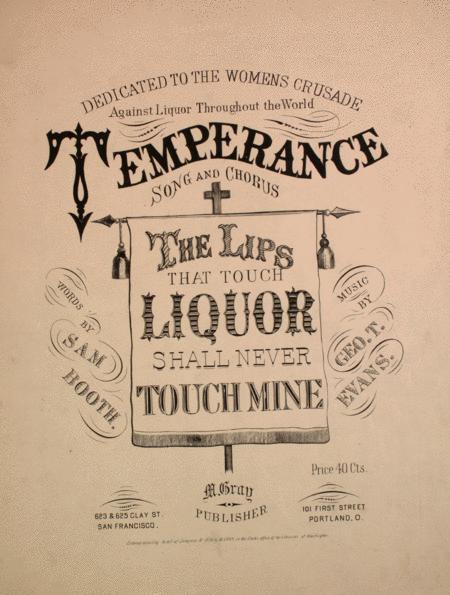
The Temperance Movement began in the 1840s and gained significant momentum through the rest of the century. Women were major leaders in the movement, with many pledging to never let the lips that touch liquor touch theirs. Unfortunately, this seemed to have little effect.

In the second half of the 19th century, an influx of immigrants from beer-loving countries, including Germany and Ireland, dramatically increased the consumption of beer in the United States. German brewers arrived to meet the demand. The most successful among these brewers was Adolphus Busch. As owner of Anheuser-Busch, he built a massive, vertically integrated operation that controlled every aspect of beer production and distribution, from mining the coal that fueled the brewery to building the refrigerated railcars to deliver the beer to Anheuser-Busch owned saloons.

Saloons were more than watering holes. They were hubs for the entire community and played important roles in the lives of patrons, especially when those patrons were recent immigrants.
Pictured here is a saloon in Wisconsin. Notice the little boy sitting at the table with his own beer glass. Boys often accompanied their fathers to saloons. Women and girls, however, were not welcome, and a woman who stepped in a saloon ruined her reputation.
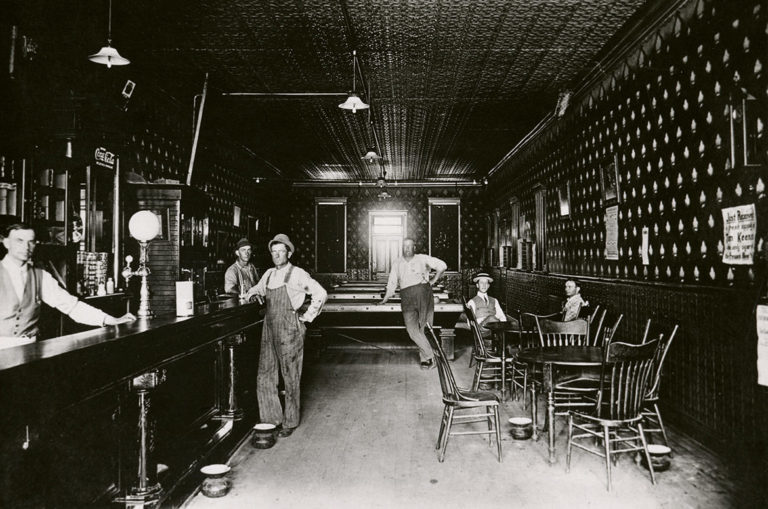
Here's another saloon, this one from Michigan. In a saloon, men could meet friends, participate in local politics, eat a free lunch, take a bath, find a job, get his mail and pawn his watch.
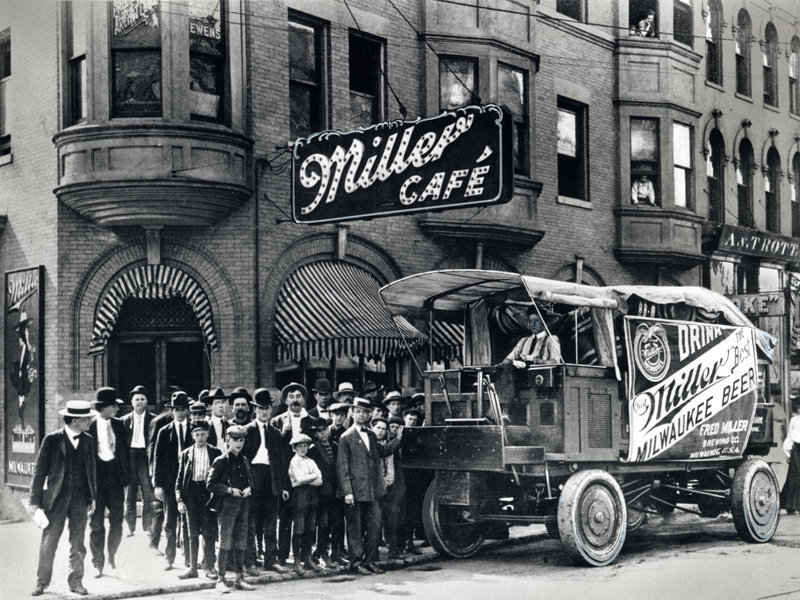
By 1900, most saloons were "tied houses." That is, they were tied to, if not actually owned by, breweries. In exchange for agreeing to sell only one brand of beer, a barkeeper would receive cash for his licensing fees, an inventory of glassware, and the furnishings for the saloon, including the pool tables and the mirrors on the walls.
This photo shows a Miller bar in Chicago.
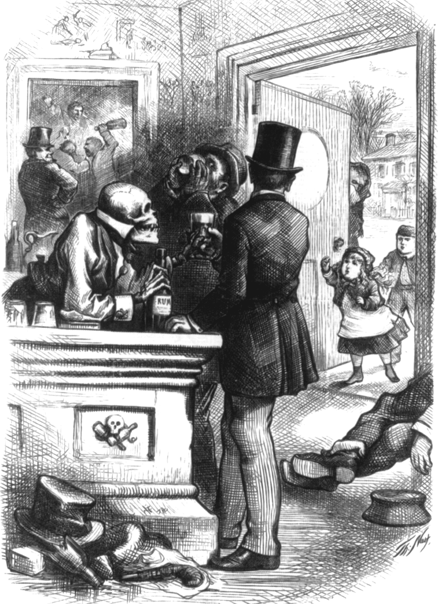
Temperance activists believed saloons were evil through and through. This cartoon, probably from the mid- to late-19th century, shows children desperately calling for the father, who stands in his natty coat and top hat at the bar. The bartender is a grinning skull, and another skull atop crossed bottles decorates in the bar. In the background, a brawl has broken out. Clearly, nothing good happens at a saloon!
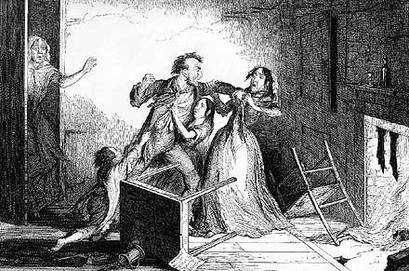
Women's rights activists in particular believed that alcohol was the cause of domestic violence. In this illustration, a drunken man takes a swing at his wife as his children cling to his legs. Many woman suffragists believed that prohibition would stop violence in the home.

The Anti-Saloon League became a force to be reckoned with by organizing all of the anti-alcohol groups. The League was led by Wayne Wheeler, a genial midwesterner that author Daniel Okrent noted resembled Ned Flanders. In fact, Wheeler was a passionate, focused organizer with a backbone of steel who could make or break political careers.

Breweries tried reframe beer as a health-giving, nourishing beverage. The Saskatoon Brewing Company tried to sell their beer as "liquid bread."
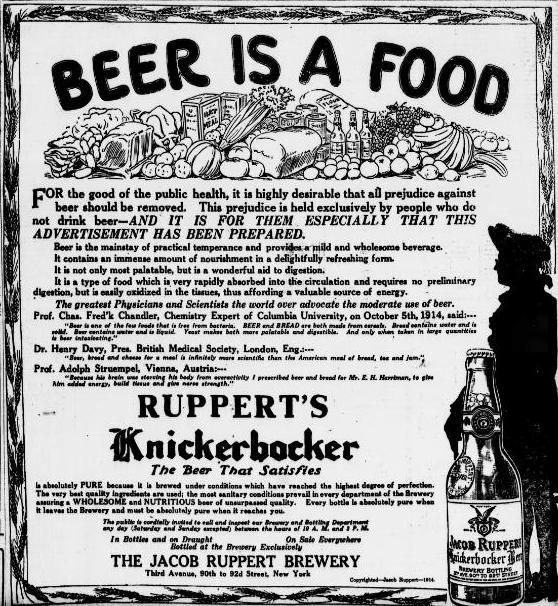
Knickerbocker Beer ran ads declaring "Beer is Food" and claiming that beer was not only "a wonderful aid to digestion" and a "valuable source of energy" but also "a mainstay of practical temperance."
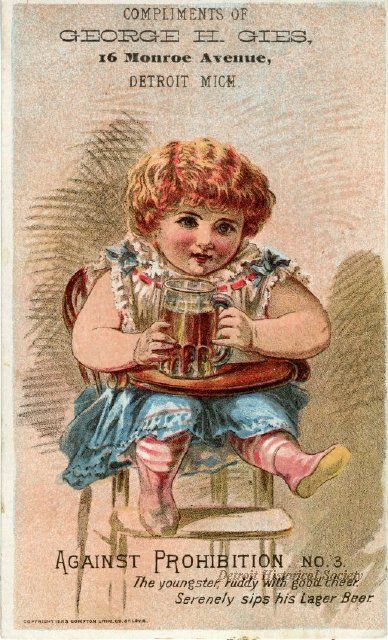
An Anti-Prohibition coalition produced this ad, showing a fat and happy baby drinking a stein of beer. No one was convinced by any of these campaigns.
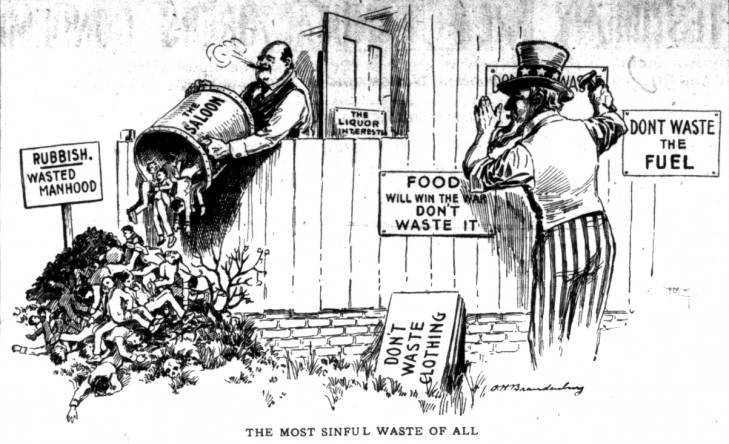
Once the United States entered World War I, a new argument began to be made against the alcohol industry: it wasted food and fuel. Americans were called upon to save food for the military, as well as for the British, French and Belgians. The Anti-Saloon League argued that the alcohol industry wasted tons of food and fuel.
In this cartoon, Uncle Sam puts up posters calling to save food and fuel while the saloon tosses out barrels not only of goods but also of "wasted manhood."
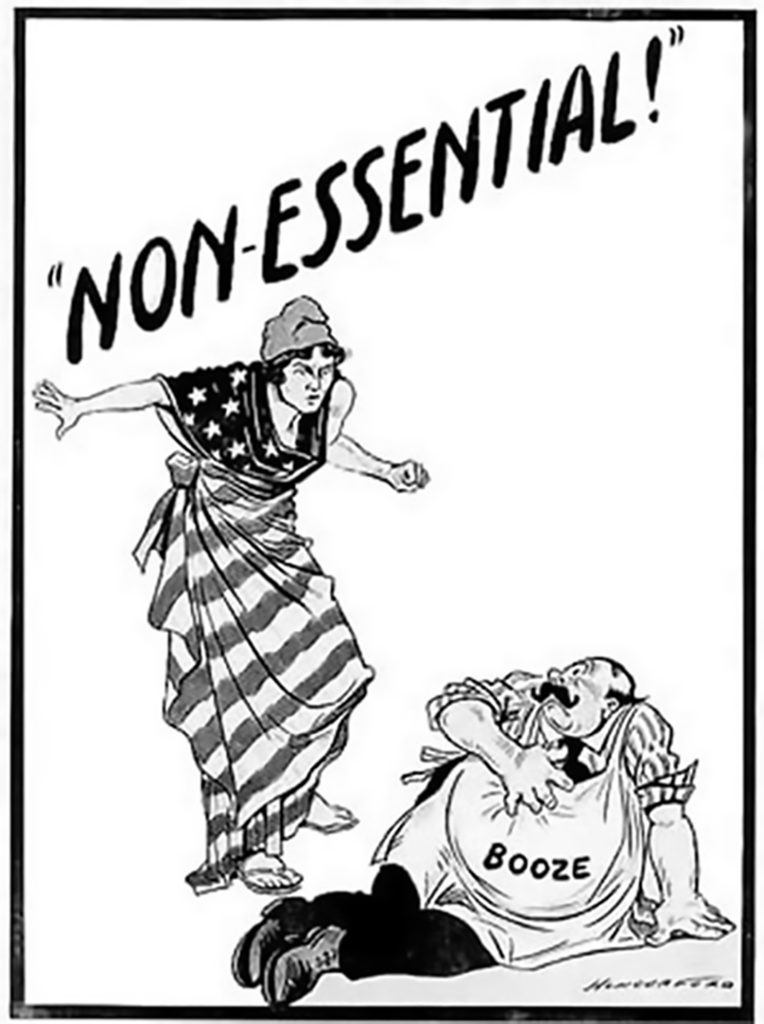
"Non-essential" was an insult during the war--anything non-essential to winning the war was useless and to be despised. Here a woman clad in an American flag hurls the word at a fat man identified as "Booze."

In late 1917, riding the wave of anti-alcohol sentiment, the Dry alliance pushed the 18th Amendment through Congress. It went to the states for ratification.
The Anti-Saloon League coordinated the ratification fight with an attack on the United States Brewers Association and an immigrant association it had long backed, the German American Alliance. The League convinced the Senate, and the American people, that the Alliance and the Brewers were under the control of the Kaiser and enemies of America.

A Senate sub-committee investigated the charges and seemed to prove all sorts of underhanded dealings. It's true that the Brewers had played dirty by bribing politicians and and paying off newspapers, but their aim had been to stop Prohibition, not lost the war to Germany.
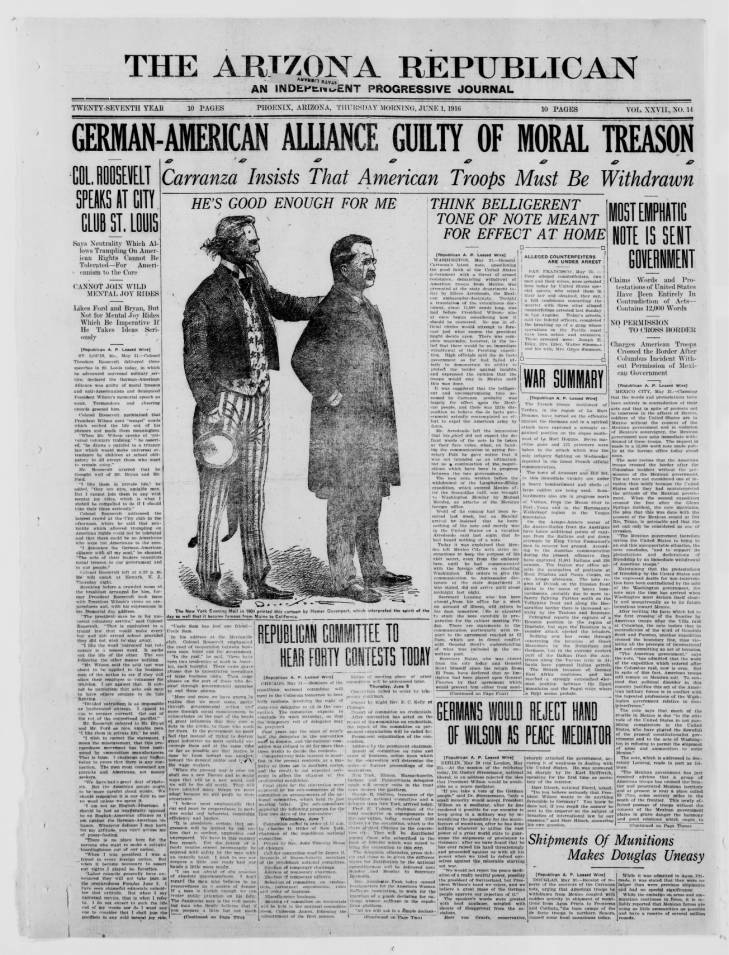
No charges ever came out of the subcommittee, but it didn't matter. Americans had found the Alliance and the Brewers guilty in the court of public opinion.

In this heady atmosphere, the 18th Amendment was rapidly ratified by all but two states on January 17, 1919. In one year, the amendment would go into effect.

The most important job for Congress was to pass legislation defining the terms of the 18th Amendment (what constituted an "intoxicating beverage"?) and creating enforcement mechanisms. The man responsible for the bill was Andrew John Volstead, a man so strait-laced he did yardwork in a coat and tie.

Volstead's bill passed in October, but then Wilson vetoed it. Americans were shocked. Wilson had never even committed on Prohibition. Congress, fed up with the president after the long and ugly League of Nations fight, overturned the veto two hours later.
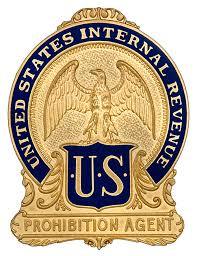
The Volstead Act called for the creation of a new Prohibition Unit to stamp out illegal alcohol. But the agents were to be paid measly salaries and the majority lacked any law enforcement training or experience. They were, inevitably, corrupt.
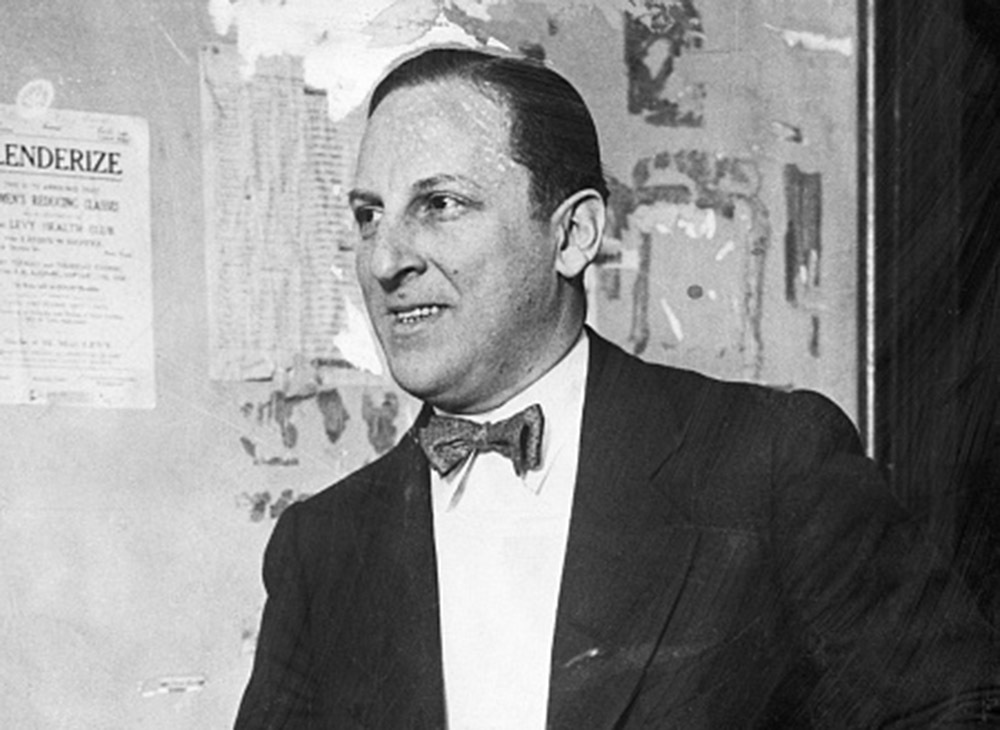
Criminals also spent 1919 getting ready for Prohibition. Arnold Rothstein, who providing the funds to throw the 1919 World Series, organized a comprehensive smuggling operation to bring liquor from Europe to the United States. He was only one of many crooks and bootleggers getting their ducks in a row for the following year.
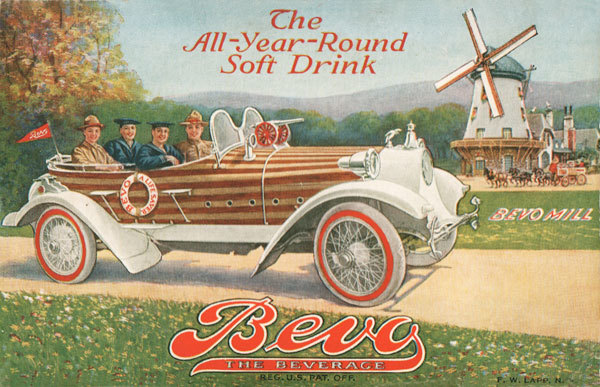
Brewers had to find a way to make do. Anheuser-Busch sold malt extract, brewer's yeast, and Bevo, a soft drink. It was not a success.
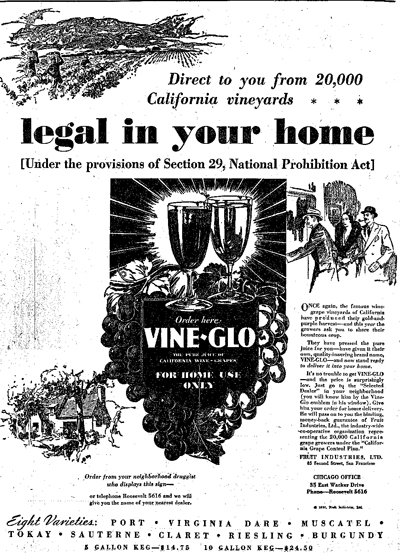
Companies also found creative ways to exploit loopholes in the Volstead Act. It was perfectly legal, for example, for wineries to condense grape juice down to semi-solid block known as a "grape brick." These bricks were sold along with careful instructions on how not to mix the juice with water to make wine. You wouldn't want people to accidentally break the law, now would you? Homebrew kits came with similar instructions.
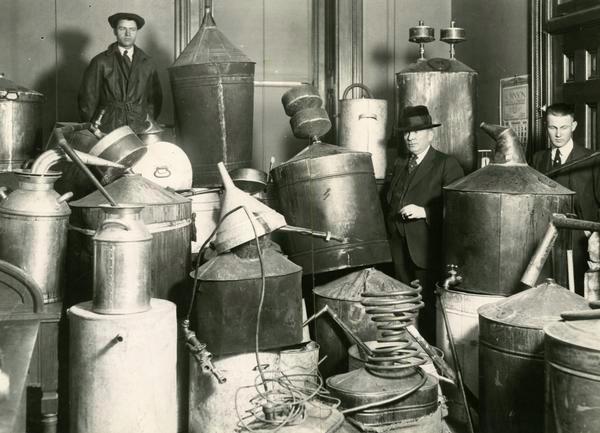
Moonshine operations sprang up across the country, with different regions developing their own recipes and reputations for quality or lack thereof. Pictured here are stills seized from moonshiners in Colorado. The metal was sold for scrap. It's likely by the time this photo was taken, the moonshiners had already begun their next batch.
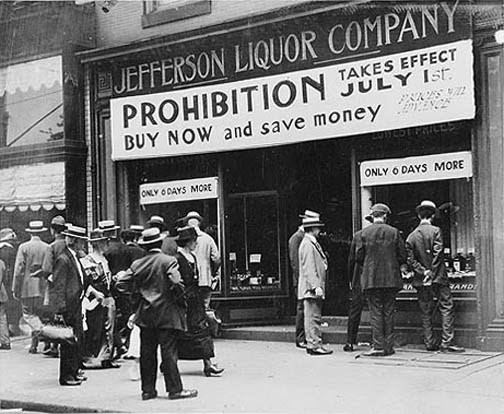
As the clock wound down to January 17, liquor stores began selling out their inventory. People stockpiled as much as they could afford--since, as far as they knew, alcohol would be illegal forever in the United States.
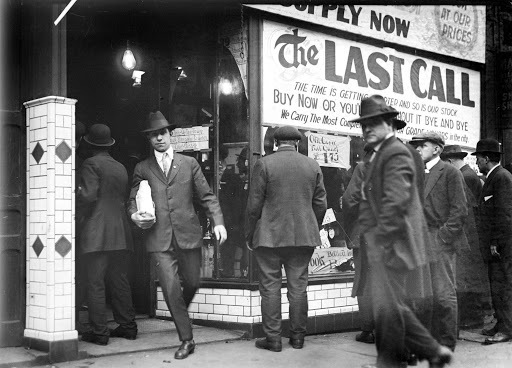
Here a line extends out of the store as men line up to buy a last few bottles. It was going to be a long, dry time.
Music from this Episode
"The Lips that Touch Liquor Shall Never Touch Mine, (https://www.youtube.com/watch?v=BSmfpm_y39Y)" by Sam Booth and George T. Evans, sung by the Women's Choir at Concordia College on February 2016 as part of the exhibit "Wet and Dry" at the Historical and Cultural Society of Clay County.
"Under the Anheuser-Busch," (https://www.youtube.com/watch?v=BOxrFGXQrzY), music by Harry von Tilzer, words by Andrew B. Serling, sung by Billy Murray. Charted at #2 in 1904.
"Close Up the Booze Shop (https://www.youtube.com/watch?v=awHPcvRN-XA)," music by Charles H. Gabriel, words by Harry Edwards, sung by the Rose Ensemble on their 2014 album "A Toast to Prohibition: All-American Songs of Temperance & Temptation.
"Molly and the Baby, Don't You Know, (https://archive.org/details/78_molly-and-the-baby-dont-you-know_homer-rodeheaver-h-s-taylor-j-b-herbert_gbia0028028a)" by H.S. Taylor and J.B. Herbert, sung by Homer Rodeheaver. Recorded in 1916.
"Alcoholic Blue (https://archive.org/details/78_alcoholic-blues_billy-murray-edward-laska-albert-von-tilzer_gbia0095847a)s," by Edward Laska and Albert von Tilzer, sung by Billy Murray. Recorded in 1919.
"How Are You Goin' to Wet Your Whistle? (When the Whole Darn World Goes Dry) (https://archive.org/details/78_how-are-you-goin-to-wet-your-whistle-when-the-whole-darn-world-goes-dry_billy-m_gbia0015508b)" by Francis Byrne, Frank McIntyre and Percy Wenrich, sung by Billy Murray. Recorded in 1919.
"You Cannot Make Your Shimmy Shake on Tea (https://www.youtube.com/watch?v=XchfsEPqr-w)," music by Irving Berlin, words by Irving Berlin and Rennold Wolf. Sung by Ann Wilson with piano by Frederick Hodges at the Annual West Coast Ragtime Festival in Sacramento, California, 2008.
"I'll See You in C-U-B-A, (https://archive.org/details/78_ill-see-you-in-c-u-b-a_jack-kaufman-berlin_gbia0002852b)" by Irving Berlin, sung by Jack Kaufman. Recorded in 1920.
"A Toast to Prohibition (https://www.youtube.com/watch?v=oiU72oJsNhc&app=desktop)," by Irving Berlin, sung by the Rose Ensemble on their 2014 album "A Toast to Prohibition: All-American Songs of Temperance & Temptation.

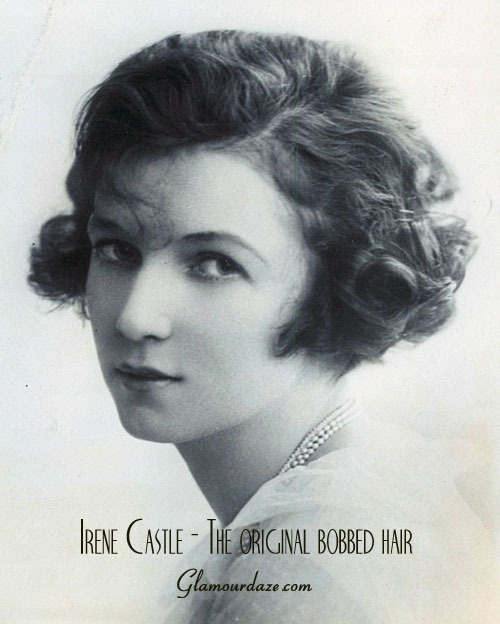 Actress Irene Castle cut her hair short in 1915 shortly before an operation for appendicitis. She liked it so much she never grew it back. In 1919, American women began following her lead.
Actress Irene Castle cut her hair short in 1915 shortly before an operation for appendicitis. She liked it so much she never grew it back. In 1919, American women began following her lead.
 Newspapers were full of articles about the trend, but since it hadn't yet spread beyond major East Coast cities, critics in the heartland held their criticism. That would not last.
Newspapers were full of articles about the trend, but since it hadn't yet spread beyond major East Coast cities, critics in the heartland held their criticism. That would not last.
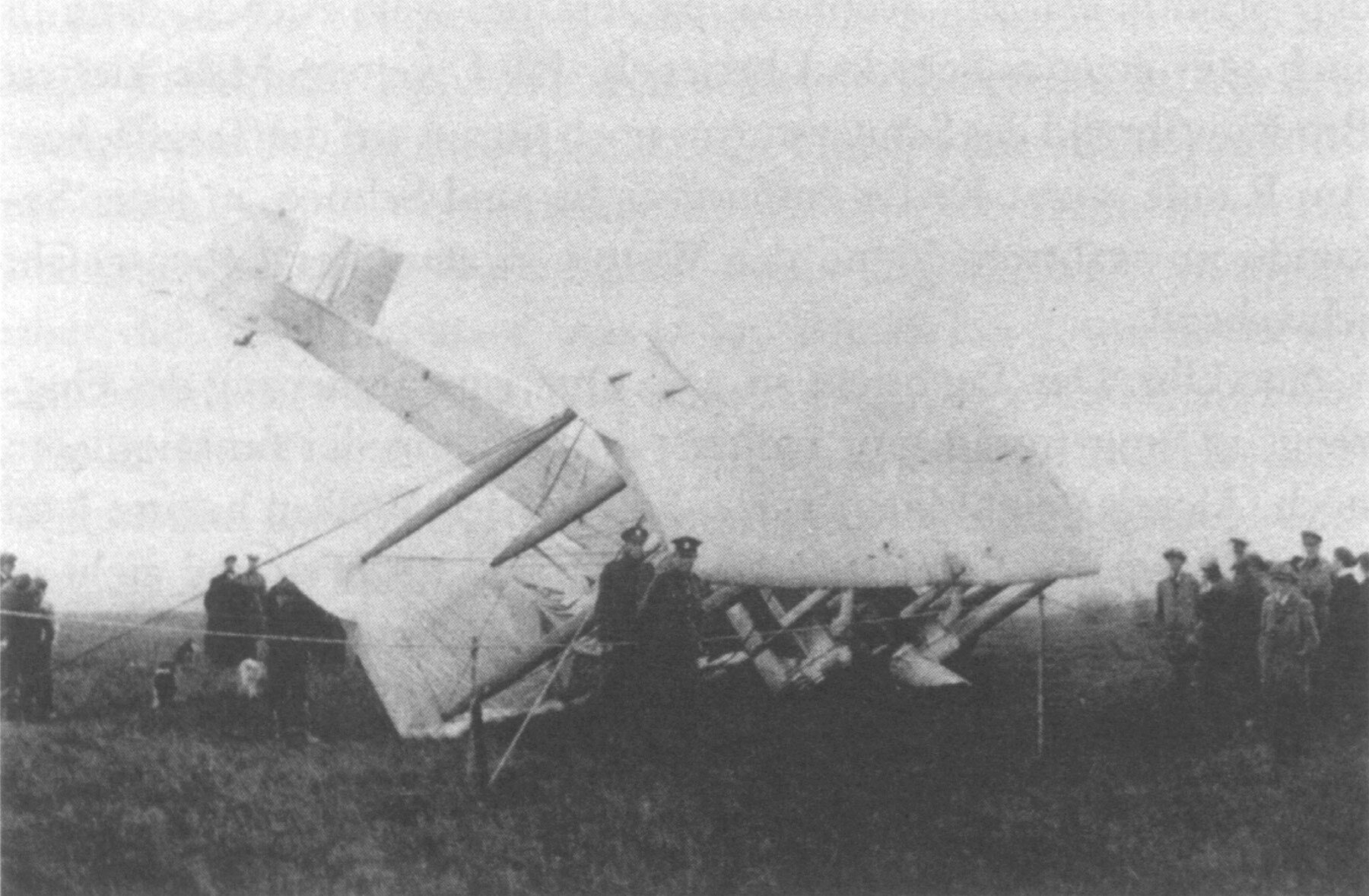 This photo shows Alcock and Brown shortly after landing in Ireland at the conclusion of their record-setting Trans-Atlantic flight. You can see that the plane has tipped nose-first into a bog. Alcock and Brown are the two men in front of the plane in dark hats and coats.
This photo shows Alcock and Brown shortly after landing in Ireland at the conclusion of their record-setting Trans-Atlantic flight. You can see that the plane has tipped nose-first into a bog. Alcock and Brown are the two men in front of the plane in dark hats and coats.
 An estimated 12,000 Native Americans served in World War I, many of them volunteers. They received high praise for their courage acting on behalf of a nation that refused to grant them citizenship, abused their children and kep their tribes in penury.
An estimated 12,000 Native Americans served in World War I, many of them volunteers. They received high praise for their courage acting on behalf of a nation that refused to grant them citizenship, abused their children and kep their tribes in penury.
 Emiliano Zapata was a skilled horseman, an inspirational leader and an unyielding revolutionary. He had no use for political theory and no patience for political compromise. He is still revered by many Mexicans for his unrelenting efforts for the poor and downtrodden.
Emiliano Zapata was a skilled horseman, an inspirational leader and an unyielding revolutionary. He had no use for political theory and no patience for political compromise. He is still revered by many Mexicans for his unrelenting efforts for the poor and downtrodden.
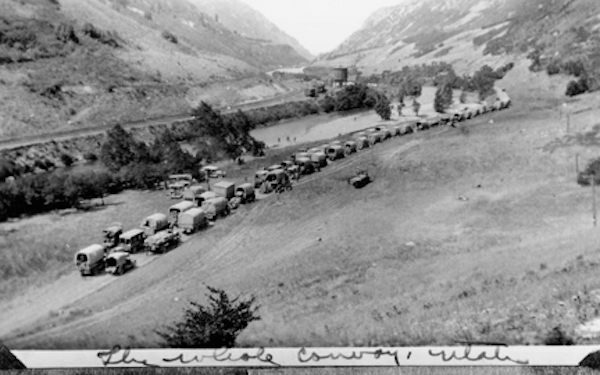 Concerned about the state of America's roads, the U.S. Army sent 80 trucks and cars to cross the country and evaluate the state of the roads. They averaged 6 miles per hour and at one point in the Utah desert had to be rescued by teams of horses. The experience planted a seed in one of the officers on the trip, an idea to create an efficient nationwide highway system.
Concerned about the state of America's roads, the U.S. Army sent 80 trucks and cars to cross the country and evaluate the state of the roads. They averaged 6 miles per hour and at one point in the Utah desert had to be rescued by teams of horses. The experience planted a seed in one of the officers on the trip, an idea to create an efficient nationwide highway system.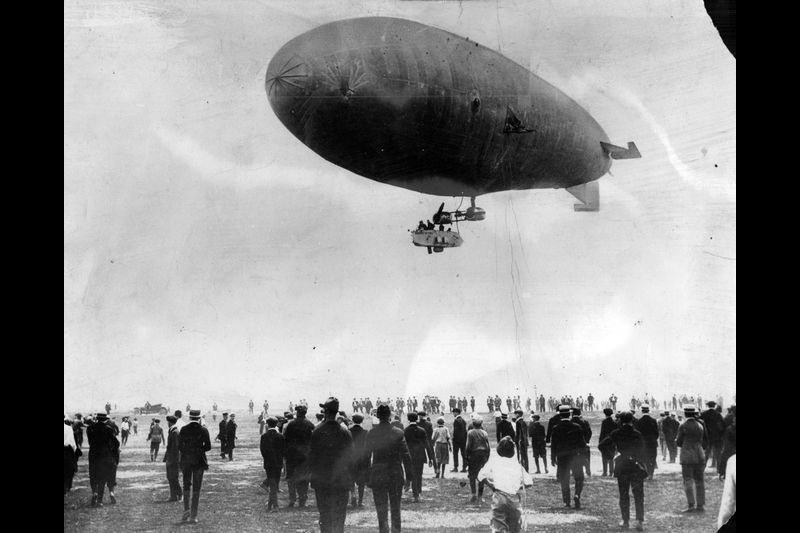 The Wingfoot Express took its maiden voyage around Chicago on July 21st, 1919. The 150-foot long airship was filled with hydrogen gas--lighter than air, but extremely flammable.
The Wingfoot Express took its maiden voyage around Chicago on July 21st, 1919. The 150-foot long airship was filled with hydrogen gas--lighter than air, but extremely flammable.
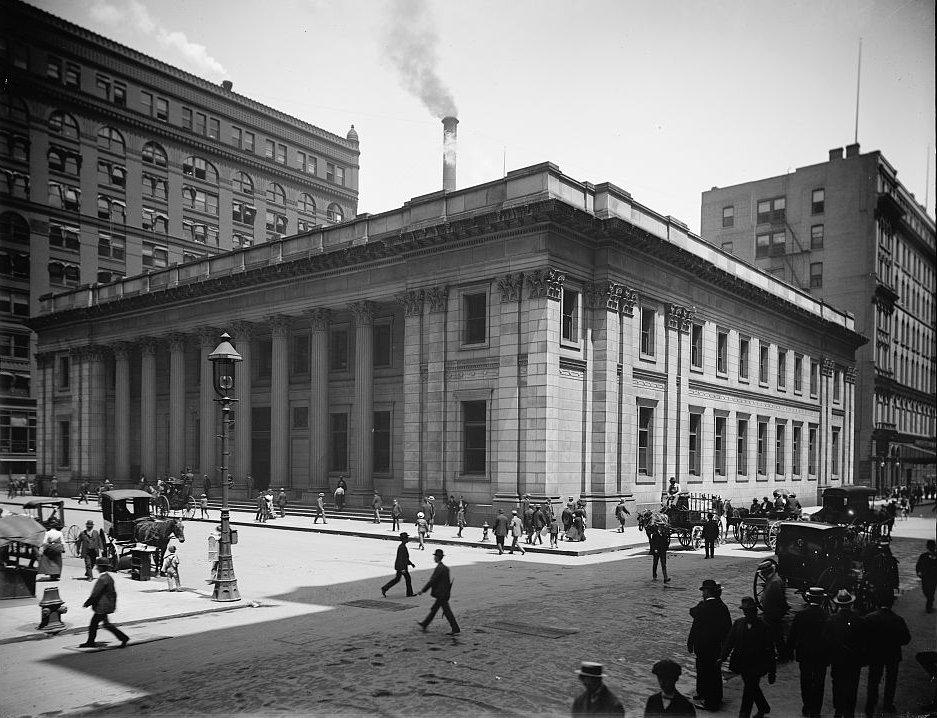 The dirigible caught fire in downtown Chicago, inside the Loop, right above the Illinois Trust and Savings Bank, at the corner of LaSalle Street and Jackson Boulevard. The entire ship was consumed in literally seconds. The five men aboard jumped and tried to inflate their parachutes, but only three were successful. One man, mechanic Carl Weaver, plunged through the skylight of the bank.
The dirigible caught fire in downtown Chicago, inside the Loop, right above the Illinois Trust and Savings Bank, at the corner of LaSalle Street and Jackson Boulevard. The entire ship was consumed in literally seconds. The five men aboard jumped and tried to inflate their parachutes, but only three were successful. One man, mechanic Carl Weaver, plunged through the skylight of the bank.
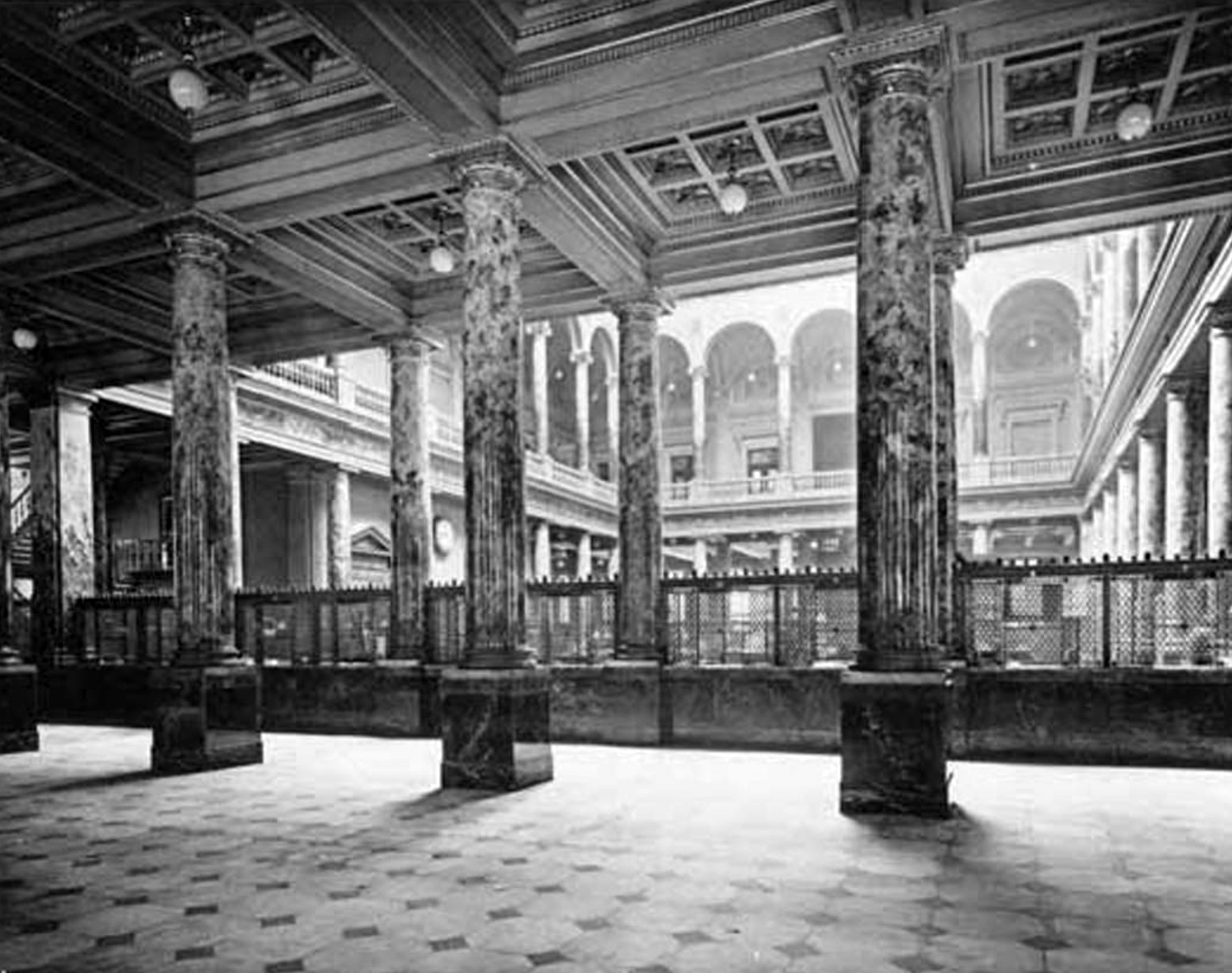 In this photo of the bank before the disaster, you can see how the interior was ringed by a circle of teller stations. They enclosed an area where typists, telegraphists, and other bank staff worked. For security purposes, this inner area could only be accessed through two gated entrances.
Flaming debris, including the engine and two full tanks, crashed through the skylight above this inner area, starting a massive fire and trapping employees inside.
In this photo of the bank before the disaster, you can see how the interior was ringed by a circle of teller stations. They enclosed an area where typists, telegraphists, and other bank staff worked. For security purposes, this inner area could only be accessed through two gated entrances.
Flaming debris, including the engine and two full tanks, crashed through the skylight above this inner area, starting a massive fire and trapping employees inside.
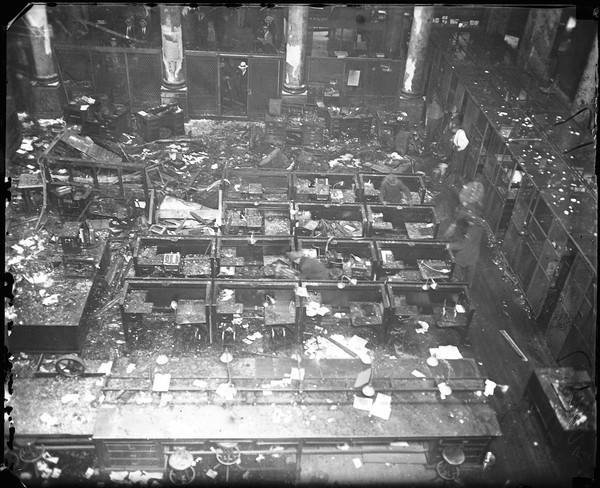 This image of the interior of the bank after the disaster gives some sense of the horror of those trapped inside. 13 people died in the crash, ten of them bank employees.
This image of the interior of the bank after the disaster gives some sense of the horror of those trapped inside. 13 people died in the crash, ten of them bank employees.
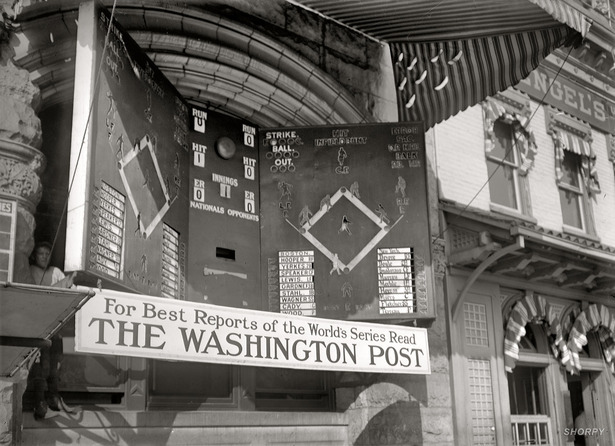
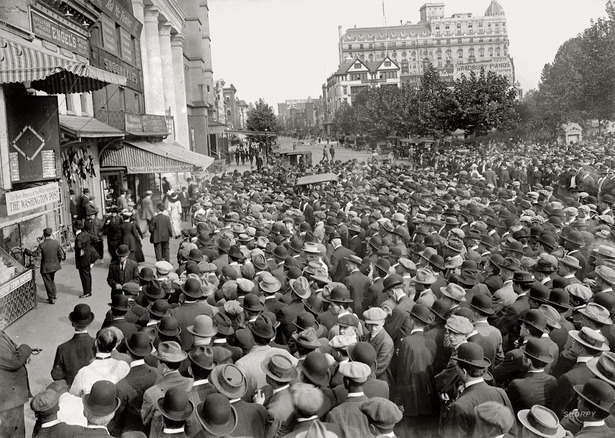 Before radio, fans had few ways to follow a live baseball game. Newspapers would receive game updates by telegraph and posted results in their windows. In 1912, the Washington Post invested in an elaborate scoreboard system complete with lights indicating balls, strikes, and position on the field. You can see here fans gathered to "watch" the 1912 World Series.
Before radio, fans had few ways to follow a live baseball game. Newspapers would receive game updates by telegraph and posted results in their windows. In 1912, the Washington Post invested in an elaborate scoreboard system complete with lights indicating balls, strikes, and position on the field. You can see here fans gathered to "watch" the 1912 World Series.
 The American and National Leagues kept player salaries low with the reserve clause, a provision in player contracts that kept players tied to one team and unable to negotiate higher salaries. The clause also made it difficult for new teams and new leagues to attract top-quality players. The Federal League, founded in 1913, tried to operate as a third major league and ended up suing the established leagues for operating an illegal monopoly.
This is an official scorecard of one Federal League Team, the Neward Peps.
The American and National Leagues kept player salaries low with the reserve clause, a provision in player contracts that kept players tied to one team and unable to negotiate higher salaries. The clause also made it difficult for new teams and new leagues to attract top-quality players. The Federal League, founded in 1913, tried to operate as a third major league and ended up suing the established leagues for operating an illegal monopoly.
This is an official scorecard of one Federal League Team, the Neward Peps.
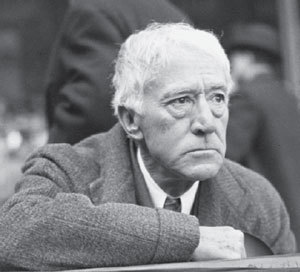 The case came before Judge Kenesaw Mountain Landis. It couldn't have landed on the desk of anyone more deeply invested in the game of baseball.
The case came before Judge Kenesaw Mountain Landis. It couldn't have landed on the desk of anyone more deeply invested in the game of baseball.
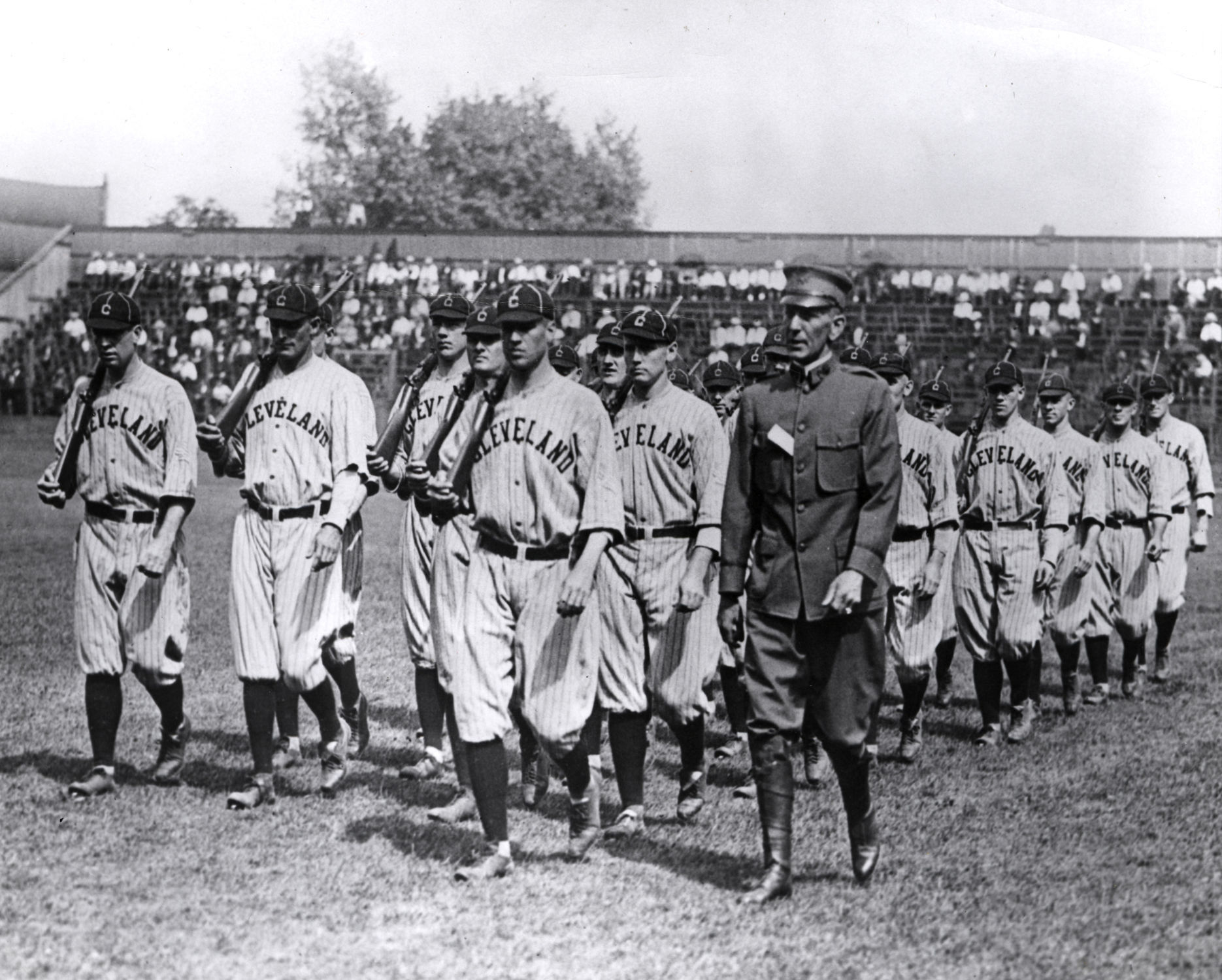 At the start of World War I, team owners were desperate to keep the game going and their players out of the trenches. One attempt to demonstrate their patriotism was the practice, seen here, of holding drill sessions with players before games. The War Department was not impressed and made players eligible for the draft after the 1917 World Series.
At the start of World War I, team owners were desperate to keep the game going and their players out of the trenches. One attempt to demonstrate their patriotism was the practice, seen here, of holding drill sessions with players before games. The War Department was not impressed and made players eligible for the draft after the 1917 World Series.
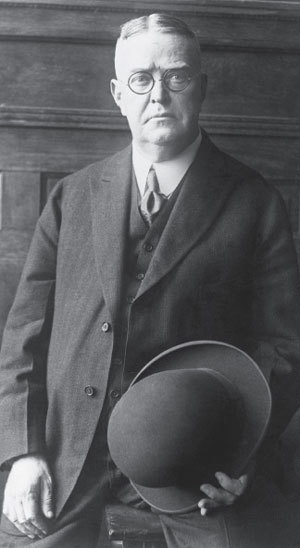 The president of the American League, Ban Johnson, suggested reserving 18 players for each team and conscripting the rest. No one was impressed by this plan.
The president of the American League, Ban Johnson, suggested reserving 18 players for each team and conscripting the rest. No one was impressed by this plan.
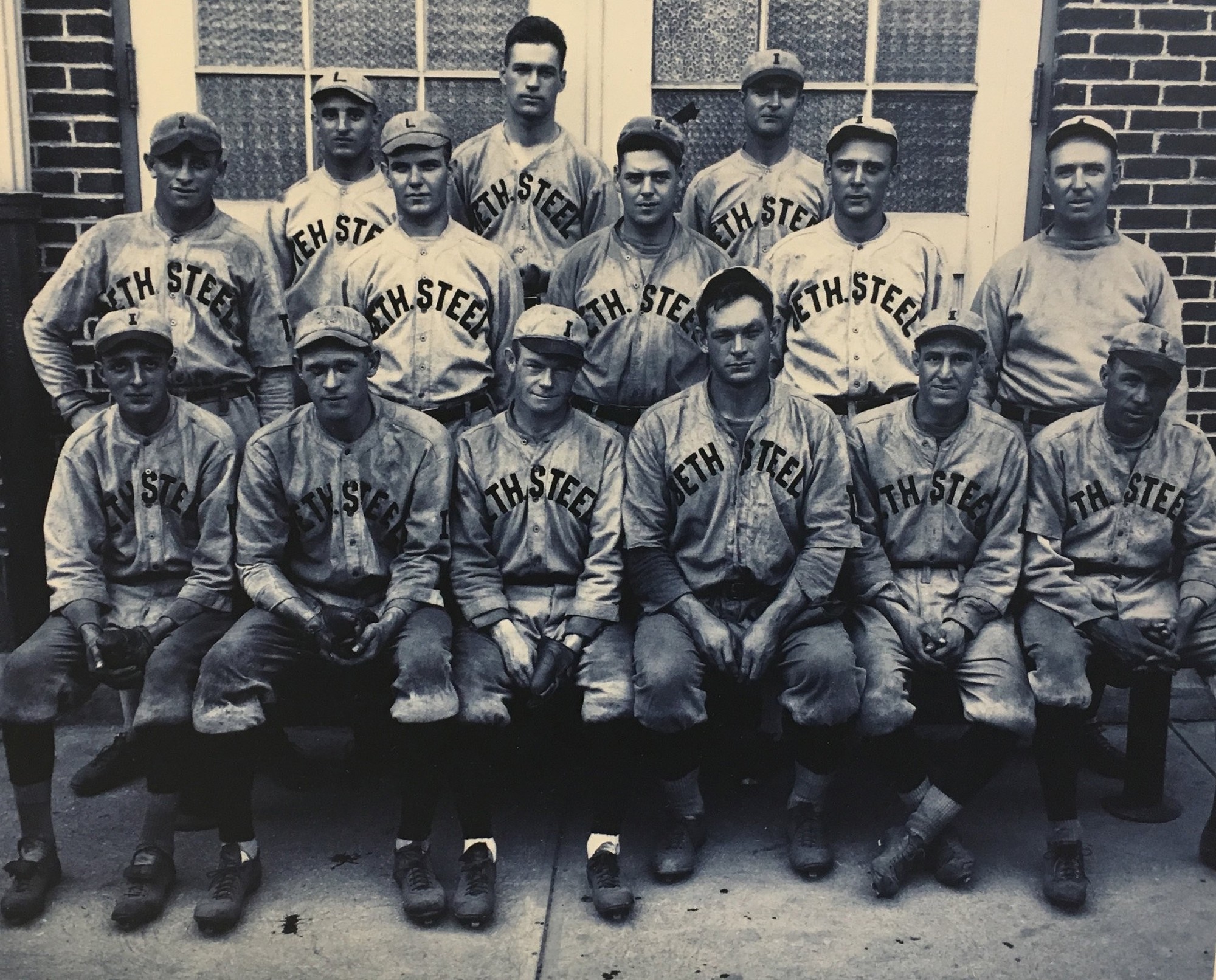 While more than one third of major league players enlisted, others went to work for factories in essential industries such as steel manufacturing or shipbuilding. The players spent far more time playing baseball for factory teams than painting or welding, and team owners worried that major league baseball would be run out of business by industrial ball.
While more than one third of major league players enlisted, others went to work for factories in essential industries such as steel manufacturing or shipbuilding. The players spent far more time playing baseball for factory teams than painting or welding, and team owners worried that major league baseball would be run out of business by industrial ball.
 Charles Comiskey, owner of the Chicago White Sox, denounced the factory team players as unpatriotic and sniffed that he wasn't sure he wanted them back on his team.
Charles Comiskey, owner of the Chicago White Sox, denounced the factory team players as unpatriotic and sniffed that he wasn't sure he wanted them back on his team.
 The 1918 World Series was held in early September at the request of the War Department, so the second, most deadly wave of the Spanish Flu pandemic was just getting started when baseball ended for the season. Nevertheless, at least some players took to the field in masks to prevent the spread of the disease.
I have been able to find out little about this photo. I don't know who was playing or the exact date. I wish I knew more--when and where the picture was taken would be a start. If I find out more, I will post it.
The 1918 World Series was held in early September at the request of the War Department, so the second, most deadly wave of the Spanish Flu pandemic was just getting started when baseball ended for the season. Nevertheless, at least some players took to the field in masks to prevent the spread of the disease.
I have been able to find out little about this photo. I don't know who was playing or the exact date. I wish I knew more--when and where the picture was taken would be a start. If I find out more, I will post it.
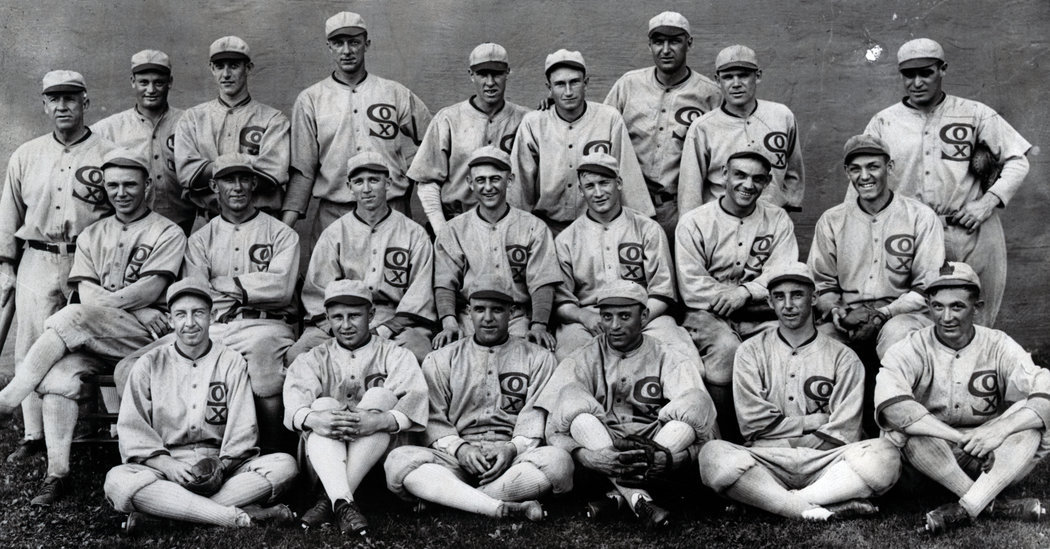 The 1919 White Sox had a fantastic team, with several top-notch players and one genuine superstar in Joe Jackson.
The 1919 White Sox had a fantastic team, with several top-notch players and one genuine superstar in Joe Jackson.
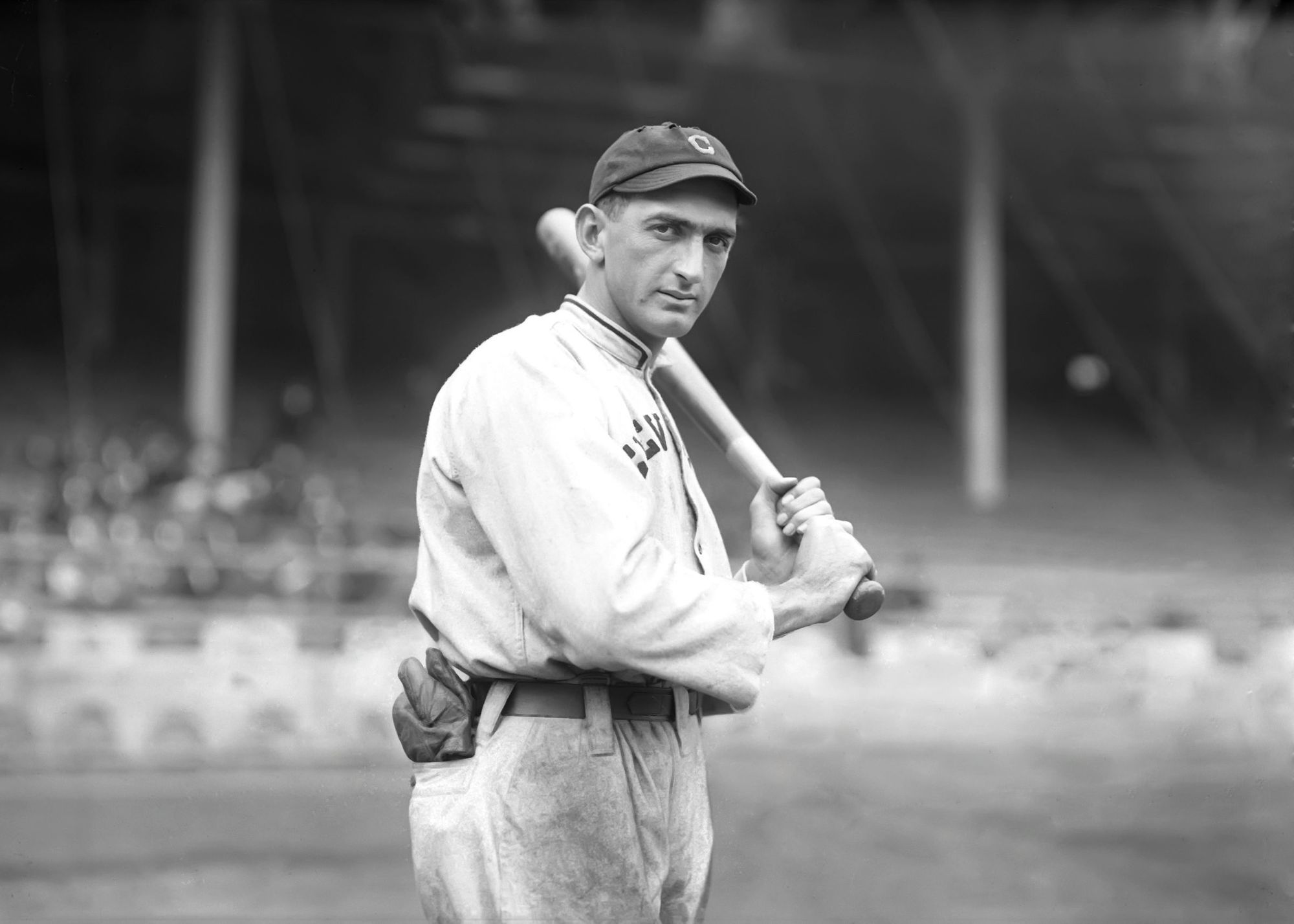 Shoeless Joe Jackson is one of baseball's all-time greatest players.
Shoeless Joe Jackson is one of baseball's all-time greatest players.
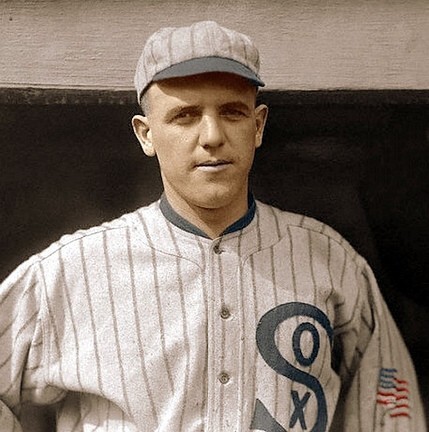 Eddie Cicotte was a fine pitcher and possibly the inventor of the knuckleball.
Eddie Cicotte was a fine pitcher and possibly the inventor of the knuckleball.
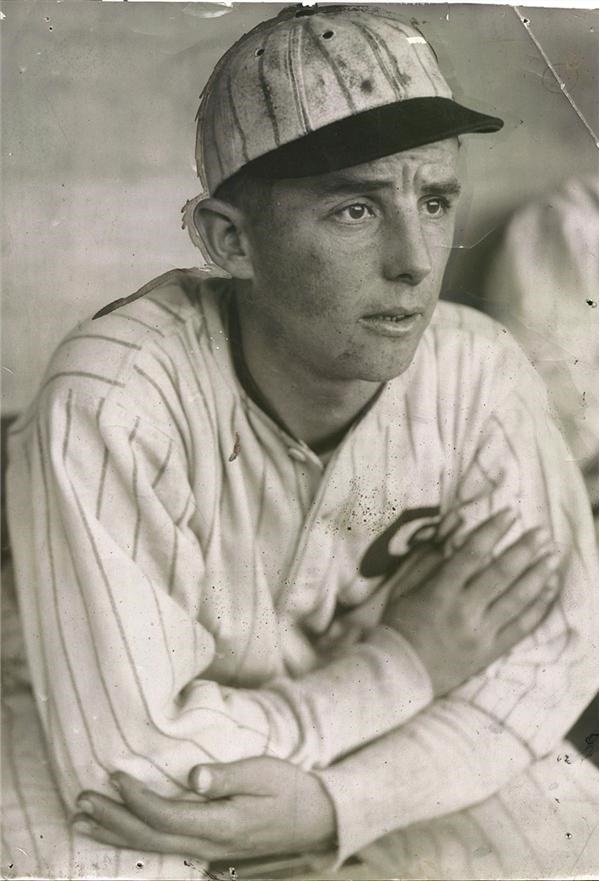 Lefty Williams was another strong pitcher for the White Sox.
Lefty Williams was another strong pitcher for the White Sox.
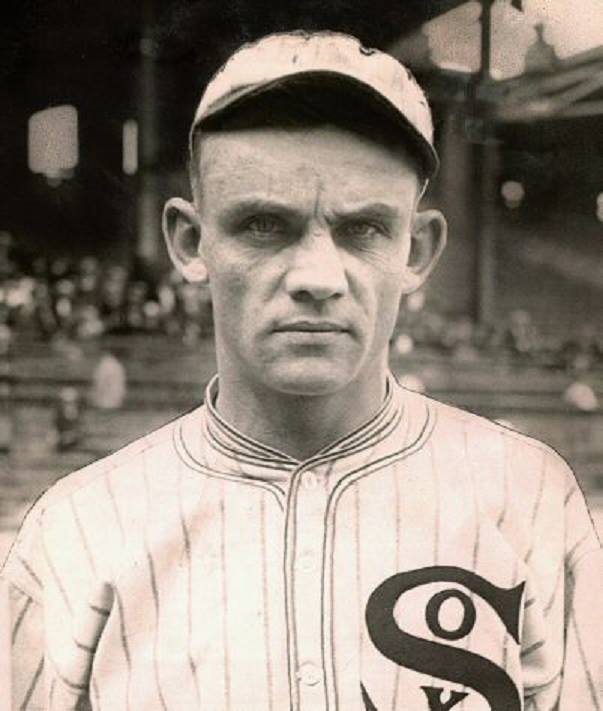 Chick Gandil, on other hand, was just average. On the other hand, he had a reputation as being crooked and multiple contacts with gambling organizations.
Chick Gandil, on other hand, was just average. On the other hand, he had a reputation as being crooked and multiple contacts with gambling organizations.
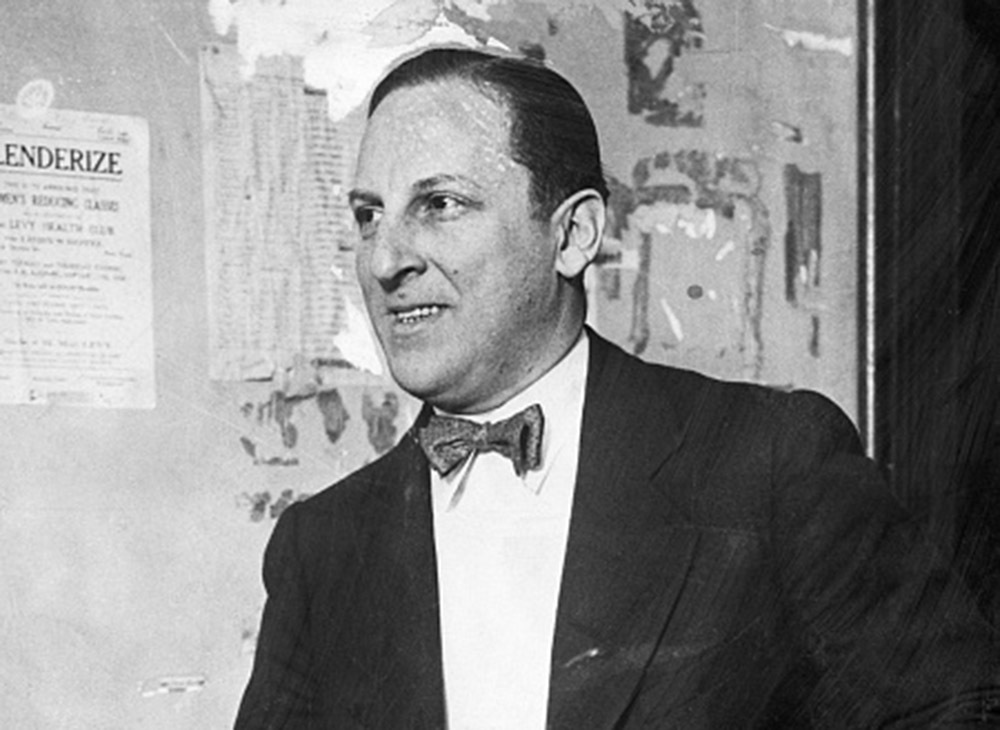 Gandil's connections went all the way back to New York underworld figure Arnold Rothstein. Thoughtful and scheming, Rothstein inspired multiple fictional representations, including Nathan Detroit in Guys and Dolls.
Gandil's connections went all the way back to New York underworld figure Arnold Rothstein. Thoughtful and scheming, Rothstein inspired multiple fictional representations, including Nathan Detroit in Guys and Dolls.
 The Cincinnati Reds beat the White Sox in the World Series five games to three. It was difficult to tell, watching the White Sox play, if some men on the team were playing to lose. Certainly, some of the players seemed off, but a player can have a run of bad luck. Other members of the team, such as the catcher, were sure something fishy was going on. Rumors swirled throughout the series and into the off-season that the the series had been fixed.
The Cincinnati Reds beat the White Sox in the World Series five games to three. It was difficult to tell, watching the White Sox play, if some men on the team were playing to lose. Certainly, some of the players seemed off, but a player can have a run of bad luck. Other members of the team, such as the catcher, were sure something fishy was going on. Rumors swirled throughout the series and into the off-season that the the series had been fixed.
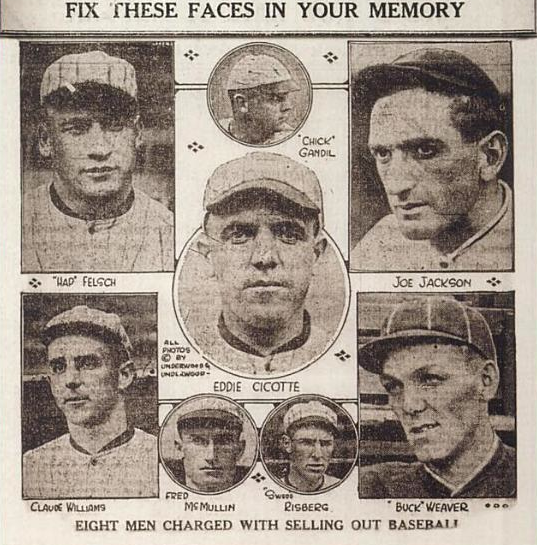 In the fall of 1920, the story broke open, the case went before the Cook County grand jury, and all eight players were indicted. Cicotte, Jackson and Williams confessed before the grand jury--after being told they would not be prosecuted if they told the truth. In fact, the person who made that promise, Charles Comiskey's attorney, had no power to make such a promise.
In the fall of 1920, the story broke open, the case went before the Cook County grand jury, and all eight players were indicted. Cicotte, Jackson and Williams confessed before the grand jury--after being told they would not be prosecuted if they told the truth. In fact, the person who made that promise, Charles Comiskey's attorney, had no power to make such a promise.
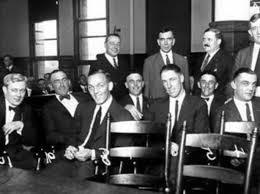 In the summer of 1921, the Black Sox went on trial for intent to injure the business of the Chicago White Sox. It was a difficult case to prove. Cicotte, Jackson and Williams retracted their confessions, and it proved impossible to get the gamblers in court. Ultimately, the men were acquitted.
In the summer of 1921, the Black Sox went on trial for intent to injure the business of the Chicago White Sox. It was a difficult case to prove. Cicotte, Jackson and Williams retracted their confessions, and it proved impossible to get the gamblers in court. Ultimately, the men were acquitted.
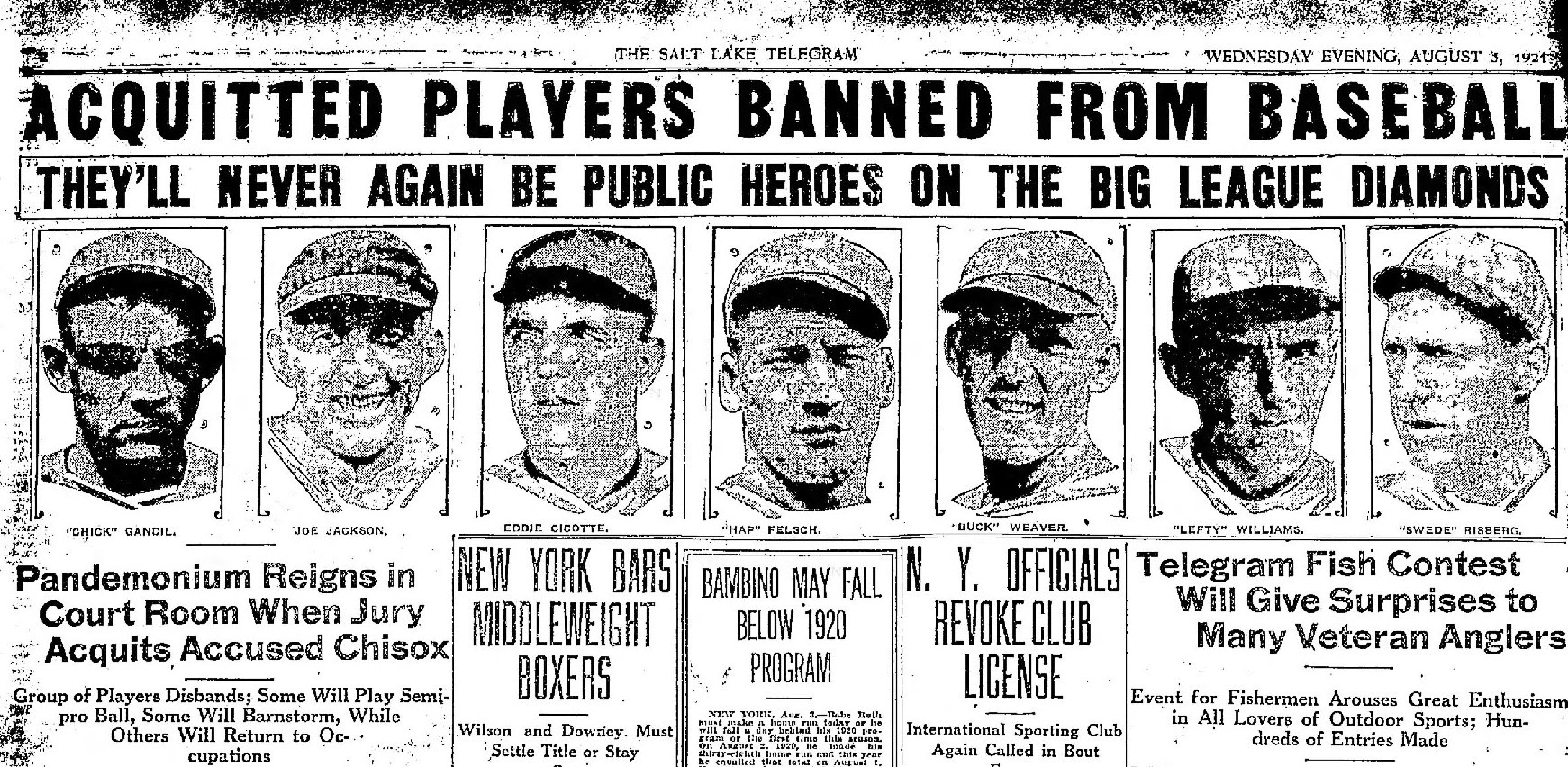 Despite their acquittal, Judge Landis, now the Commissioner of Baseball, declare the men banned from baseball for life. This had the intended effect of cleaning up the game, but was seen then and now as unjust.
Despite their acquittal, Judge Landis, now the Commissioner of Baseball, declare the men banned from baseball for life. This had the intended effect of cleaning up the game, but was seen then and now as unjust.
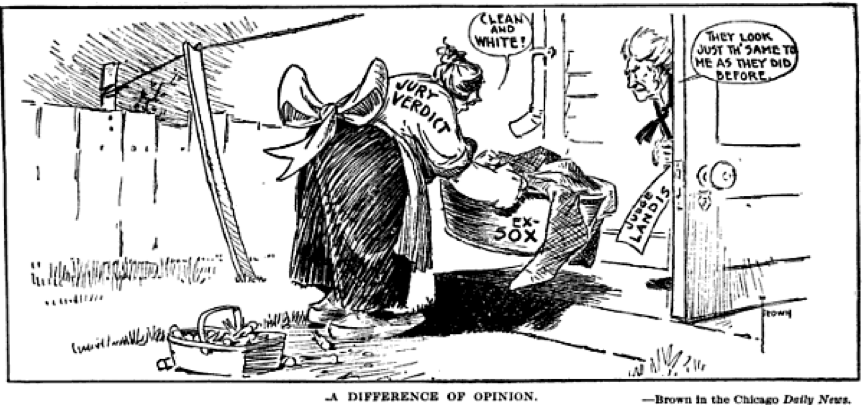 In this cartoon from 1921, a laundry woman, identified as the jury, shows Landis the White Sox uniforms and declares them "Clean and white!" Landis replies, "They look just th' same to me as they did before."
In this cartoon from 1921, a laundry woman, identified as the jury, shows Landis the White Sox uniforms and declares them "Clean and white!" Landis replies, "They look just th' same to me as they did before."
 A myth arose about the Black Sox, that they were more sinned against than sinning--hard working, blue-collar guys who just wanted to play ball but were unfairly treated by the owners, the lawyers, and the commissioner. The ultimate expression of this myth is the 1989 movie Field of Dreams. In this scene the spirits of the players emerge from an Iowan cornfield to again play baseball.
A myth arose about the Black Sox, that they were more sinned against than sinning--hard working, blue-collar guys who just wanted to play ball but were unfairly treated by the owners, the lawyers, and the commissioner. The ultimate expression of this myth is the 1989 movie Field of Dreams. In this scene the spirits of the players emerge from an Iowan cornfield to again play baseball.
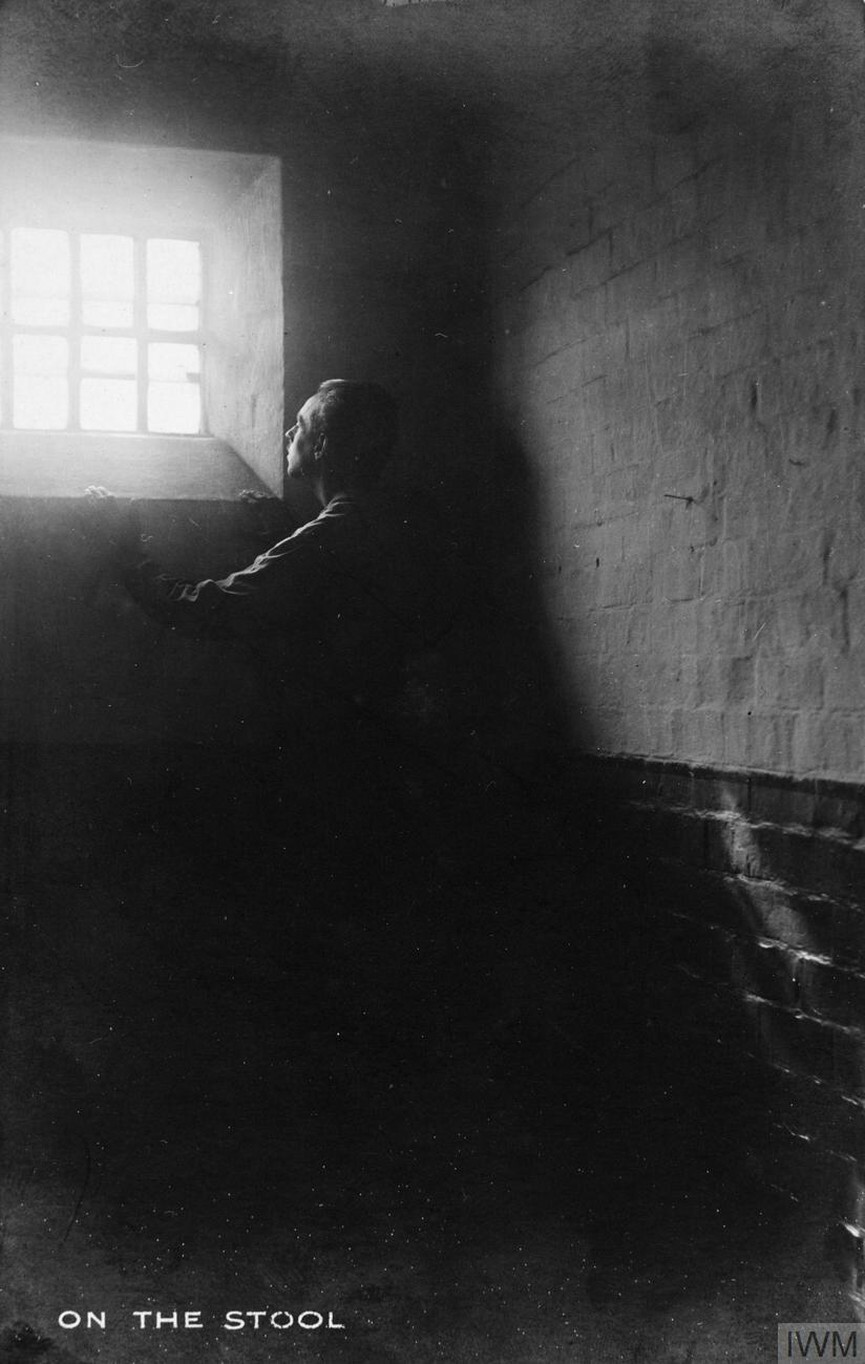 Conscientious objectors in Britain could be sent to prison if their claims were rejected by local tribunals. Many were sent to solitary confinement, while others were put to hard labor. This prisoner is standing on a stool to get a glimpse of the sky.
Conscientious objectors in Britain could be sent to prison if their claims were rejected by local tribunals. Many were sent to solitary confinement, while others were put to hard labor. This prisoner is standing on a stool to get a glimpse of the sky.
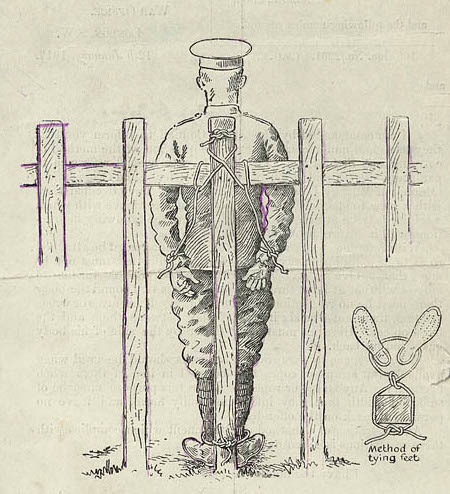 Some COs were subjected to field punishment. Field punishment was introduced in 1881 following the abolition of flogging in the Army--so I guess that's a good thing? The punishment was applied to soldiers who disobeyed orders, which included COs who had been denied official status and continued to refuse to fight. Men would be tied up to a fixed object for up to two hours a day.
Some COs were subjected to field punishment. Field punishment was introduced in 1881 following the abolition of flogging in the Army--so I guess that's a good thing? The punishment was applied to soldiers who disobeyed orders, which included COs who had been denied official status and continued to refuse to fight. Men would be tied up to a fixed object for up to two hours a day.
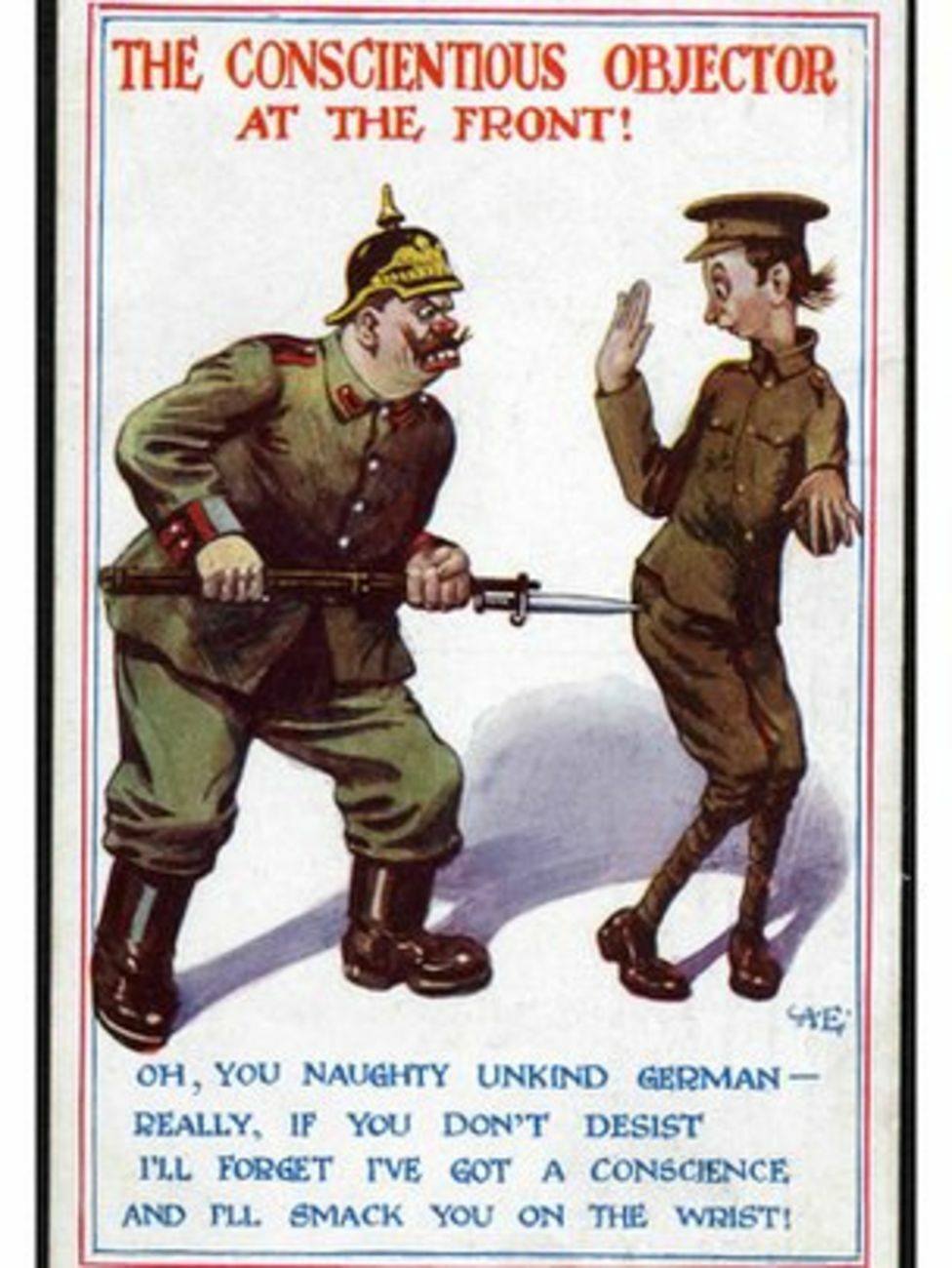 Conscientious objectors were despised by the general public and often mocked in political cartoons. In this image, as in many, COs were depicted as unmanly cowards--as "sissies" with a major dose of homophobia.
Conscientious objectors were despised by the general public and often mocked in political cartoons. In this image, as in many, COs were depicted as unmanly cowards--as "sissies" with a major dose of homophobia.
 Einstein's General Theory of Relativity describes space as curving in response to the mass of heavy objects. The amount of the curvature depends on the mass of the object, so the Sun will cause greater curvature than the Earth. The Earth orbits the Sun because it is caught in the well of the Sun's gravity.
Einstein's General Theory of Relativity describes space as curving in response to the mass of heavy objects. The amount of the curvature depends on the mass of the object, so the Sun will cause greater curvature than the Earth. The Earth orbits the Sun because it is caught in the well of the Sun's gravity.
 One of the problems with most explanations of relativity theory, including my own, is that they imply that massive objects sit on top of space. In fact, they existing within space. This graphic tries to represent this concept.
One of the problems with most explanations of relativity theory, including my own, is that they imply that massive objects sit on top of space. In fact, they existing within space. This graphic tries to represent this concept.
 Eddington arranged for two expeditions to view the 1919 eclipse. One went to Sobral in northern Brazil and the other to Príncipe in the Gulf of Guinea.
Eddington arranged for two expeditions to view the 1919 eclipse. One went to Sobral in northern Brazil and the other to Príncipe in the Gulf of Guinea.
 Príncipe is a gorgeous tropical island with misty mountains and white beaches. Eddington was amazed at the lush landscape and tropical fruits; he ate about a dozen bananas a day.
Príncipe is a gorgeous tropical island with misty mountains and white beaches. Eddington was amazed at the lush landscape and tropical fruits; he ate about a dozen bananas a day.
 Some fifteen years before Eddington arrived, the world learned that the cocoa plantations in Príncipe, which primarily supplied Cadbury's Chocolate, were worked by enslaved laborers kidnapped from Angola. The Portugese government promised to stamp out the practice, but political instability meant that these efforts received little attention. It is unclear in 1919 if Eddington saw free or enslaved laborers at work.
Some fifteen years before Eddington arrived, the world learned that the cocoa plantations in Príncipe, which primarily supplied Cadbury's Chocolate, were worked by enslaved laborers kidnapped from Angola. The Portugese government promised to stamp out the practice, but political instability meant that these efforts received little attention. It is unclear in 1919 if Eddington saw free or enslaved laborers at work.
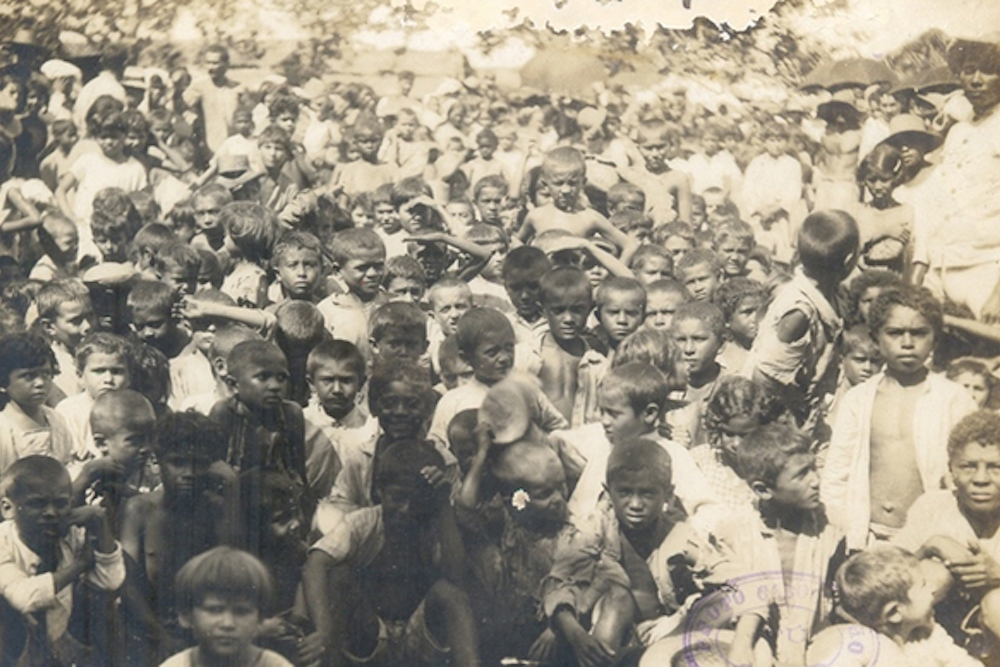 Northern Brazil, meanwhile, had been struck by a devastating drought in 1915 that killed hundreds of thousands of people. Many of those who survived fled the region, but the government feared they would cause instability if they arrived in Brazil's cities. What can only be called concentration camps were established and people were forced to live in them, as seen here. The drought was beginning to lessen in 1919, but the region was struggling.
Northern Brazil, meanwhile, had been struck by a devastating drought in 1915 that killed hundreds of thousands of people. Many of those who survived fled the region, but the government feared they would cause instability if they arrived in Brazil's cities. What can only be called concentration camps were established and people were forced to live in them, as seen here. The drought was beginning to lessen in 1919, but the region was struggling.
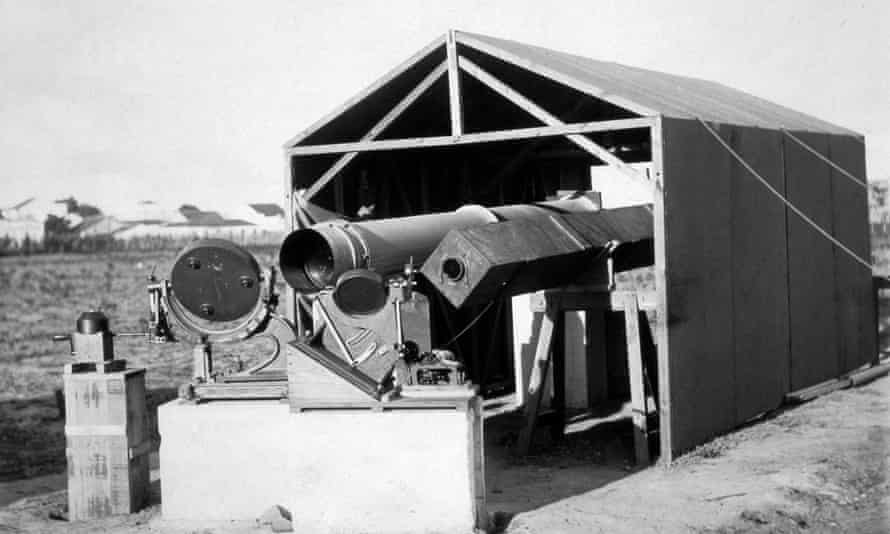 The eclipse observation teams arrived with telescopes, cameras, glass photographic plates, developer chemicals, motors, clocks, waterproof tents and more. Here you can see the set up in Sobral.
The eclipse observation teams arrived with telescopes, cameras, glass photographic plates, developer chemicals, motors, clocks, waterproof tents and more. Here you can see the set up in Sobral.
 The light from the Hyades had been traveling about 153 years when it reached Eddington's telescope. Scientists now know that at least one of the stars within the cluster has three planets, one roughly the size and composition of the Earth. It is considered unlikely any advanced life exists on the planet, but anything is possible.
The light from the Hyades had been traveling about 153 years when it reached Eddington's telescope. Scientists now know that at least one of the stars within the cluster has three planets, one roughly the size and composition of the Earth. It is considered unlikely any advanced life exists on the planet, but anything is possible.
 This is one of Eddington's original photos of the eclipse. It has been scanned, and the stars that he was measuring are circled and labeled. You can see that the stars are incredibly dim and hard to spot even when pointed out.
This is one of Eddington's original photos of the eclipse. It has been scanned, and the stars that he was measuring are circled and labeled. You can see that the stars are incredibly dim and hard to spot even when pointed out.
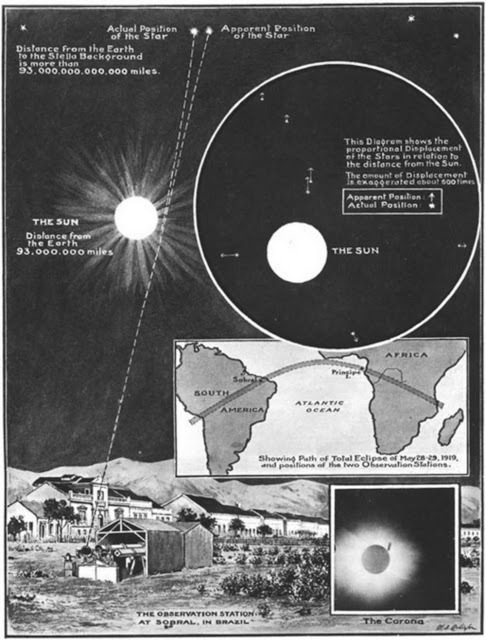 The announcement by Eddington and Dyson caught the world's attention and newspapers struggled to make sense of the discovery. The Illustrated London News did a fairly good job of explaining what the astronomers were looking for.
The announcement by Eddington and Dyson caught the world's attention and newspapers struggled to make sense of the discovery. The Illustrated London News did a fairly good job of explaining what the astronomers were looking for.
 The New York Times, on the other hand, was more bombastic that clear. I can only imagine readers were perplexed by this announcement, which seems at pains to tell everyone that (a) no one understands what has happened but (b) you don't need to worry about it. I suppose with everything else going on, readers did like having that reassurance.
The bit about "A Book for 12 Wise Men" refers to a story that circulated widely at the time. Supposedly, Einstein had gone to a publisher about writing about book about his theory, but the publisher replied that since only about 12 wise men in all the world would understand it, there was no point in publishing. This story seems to have been completely made up but got a lot of traction in the years to come. (Also, apparently only men of science were more or less agog. No word on the women of science, who, while small in number, did exist.)
The New York Times, on the other hand, was more bombastic that clear. I can only imagine readers were perplexed by this announcement, which seems at pains to tell everyone that (a) no one understands what has happened but (b) you don't need to worry about it. I suppose with everything else going on, readers did like having that reassurance.
The bit about "A Book for 12 Wise Men" refers to a story that circulated widely at the time. Supposedly, Einstein had gone to a publisher about writing about book about his theory, but the publisher replied that since only about 12 wise men in all the world would understand it, there was no point in publishing. This story seems to have been completely made up but got a lot of traction in the years to come. (Also, apparently only men of science were more or less agog. No word on the women of science, who, while small in number, did exist.)
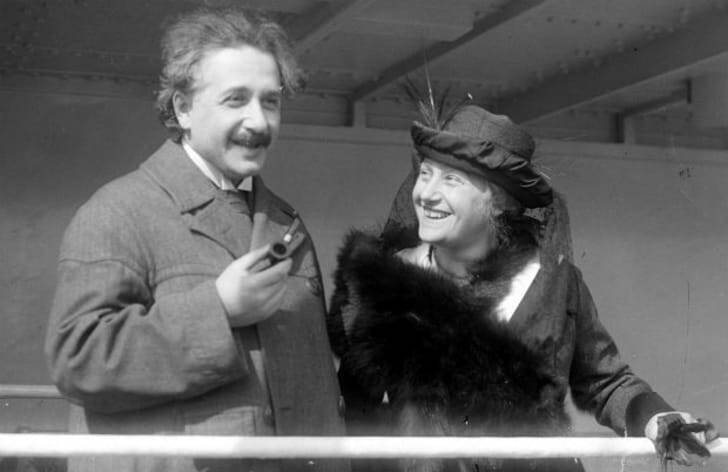 Einstein made his first visit to Britain in 1921. He toured the United States first (a tour he found exhausting and "horrendous" because of all of the press attention) and then journeyed to the UK on his way back to Germany. In this image, he and his wife Elsa stand on deck during their journey. Einstein met Eddington for the first time on this trip, but I haven't found any photos of the occasion.
Einstein made his first visit to Britain in 1921. He toured the United States first (a tour he found exhausting and "horrendous" because of all of the press attention) and then journeyed to the UK on his way back to Germany. In this image, he and his wife Elsa stand on deck during their journey. Einstein met Eddington for the first time on this trip, but I haven't found any photos of the occasion.
 Einstein made multiple visits to Britain over the years and often met with Eddington. Here the two men sit and talk in 1930. I don't know where this photo was taken, but I wonder if they are at Eddington's house in Cambridge. His sister Winifred found great joy in her garden.
Einstein made multiple visits to Britain over the years and often met with Eddington. Here the two men sit and talk in 1930. I don't know where this photo was taken, but I wonder if they are at Eddington's house in Cambridge. His sister Winifred found great joy in her garden.
 The Theory of Relativity as been confirmed and reconfirmed in the last 100 years. The distortion of light by large masses is well known today and described as "gravitational lensing." It has become an important tool in modern astronomy because it allows astronomers to study objects that are incredibly far away. It also provides a way to measure the mass of distant galaxies and therefore to estimate the amount of invisible dark matter within. You can read more about this in the sources I've linked to below.
This image shows one galaxy distorted into a ring that appears around a galaxy positioned directly in front of it.
The Theory of Relativity as been confirmed and reconfirmed in the last 100 years. The distortion of light by large masses is well known today and described as "gravitational lensing." It has become an important tool in modern astronomy because it allows astronomers to study objects that are incredibly far away. It also provides a way to measure the mass of distant galaxies and therefore to estimate the amount of invisible dark matter within. You can read more about this in the sources I've linked to below.
This image shows one galaxy distorted into a ring that appears around a galaxy positioned directly in front of it.
 Here is another example of lensing. The blue curve is the light of a galaxy located behind the bright yellow galaxies, its light distorted by their mass.
Here is another example of lensing. The blue curve is the light of a galaxy located behind the bright yellow galaxies, its light distorted by their mass.
 This amazing image from the Hubble telescope shows multiple examples of lensing. The stretched out and arced lines of light are distorted images of far-away galaxies. Some galaxies might even appear more than once as their light is split and sent along different paths. Eddington could have had no idea how dramatic the effects of lensing could be, or how important they are for modern astronomers.
This amazing image from the Hubble telescope shows multiple examples of lensing. The stretched out and arced lines of light are distorted images of far-away galaxies. Some galaxies might even appear more than once as their light is split and sent along different paths. Eddington could have had no idea how dramatic the effects of lensing could be, or how important they are for modern astronomers.
 Arthur Stanley Eddington was born in 1882 to a devout Quaker family. He would remain a faithful member of the Society of Friends his entire life and shared their deep conviction in pacifism and opposition to war.
Arthur Stanley Eddington was born in 1882 to a devout Quaker family. He would remain a faithful member of the Society of Friends his entire life and shared their deep conviction in pacifism and opposition to war.
 Eddington's first total solar eclipse was in October 1912. This map show the path of totality. Eddington was stationed with several teams from around the world in Passa Quatro, Brazil. Unfortunately, the eclipse was rained out--an all-too-common occurance.
Eddington's first total solar eclipse was in October 1912. This map show the path of totality. Eddington was stationed with several teams from around the world in Passa Quatro, Brazil. Unfortunately, the eclipse was rained out--an all-too-common occurance.
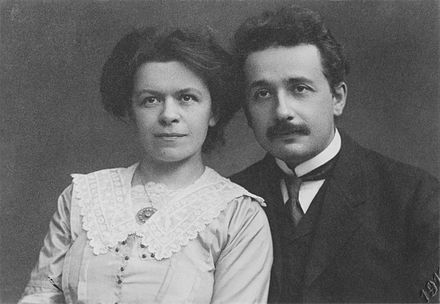 While in Brazil, Eddington was likely told about the work of the still-obscure German physicist Albert Einstein. Einstein, seen here with his first wife Mileva, had already published several groundbreaking papers and had begun his work on general relativity. In 1913, he moved to Berlin to teach at the University of Berlin and become the director of the Kaiser Wilhelm Institute for Physics.
While in Brazil, Eddington was likely told about the work of the still-obscure German physicist Albert Einstein. Einstein, seen here with his first wife Mileva, had already published several groundbreaking papers and had begun his work on general relativity. In 1913, he moved to Berlin to teach at the University of Berlin and become the director of the Kaiser Wilhelm Institute for Physics.
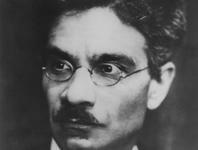 Einstein discussed his Theory of General Relativity with the German astronomer Erwin Freundlich, seen here looking like the villian in an early silent movie. Freundlich passed the ideas on Charles Dillon Perrine, who most likely described them Eddington. Freundlich mounted an expedition to observe the 1914 eclipse in Russia to prove Einstein's predictions on the deflection of starlight.
Einstein discussed his Theory of General Relativity with the German astronomer Erwin Freundlich, seen here looking like the villian in an early silent movie. Freundlich passed the ideas on Charles Dillon Perrine, who most likely described them Eddington. Freundlich mounted an expedition to observe the 1914 eclipse in Russia to prove Einstein's predictions on the deflection of starlight.
 The 1914 eclipse passed over Sweden and Norway, into Russia, and down through the Ottoman Empire and Persia. Astronomers believed they would have the best conditions in Ukraine and Crimea, and many of them set up there in late summer 1914.
The 1914 eclipse passed over Sweden and Norway, into Russia, and down through the Ottoman Empire and Persia. Astronomers believed they would have the best conditions in Ukraine and Crimea, and many of them set up there in late summer 1914.
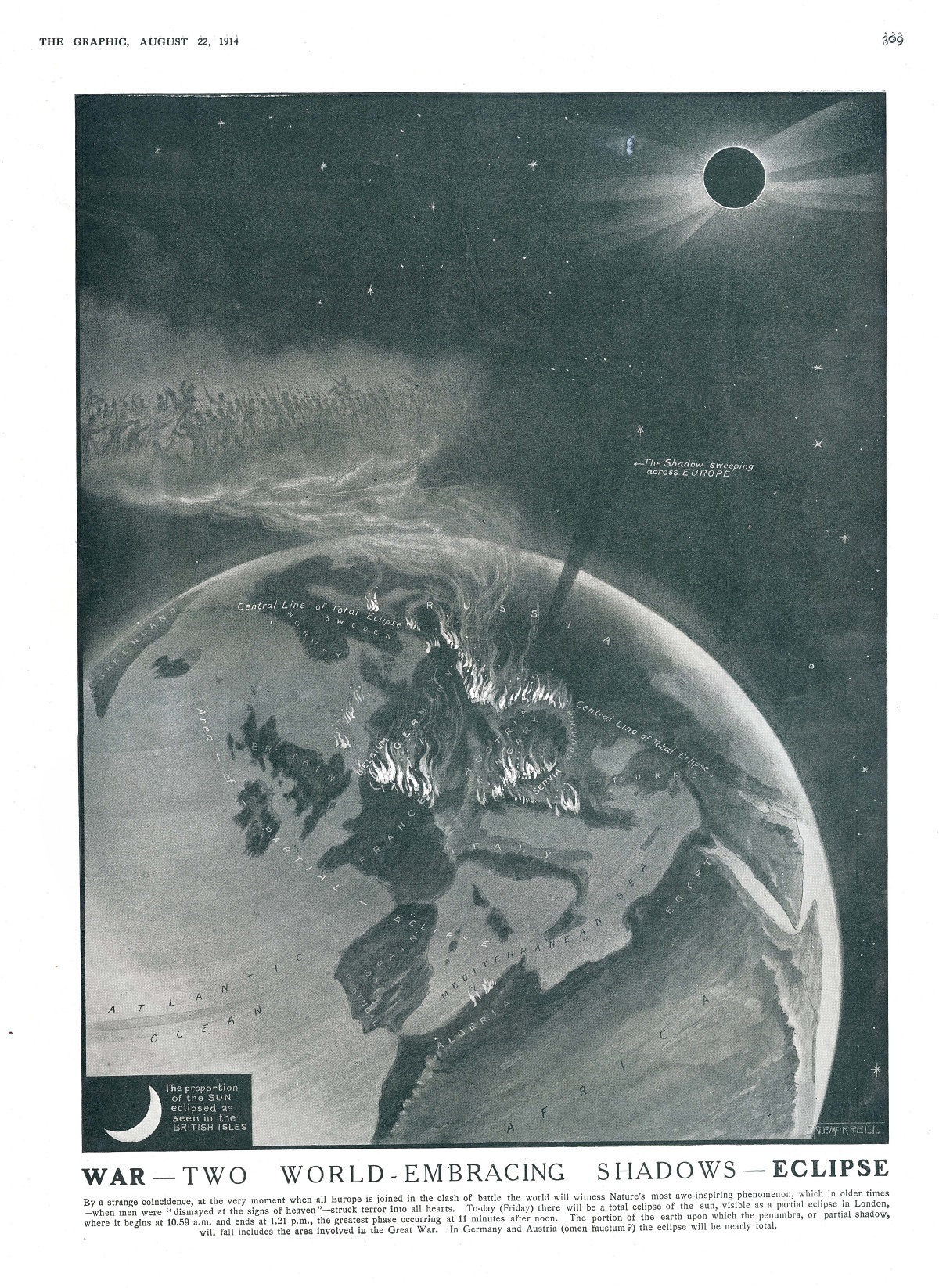 War broke out before the eclipse took place. Freundlich and his German team were detained by Russian officials. British and American teams were able to go on with their work, but again, the eclipse was rained out. The teams then face the difficult task of getting out of war-time Russia. They all had to leave their equipment behind, and getting it back was a lingering headache. The American team didn't receive their telescope and cameras until 1918.
This fascinating graphic from the weekly British illustrated newspaper The Graphic combines a map of the path of totality with a map of the conflict in Belgium and northern France, Serbia, and the Russian border. The graphic ominously describes "The Shadow Sweeping Across Europe."
Allied outrage at German atrocities in Belgium prompted a spirited defense of German actions by scientists, writers, artists and theologians including Fritz Haber. The "Manifesto to the Civilized World," (https://en.wikipedia.org/wiki/Manifesto_of_the_Ninety-Three) also known as the "Manifesto of the 93," offended Allied scientists and prompted many to call for complete repudiation of German science. Einstein refused to sign the Manifesto.
War broke out before the eclipse took place. Freundlich and his German team were detained by Russian officials. British and American teams were able to go on with their work, but again, the eclipse was rained out. The teams then face the difficult task of getting out of war-time Russia. They all had to leave their equipment behind, and getting it back was a lingering headache. The American team didn't receive their telescope and cameras until 1918.
This fascinating graphic from the weekly British illustrated newspaper The Graphic combines a map of the path of totality with a map of the conflict in Belgium and northern France, Serbia, and the Russian border. The graphic ominously describes "The Shadow Sweeping Across Europe."
Allied outrage at German atrocities in Belgium prompted a spirited defense of German actions by scientists, writers, artists and theologians including Fritz Haber. The "Manifesto to the Civilized World," (https://en.wikipedia.org/wiki/Manifesto_of_the_Ninety-Three) also known as the "Manifesto of the 93," offended Allied scientists and prompted many to call for complete repudiation of German science. Einstein refused to sign the Manifesto.
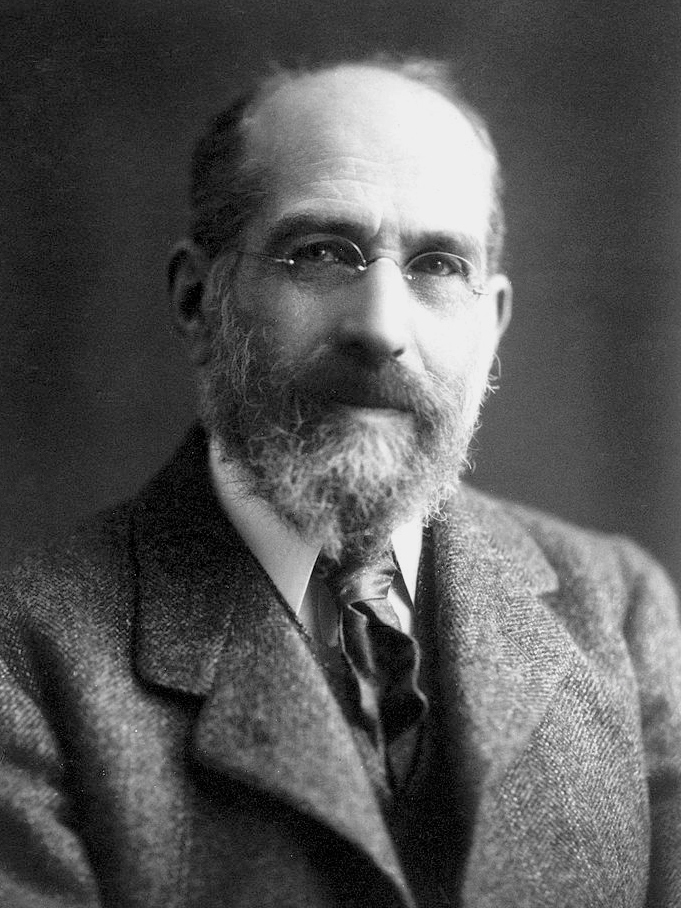 British scientists relentlessly hounded German-born astronomer Arthur Schuster, despite the fact he had moved to Britain as a teenager. His son served in the British army and was wounded in the Dardanelles.
British scientists relentlessly hounded German-born astronomer Arthur Schuster, despite the fact he had moved to Britain as a teenager. His son served in the British army and was wounded in the Dardanelles.
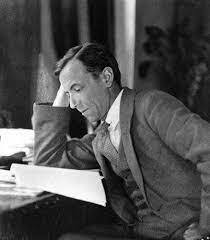 At the same time, British physicist James Chadwick, who was studying in Germany in 1914, was detained in a former racetrack. He remained in German custody under dire conditions until the Armistice.
At the same time, British physicist James Chadwick, who was studying in Germany in 1914, was detained in a former racetrack. He remained in German custody under dire conditions until the Armistice.
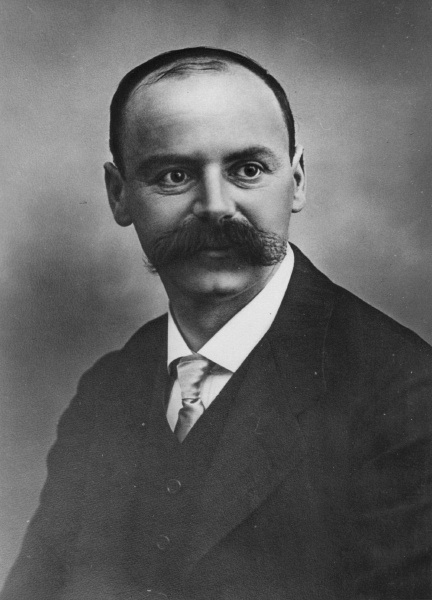 Einstein published his complete Theory of Relativity in November 1915. One of the few German scientists who showed any interest was astronomer Karl Schwartzchild. Schwartzchild was serving in the army on the Russian front, where he put his advanced mathematic skills to use calculating artillery trajectories. In his spare time, while under heavy Russian fire, he worked through the math in Einstein's paper. He demonstrated that the math worked beautifully to calculate the movements of planets and stars. He also inadvertently, and without at all realizing it, discovered black holes.
Einstein published his complete Theory of Relativity in November 1915. One of the few German scientists who showed any interest was astronomer Karl Schwartzchild. Schwartzchild was serving in the army on the Russian front, where he put his advanced mathematic skills to use calculating artillery trajectories. In his spare time, while under heavy Russian fire, he worked through the math in Einstein's paper. He demonstrated that the math worked beautifully to calculate the movements of planets and stars. He also inadvertently, and without at all realizing it, discovered black holes.
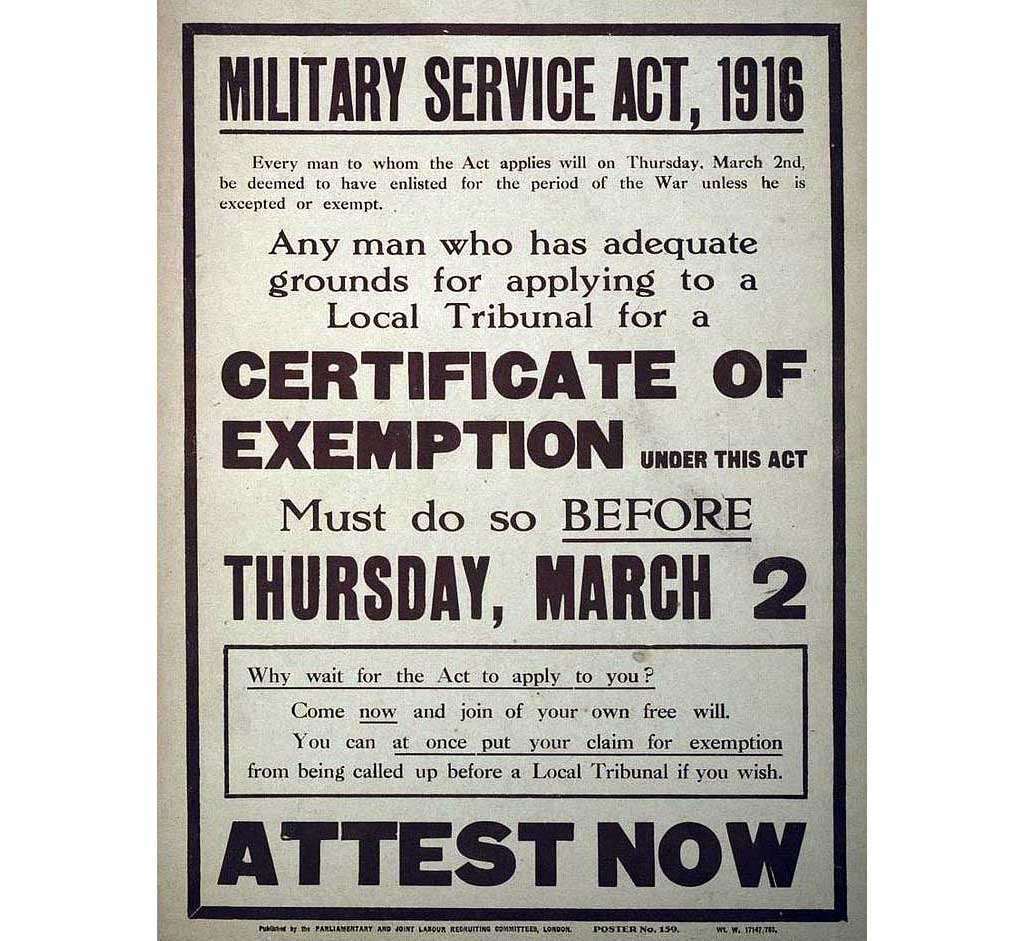 Britain tried to fight the Great War with a volunteer army, but by 1916 it was clear conscription would be necessary. Men could claim exemption for hardship, work of national importance, and conscientious objection. The goverment established tribunals to issue these exemptions but offered no guidance on qualifications.
Britain tried to fight the Great War with a volunteer army, but by 1916 it was clear conscription would be necessary. Men could claim exemption for hardship, work of national importance, and conscientious objection. The goverment established tribunals to issue these exemptions but offered no guidance on qualifications.
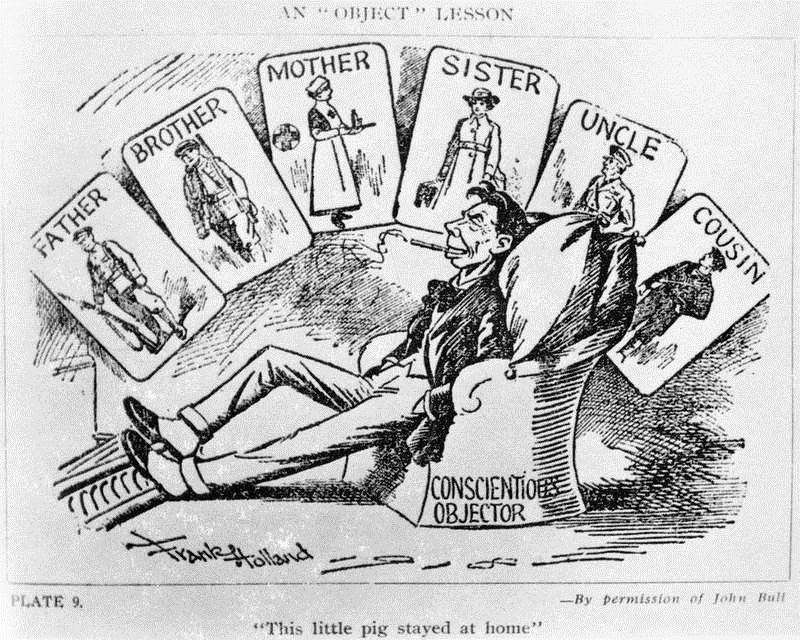 Conscientious objectors were deeply suspect as slackers and cowards. In this editorial cartoon, a lazy conscientious objector lounges before a fire with a cigar ignoring images of his entire family doing war work. It is titled "This little pig stayed home."
Conscientious objectors were deeply suspect as slackers and cowards. In this editorial cartoon, a lazy conscientious objector lounges before a fire with a cigar ignoring images of his entire family doing war work. It is titled "This little pig stayed home."
 Meanwhile, light from the Hyades star cluster continued on its way toward Earth from 153 light years away. (Image copyright Jose Mtanous, from science.nasa.gov (https://science.nasa.gov/hyades-star-cluster).
Meanwhile, light from the Hyades star cluster continued on its way toward Earth from 153 light years away. (Image copyright Jose Mtanous, from science.nasa.gov (https://science.nasa.gov/hyades-star-cluster).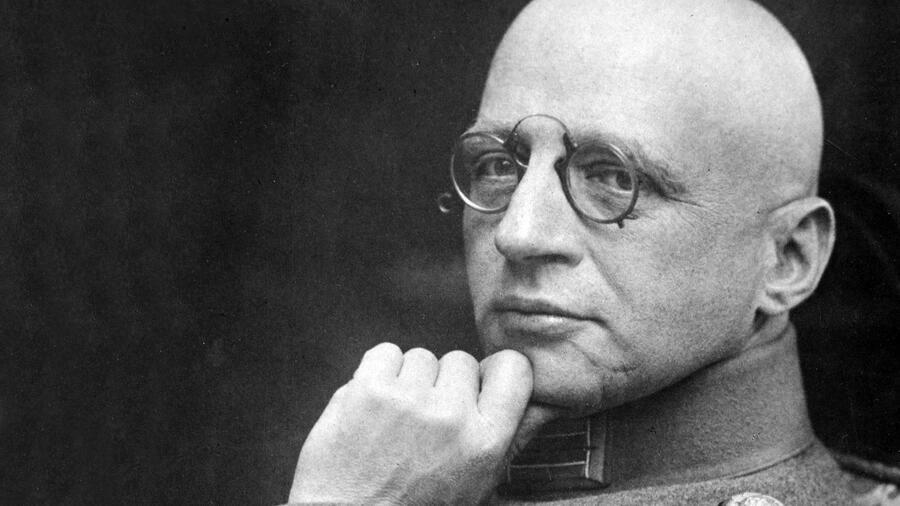 Fritz Haber was born in 1868 to Jewish parents in the town of Breslau, Germany. He received his Ph.D. in chemistry and earned a reputation as a hardworking and painstaking researcher. In 1919, he was both accused of war crimes and awarded a Nobel Prize.
Fritz Haber was born in 1868 to Jewish parents in the town of Breslau, Germany. He received his Ph.D. in chemistry and earned a reputation as a hardworking and painstaking researcher. In 1919, he was both accused of war crimes and awarded a Nobel Prize.
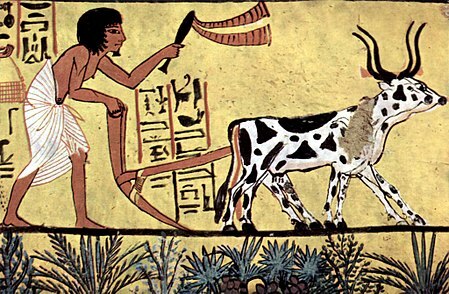 Ancient farmers understood the role of nitrogen in the soil, although they couldn't have told you what nitrogen was or how it worked. They knew, however, that land lost its productivity when it was farmed extensively. Farmers could renew their soil to some degree by adding dung and compost to the land.
Ancient farmers understood the role of nitrogen in the soil, although they couldn't have told you what nitrogen was or how it worked. They knew, however, that land lost its productivity when it was farmed extensively. Farmers could renew their soil to some degree by adding dung and compost to the land.
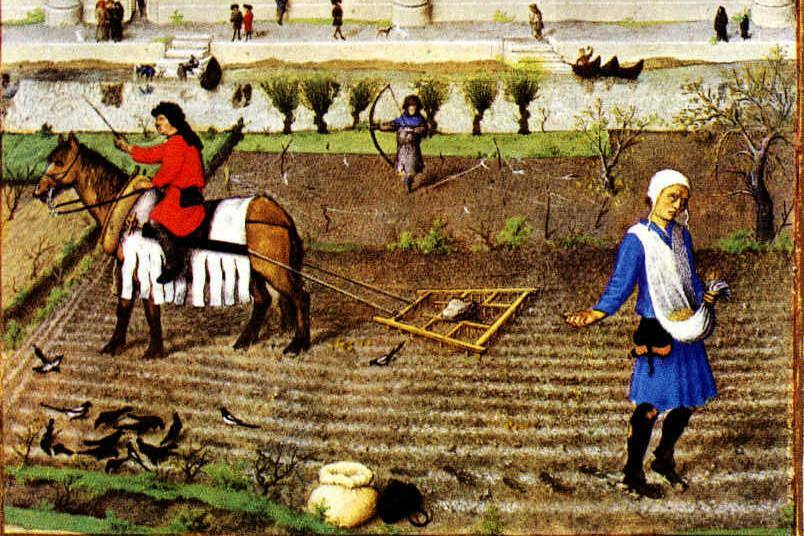 They also knew crop rotation was important. Medieval farmers, such as those seen in this image, generally used a three-field system. One field was used for grains, one for peas or lentils, and one left fallow.
They also knew crop rotation was important. Medieval farmers, such as those seen in this image, generally used a three-field system. One field was used for grains, one for peas or lentils, and one left fallow.
 In the 19th century, scientists learned about the role of nitrogen in living things and discovered how certain bacteria are able to "fix" nitrogen and make it available to plants. The bacteria, known as "diazotrophs," are found in nodules such as you see above in the roots of plants such as peas and lentils.
In the 19th century, scientists learned about the role of nitrogen in living things and discovered how certain bacteria are able to "fix" nitrogen and make it available to plants. The bacteria, known as "diazotrophs," are found in nodules such as you see above in the roots of plants such as peas and lentils.
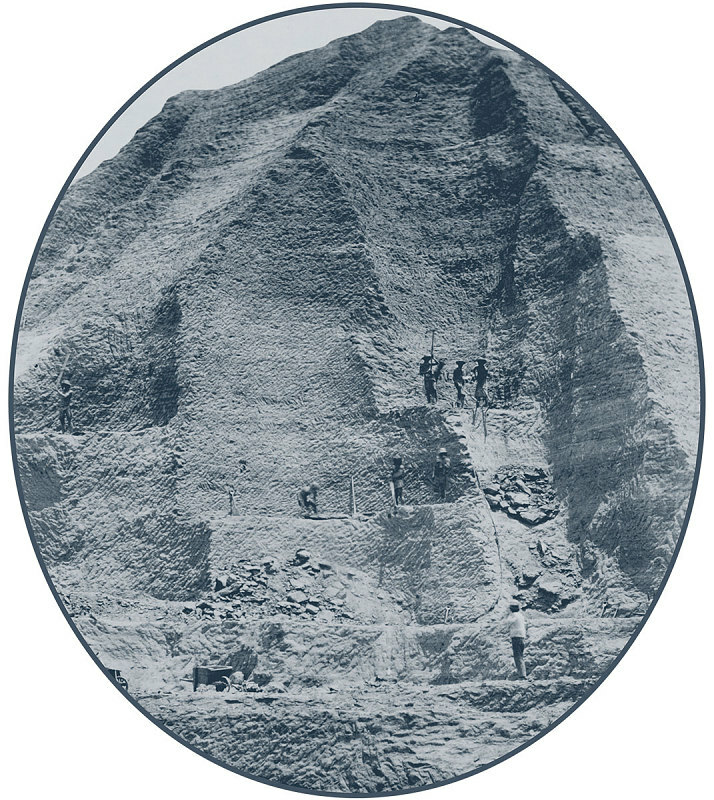 Crop rotation and manure were the best farmers could do until the discovery of the incredible effectiveness of South American guano in the mid-1900s. The above image depicts one of the islands off the coast of Peru where birds had deposited guano for millions of years. You can see the guano formed massive peaks. Miners hacked away at the guano so it could be exported to Europe and North America.
Germany, like most modern nations, became heavily dependent on these imports, both for fertilizer and to make explosives.
Crop rotation and manure were the best farmers could do until the discovery of the incredible effectiveness of South American guano in the mid-1900s. The above image depicts one of the islands off the coast of Peru where birds had deposited guano for millions of years. You can see the guano formed massive peaks. Miners hacked away at the guano so it could be exported to Europe and North America.
Germany, like most modern nations, became heavily dependent on these imports, both for fertilizer and to make explosives.
 Clara Immerwahr Haber married Haber in 1901. She was the first woman to receive a Ph.D. from her university in Germany, a remarkable achievement for a woman in her era. Haber, however, expected only to keep house.
Clara Immerwahr Haber married Haber in 1901. She was the first woman to receive a Ph.D. from her university in Germany, a remarkable achievement for a woman in her era. Haber, however, expected only to keep house.
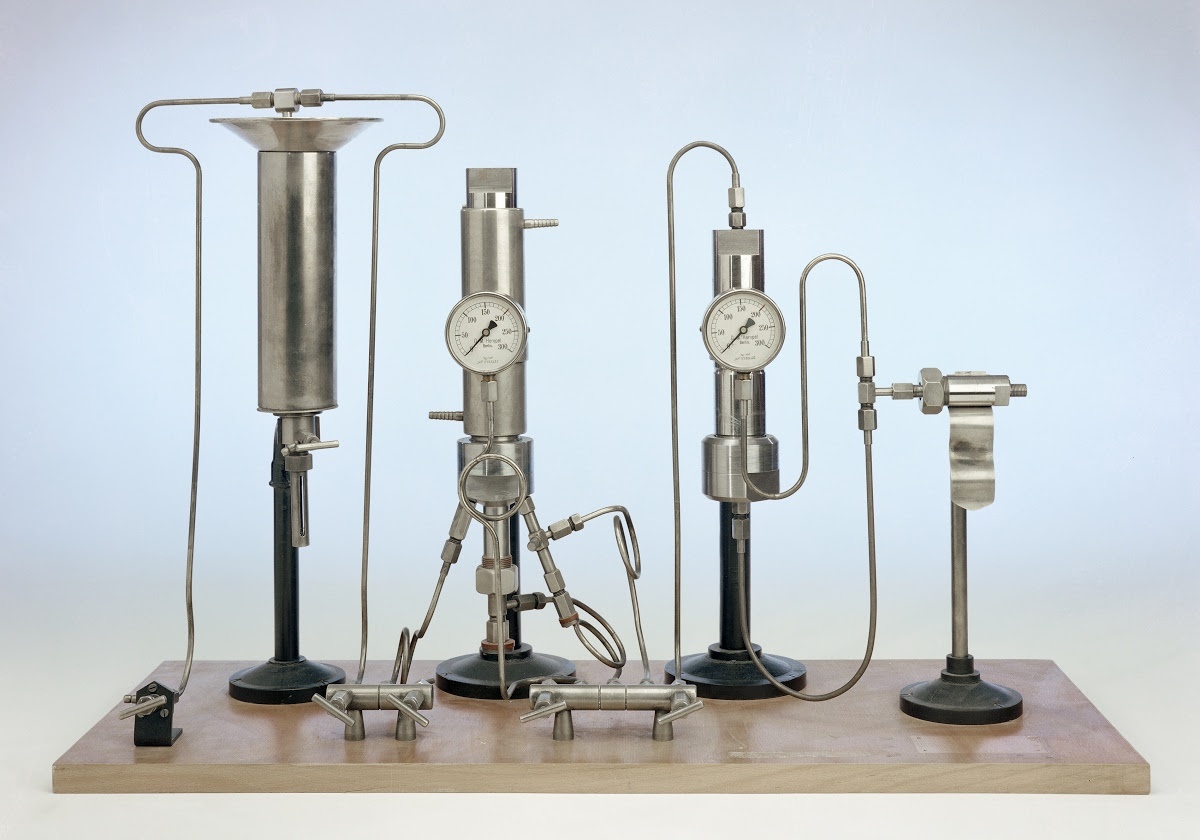 Haber began work on ammonia synthesis in 1904. It was a matter of slow, painstaking work tinkering with temperature, pressure and the right catalyst. Above is a reconstruction of Haber's final table-top process.
Haber began work on ammonia synthesis in 1904. It was a matter of slow, painstaking work tinkering with temperature, pressure and the right catalyst. Above is a reconstruction of Haber's final table-top process.
 I compared the setup to the 1970s board game "Mousetrap." Haber's setup looks simpler than the Rube Goldberg contraption in the game, but his device was far more dangerous and likely to explode and send red-hot shrapnel flying everywhere.
I compared the setup to the 1970s board game "Mousetrap." Haber's setup looks simpler than the Rube Goldberg contraption in the game, but his device was far more dangerous and likely to explode and send red-hot shrapnel flying everywhere.
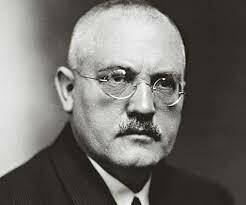 Carl Bosch, a brilliant engineer with the German chemical giant BASF, took over the ammonia synthesis project from Haber. He refined the process and expanded it to an industrial scale. His work was significant, which is why the process is known today as Haber-Bosch.
Carl Bosch, a brilliant engineer with the German chemical giant BASF, took over the ammonia synthesis project from Haber. He refined the process and expanded it to an industrial scale. His work was significant, which is why the process is known today as Haber-Bosch.
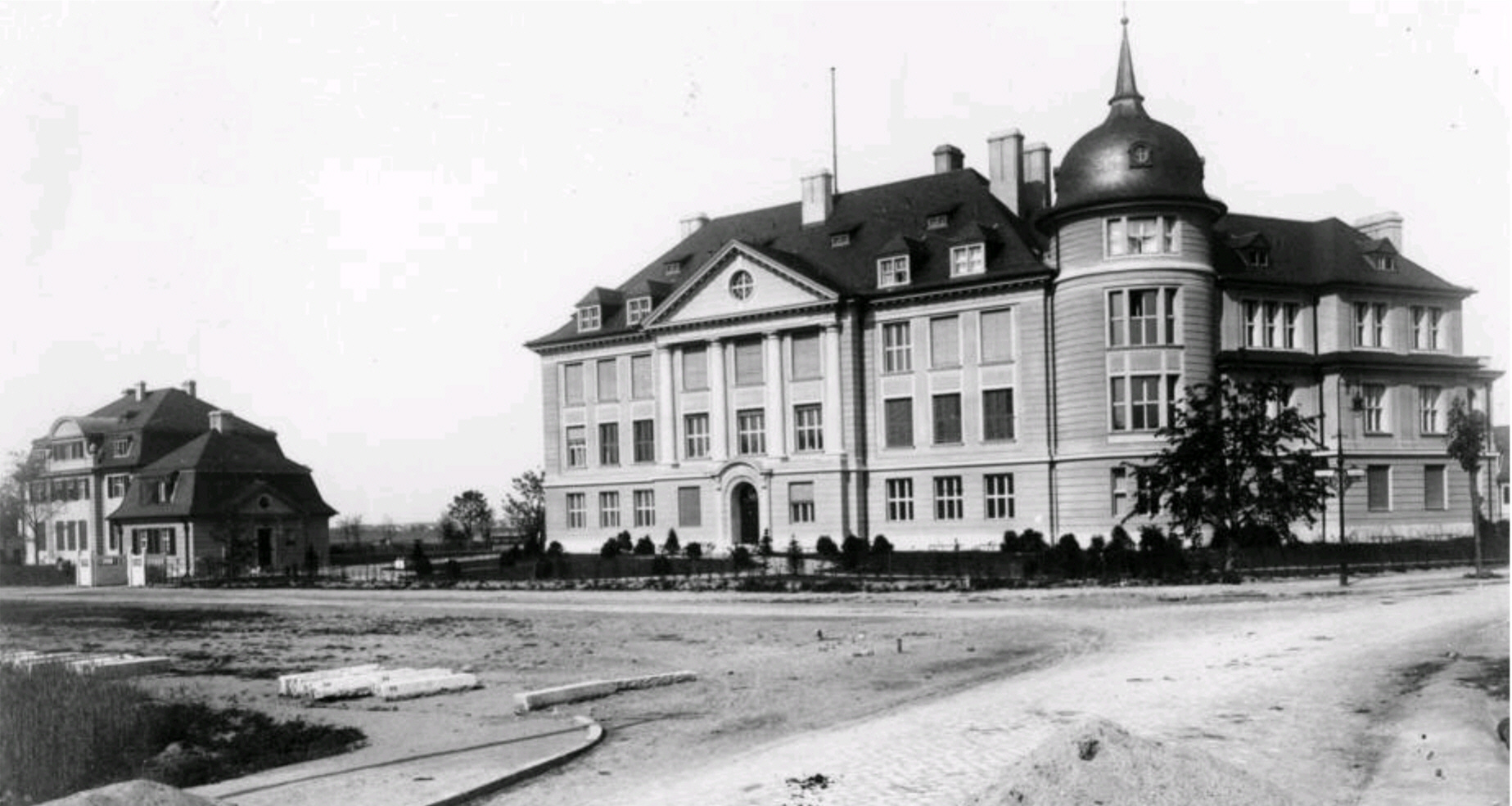 The announcement of the invention of the ammonia process brought Haber international acclaim. His income soared, he became famous in Germany and soonhe was appointed the founding director of the new Kaiser Wilhelm Institute of Physical Chemistry and Electrochemistry. The institute is seen here shortly after its construction in 1911; it was a government-founded research organization and think tank, intended to keep Germany at the forefront of scientific research.
The announcement of the invention of the ammonia process brought Haber international acclaim. His income soared, he became famous in Germany and soonhe was appointed the founding director of the new Kaiser Wilhelm Institute of Physical Chemistry and Electrochemistry. The institute is seen here shortly after its construction in 1911; it was a government-founded research organization and think tank, intended to keep Germany at the forefront of scientific research.
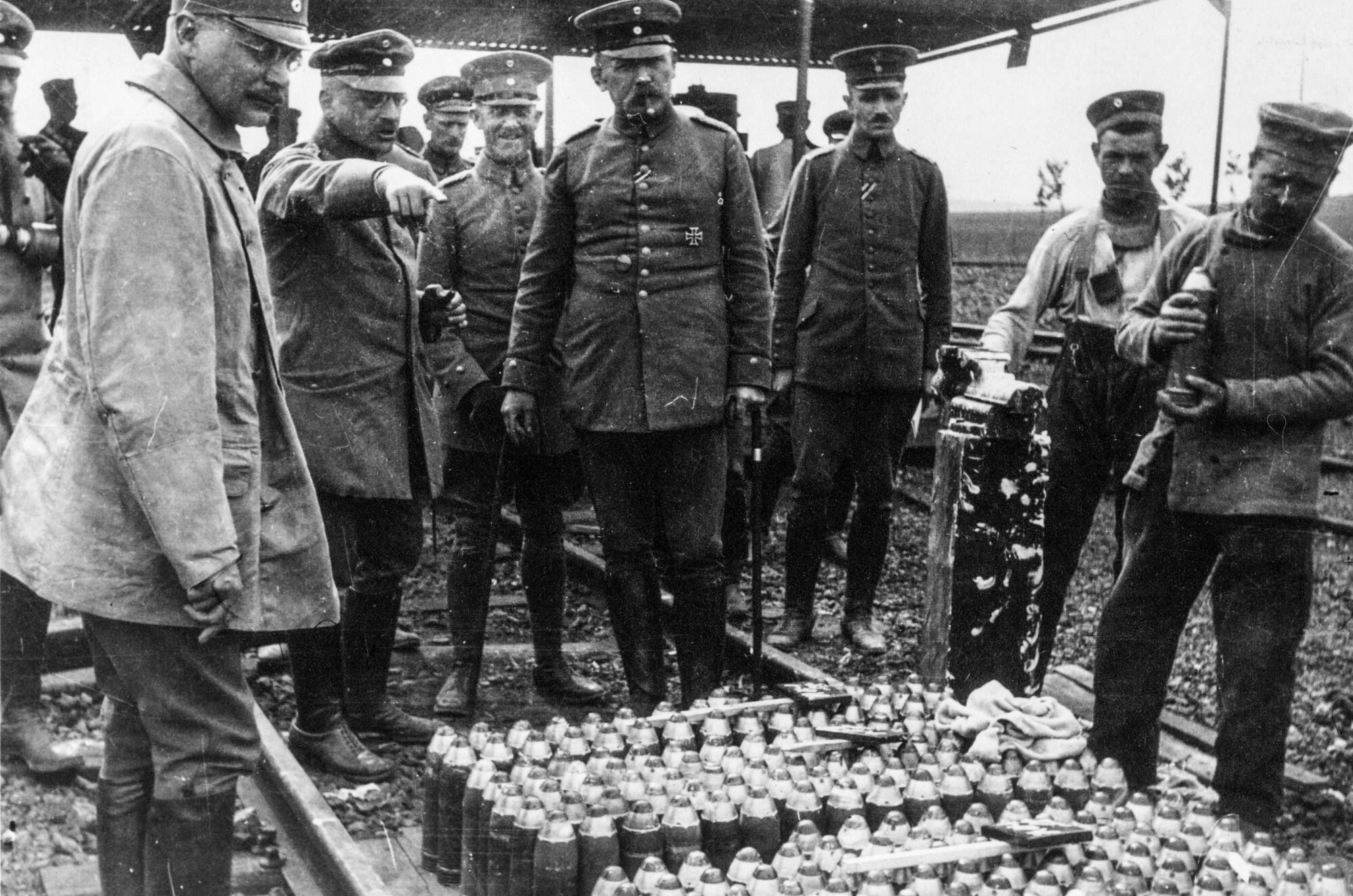 When the Great War began, Haber immediately volunteered for service. He is seen here, at the front; he is the one pointing. He dedicated himself to using chemistry to win the war. One of his first contributions was to convince BASF to convert their ammonia factory to make the starting materials for explosives. This was a critical step for Germany, one that doesn't receive as much attention as it deserves. Without the BASF factories, Germany would have run out of explosives early in the war.
Haber also worked on an experimental program to develop chemical weapons. He eventually convinced the German High Command to test a system that would release the highly toxic chlorine gas across No Man's Land to the Allied troops on the other side.
When the Great War began, Haber immediately volunteered for service. He is seen here, at the front; he is the one pointing. He dedicated himself to using chemistry to win the war. One of his first contributions was to convince BASF to convert their ammonia factory to make the starting materials for explosives. This was a critical step for Germany, one that doesn't receive as much attention as it deserves. Without the BASF factories, Germany would have run out of explosives early in the war.
Haber also worked on an experimental program to develop chemical weapons. He eventually convinced the German High Command to test a system that would release the highly toxic chlorine gas across No Man's Land to the Allied troops on the other side.
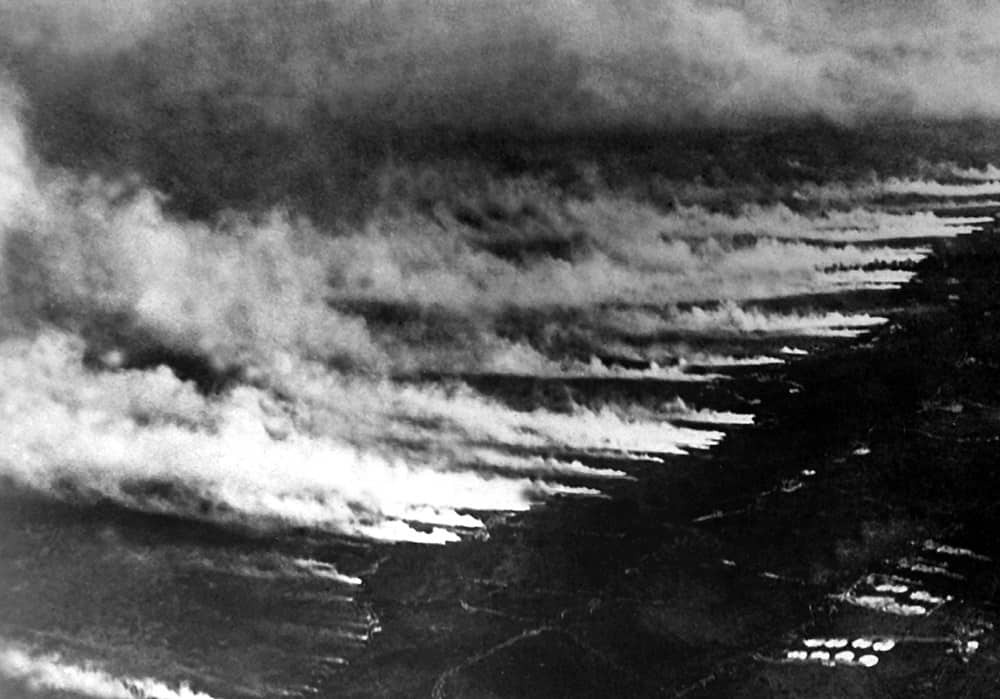 Here you can see the gas flowing across the line toward the Allies at the first attack at Ypres on April 22, 1915. The gas killed or severely injured those who inhaled it in large quantities--and terrified those who saw it in action. This attack opened a four-mile wide hole in the Allied lines, injured 15,000 Allied soldiers and killed 5000.
Here you can see the gas flowing across the line toward the Allies at the first attack at Ypres on April 22, 1915. The gas killed or severely injured those who inhaled it in large quantities--and terrified those who saw it in action. This attack opened a four-mile wide hole in the Allied lines, injured 15,000 Allied soldiers and killed 5000.
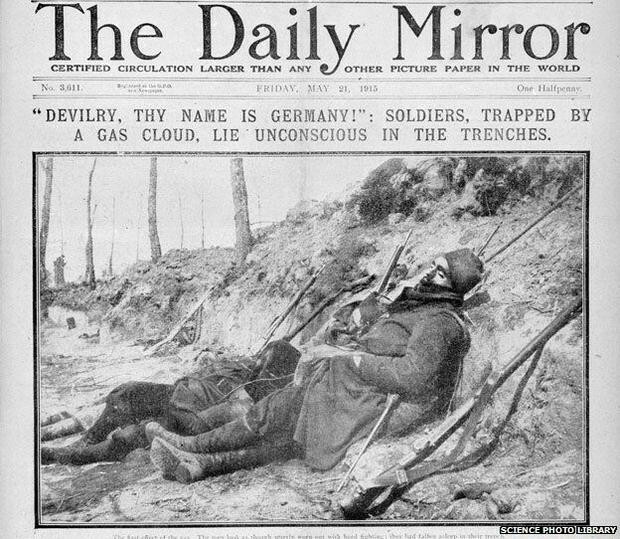 The attack was immediately condemned by everyone except Germany. Kaiser Wilhelm, delighted by the attack, awarded Haber the Iron Cross.
The attack was immediately condemned by everyone except Germany. Kaiser Wilhelm, delighted by the attack, awarded Haber the Iron Cross.
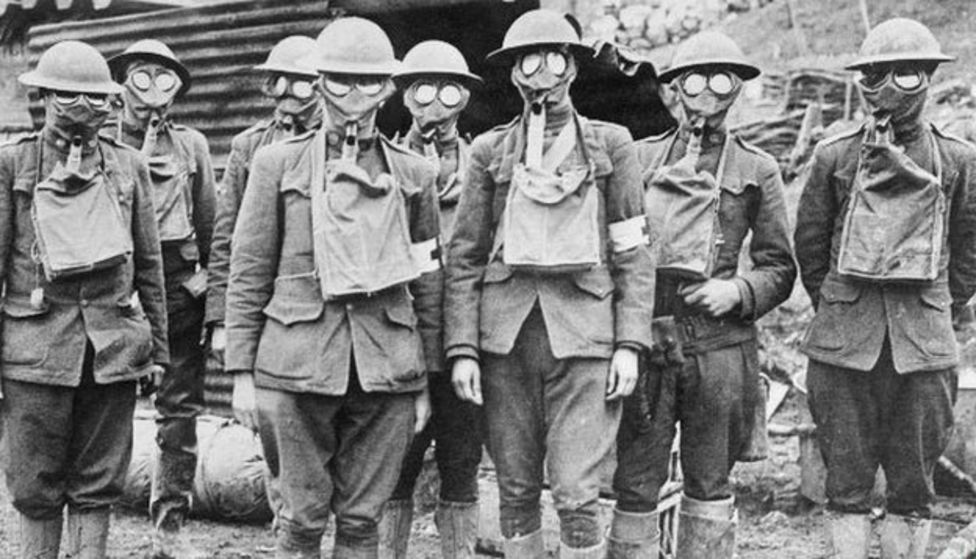 Allied condemnation didn't stop Britain and France from quickly developing their own gas weapons. Both sides regularly tried to poison their enemies with an increasingly deadly arsenal of gases. Simultaneously, gas masks were developed and refined.
Allied condemnation didn't stop Britain and France from quickly developing their own gas weapons. Both sides regularly tried to poison their enemies with an increasingly deadly arsenal of gases. Simultaneously, gas masks were developed and refined.
 Animals such as horses and mules were widely used to haul supplies during the war, and masks were created for the beasts as well--although they never proved particularly effective.
Animals such as horses and mules were widely used to haul supplies during the war, and masks were created for the beasts as well--although they never proved particularly effective.
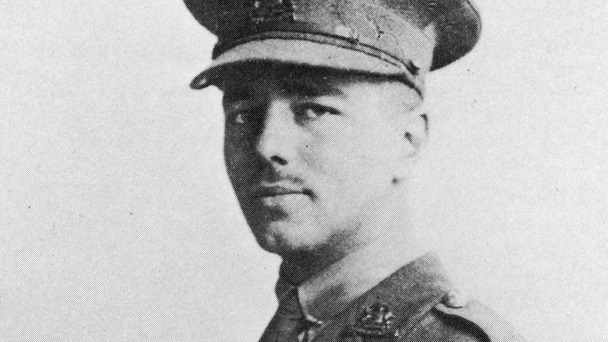 A chilling and unforgettable description of a gas attack is found in the poem "Dulce et Decorum Est" by poet and soldier Wilfred Owen, seen here. You can read the text of the poem here (https://www.poetryfoundation.org/poems/46560/dulce-et-decorum-est) and see actor Christopher Eccleston recite it here (https://www.youtube.com/watch?v=qB4cdRgIcB8&t=45s).
After the war ended, Fritz Haber fled to Germany to avoid arrest and prosecution for war crimes. After a few months hiding out in Switzerland, he was relieved to learn he wasn't in any danger and returned home.
A chilling and unforgettable description of a gas attack is found in the poem "Dulce et Decorum Est" by poet and soldier Wilfred Owen, seen here. You can read the text of the poem here (https://www.poetryfoundation.org/poems/46560/dulce-et-decorum-est) and see actor Christopher Eccleston recite it here (https://www.youtube.com/watch?v=qB4cdRgIcB8&t=45s).
After the war ended, Fritz Haber fled to Germany to avoid arrest and prosecution for war crimes. After a few months hiding out in Switzerland, he was relieved to learn he wasn't in any danger and returned home.
 He arrived home just in time to learn he had been awarded the 1918 Nobel Prize for Chemistry for the synthesis of ammonia. The official certificate can be seen above.
He arrived home just in time to learn he had been awarded the 1918 Nobel Prize for Chemistry for the synthesis of ammonia. The official certificate can be seen above.
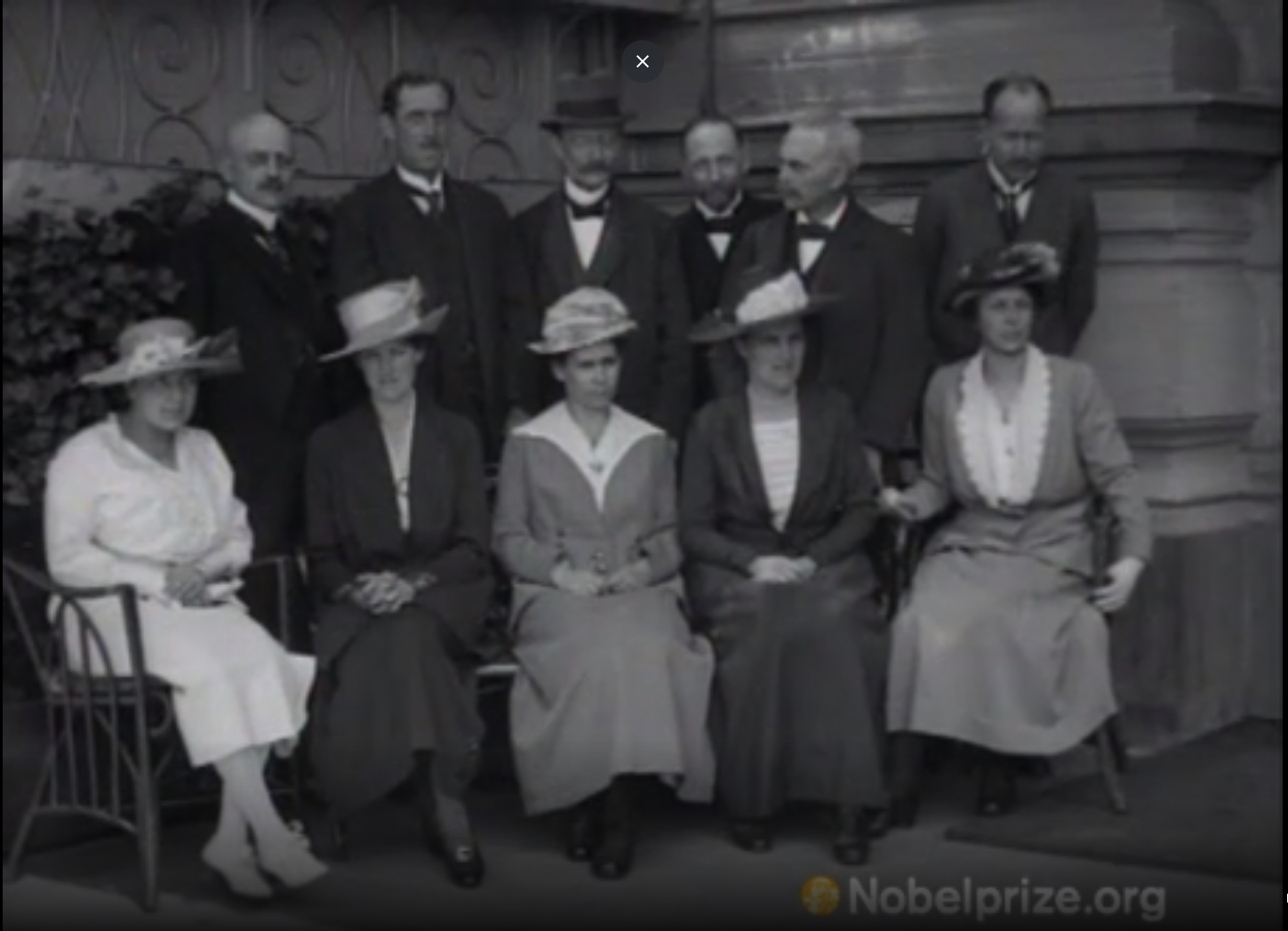 I found a video of several Nobel laureates and their wives posing for a photo (https://www.nobelprize.org/prizes/chemistry/1918/haber/documentary/) at the ceremony in the summer of 1920. Haber is at the far left; his wife Charlotte sits in front of him in white. You can see the entire video here on the Nobel Prize site. I hoped it would give me some glimpse into Haber's character--perhaps you will see more than I see?
I found a video of several Nobel laureates and their wives posing for a photo (https://www.nobelprize.org/prizes/chemistry/1918/haber/documentary/) at the ceremony in the summer of 1920. Haber is at the far left; his wife Charlotte sits in front of him in white. You can see the entire video here on the Nobel Prize site. I hoped it would give me some glimpse into Haber's character--perhaps you will see more than I see? The Temperance Movement began in the 1840s and gained significant momentum through the rest of the century. Women were major leaders in the movement, with many pledging to never let the lips that touch liquor touch theirs. Unfortunately, this seemed to have little effect.
The Temperance Movement began in the 1840s and gained significant momentum through the rest of the century. Women were major leaders in the movement, with many pledging to never let the lips that touch liquor touch theirs. Unfortunately, this seemed to have little effect.
 In the second half of the 19th century, an influx of immigrants from beer-loving countries, including Germany and Ireland, dramatically increased the consumption of beer in the United States. German brewers arrived to meet the demand. The most successful among these brewers was Adolphus Busch. As owner of Anheuser-Busch, he built a massive, vertically integrated operation that controlled every aspect of beer production and distribution, from mining the coal that fueled the brewery to building the refrigerated railcars to deliver the beer to Anheuser-Busch owned saloons.
In the second half of the 19th century, an influx of immigrants from beer-loving countries, including Germany and Ireland, dramatically increased the consumption of beer in the United States. German brewers arrived to meet the demand. The most successful among these brewers was Adolphus Busch. As owner of Anheuser-Busch, he built a massive, vertically integrated operation that controlled every aspect of beer production and distribution, from mining the coal that fueled the brewery to building the refrigerated railcars to deliver the beer to Anheuser-Busch owned saloons.
 Saloons were more than watering holes. They were hubs for the entire community and played important roles in the lives of patrons, especially when those patrons were recent immigrants.
Pictured here is a saloon in Wisconsin. Notice the little boy sitting at the table with his own beer glass. Boys often accompanied their fathers to saloons. Women and girls, however, were not welcome, and a woman who stepped in a saloon ruined her reputation.
Saloons were more than watering holes. They were hubs for the entire community and played important roles in the lives of patrons, especially when those patrons were recent immigrants.
Pictured here is a saloon in Wisconsin. Notice the little boy sitting at the table with his own beer glass. Boys often accompanied their fathers to saloons. Women and girls, however, were not welcome, and a woman who stepped in a saloon ruined her reputation.
 Here's another saloon, this one from Michigan. In a saloon, men could meet friends, participate in local politics, eat a free lunch, take a bath, find a job, get his mail and pawn his watch.
Here's another saloon, this one from Michigan. In a saloon, men could meet friends, participate in local politics, eat a free lunch, take a bath, find a job, get his mail and pawn his watch.
 By 1900, most saloons were "tied houses." That is, they were tied to, if not actually owned by, breweries. In exchange for agreeing to sell only one brand of beer, a barkeeper would receive cash for his licensing fees, an inventory of glassware, and the furnishings for the saloon, including the pool tables and the mirrors on the walls.
This photo shows a Miller bar in Chicago.
By 1900, most saloons were "tied houses." That is, they were tied to, if not actually owned by, breweries. In exchange for agreeing to sell only one brand of beer, a barkeeper would receive cash for his licensing fees, an inventory of glassware, and the furnishings for the saloon, including the pool tables and the mirrors on the walls.
This photo shows a Miller bar in Chicago.
 Temperance activists believed saloons were evil through and through. This cartoon, probably from the mid- to late-19th century, shows children desperately calling for the father, who stands in his natty coat and top hat at the bar. The bartender is a grinning skull, and another skull atop crossed bottles decorates in the bar. In the background, a brawl has broken out. Clearly, nothing good happens at a saloon!
Temperance activists believed saloons were evil through and through. This cartoon, probably from the mid- to late-19th century, shows children desperately calling for the father, who stands in his natty coat and top hat at the bar. The bartender is a grinning skull, and another skull atop crossed bottles decorates in the bar. In the background, a brawl has broken out. Clearly, nothing good happens at a saloon!
 Women's rights activists in particular believed that alcohol was the cause of domestic violence. In this illustration, a drunken man takes a swing at his wife as his children cling to his legs. Many woman suffragists believed that prohibition would stop violence in the home.
Women's rights activists in particular believed that alcohol was the cause of domestic violence. In this illustration, a drunken man takes a swing at his wife as his children cling to his legs. Many woman suffragists believed that prohibition would stop violence in the home.
 The Anti-Saloon League became a force to be reckoned with by organizing all of the anti-alcohol groups. The League was led by Wayne Wheeler, a genial midwesterner that author Daniel Okrent noted resembled Ned Flanders. In fact, Wheeler was a passionate, focused organizer with a backbone of steel who could make or break political careers.
The Anti-Saloon League became a force to be reckoned with by organizing all of the anti-alcohol groups. The League was led by Wayne Wheeler, a genial midwesterner that author Daniel Okrent noted resembled Ned Flanders. In fact, Wheeler was a passionate, focused organizer with a backbone of steel who could make or break political careers.
 Breweries tried reframe beer as a health-giving, nourishing beverage. The Saskatoon Brewing Company tried to sell their beer as "liquid bread."
Breweries tried reframe beer as a health-giving, nourishing beverage. The Saskatoon Brewing Company tried to sell their beer as "liquid bread."
 Knickerbocker Beer ran ads declaring "Beer is Food" and claiming that beer was not only "a wonderful aid to digestion" and a "valuable source of energy" but also "a mainstay of practical temperance."
Knickerbocker Beer ran ads declaring "Beer is Food" and claiming that beer was not only "a wonderful aid to digestion" and a "valuable source of energy" but also "a mainstay of practical temperance."
 An Anti-Prohibition coalition produced this ad, showing a fat and happy baby drinking a stein of beer. No one was convinced by any of these campaigns.
An Anti-Prohibition coalition produced this ad, showing a fat and happy baby drinking a stein of beer. No one was convinced by any of these campaigns.
 Once the United States entered World War I, a new argument began to be made against the alcohol industry: it wasted food and fuel. Americans were called upon to save food for the military, as well as for the British, French and Belgians. The Anti-Saloon League argued that the alcohol industry wasted tons of food and fuel.
In this cartoon, Uncle Sam puts up posters calling to save food and fuel while the saloon tosses out barrels not only of goods but also of "wasted manhood."
Once the United States entered World War I, a new argument began to be made against the alcohol industry: it wasted food and fuel. Americans were called upon to save food for the military, as well as for the British, French and Belgians. The Anti-Saloon League argued that the alcohol industry wasted tons of food and fuel.
In this cartoon, Uncle Sam puts up posters calling to save food and fuel while the saloon tosses out barrels not only of goods but also of "wasted manhood."
 "Non-essential" was an insult during the war--anything non-essential to winning the war was useless and to be despised. Here a woman clad in an American flag hurls the word at a fat man identified as "Booze."
"Non-essential" was an insult during the war--anything non-essential to winning the war was useless and to be despised. Here a woman clad in an American flag hurls the word at a fat man identified as "Booze."
 In late 1917, riding the wave of anti-alcohol sentiment, the Dry alliance pushed the 18th Amendment through Congress. It went to the states for ratification.
The Anti-Saloon League coordinated the ratification fight with an attack on the United States Brewers Association and an immigrant association it had long backed, the German American Alliance. The League convinced the Senate, and the American people, that the Alliance and the Brewers were under the control of the Kaiser and enemies of America.
In late 1917, riding the wave of anti-alcohol sentiment, the Dry alliance pushed the 18th Amendment through Congress. It went to the states for ratification.
The Anti-Saloon League coordinated the ratification fight with an attack on the United States Brewers Association and an immigrant association it had long backed, the German American Alliance. The League convinced the Senate, and the American people, that the Alliance and the Brewers were under the control of the Kaiser and enemies of America.
 A Senate sub-committee investigated the charges and seemed to prove all sorts of underhanded dealings. It's true that the Brewers had played dirty by bribing politicians and and paying off newspapers, but their aim had been to stop Prohibition, not lost the war to Germany.
A Senate sub-committee investigated the charges and seemed to prove all sorts of underhanded dealings. It's true that the Brewers had played dirty by bribing politicians and and paying off newspapers, but their aim had been to stop Prohibition, not lost the war to Germany.
 No charges ever came out of the subcommittee, but it didn't matter. Americans had found the Alliance and the Brewers guilty in the court of public opinion.
No charges ever came out of the subcommittee, but it didn't matter. Americans had found the Alliance and the Brewers guilty in the court of public opinion.
 In this heady atmosphere, the 18th Amendment was rapidly ratified by all but two states on January 17, 1919. In one year, the amendment would go into effect.
In this heady atmosphere, the 18th Amendment was rapidly ratified by all but two states on January 17, 1919. In one year, the amendment would go into effect.
 The most important job for Congress was to pass legislation defining the terms of the 18th Amendment (what constituted an "intoxicating beverage"?) and creating enforcement mechanisms. The man responsible for the bill was Andrew John Volstead, a man so strait-laced he did yardwork in a coat and tie.
The most important job for Congress was to pass legislation defining the terms of the 18th Amendment (what constituted an "intoxicating beverage"?) and creating enforcement mechanisms. The man responsible for the bill was Andrew John Volstead, a man so strait-laced he did yardwork in a coat and tie.
 Volstead's bill passed in October, but then Wilson vetoed it. Americans were shocked. Wilson had never even committed on Prohibition. Congress, fed up with the president after the long and ugly League of Nations fight, overturned the veto two hours later.
Volstead's bill passed in October, but then Wilson vetoed it. Americans were shocked. Wilson had never even committed on Prohibition. Congress, fed up with the president after the long and ugly League of Nations fight, overturned the veto two hours later.
 The Volstead Act called for the creation of a new Prohibition Unit to stamp out illegal alcohol. But the agents were to be paid measly salaries and the majority lacked any law enforcement training or experience. They were, inevitably, corrupt.
The Volstead Act called for the creation of a new Prohibition Unit to stamp out illegal alcohol. But the agents were to be paid measly salaries and the majority lacked any law enforcement training or experience. They were, inevitably, corrupt.
 Criminals also spent 1919 getting ready for Prohibition. Arnold Rothstein, who providing the funds to throw the 1919 World Series, organized a comprehensive smuggling operation to bring liquor from Europe to the United States. He was only one of many crooks and bootleggers getting their ducks in a row for the following year.
Criminals also spent 1919 getting ready for Prohibition. Arnold Rothstein, who providing the funds to throw the 1919 World Series, organized a comprehensive smuggling operation to bring liquor from Europe to the United States. He was only one of many crooks and bootleggers getting their ducks in a row for the following year.
 Brewers had to find a way to make do. Anheuser-Busch sold malt extract, brewer's yeast, and Bevo, a soft drink. It was not a success.
Brewers had to find a way to make do. Anheuser-Busch sold malt extract, brewer's yeast, and Bevo, a soft drink. It was not a success.
 Companies also found creative ways to exploit loopholes in the Volstead Act. It was perfectly legal, for example, for wineries to condense grape juice down to semi-solid block known as a "grape brick." These bricks were sold along with careful instructions on how not to mix the juice with water to make wine. You wouldn't want people to accidentally break the law, now would you? Homebrew kits came with similar instructions.
Companies also found creative ways to exploit loopholes in the Volstead Act. It was perfectly legal, for example, for wineries to condense grape juice down to semi-solid block known as a "grape brick." These bricks were sold along with careful instructions on how not to mix the juice with water to make wine. You wouldn't want people to accidentally break the law, now would you? Homebrew kits came with similar instructions.
 Moonshine operations sprang up across the country, with different regions developing their own recipes and reputations for quality or lack thereof. Pictured here are stills seized from moonshiners in Colorado. The metal was sold for scrap. It's likely by the time this photo was taken, the moonshiners had already begun their next batch.
Moonshine operations sprang up across the country, with different regions developing their own recipes and reputations for quality or lack thereof. Pictured here are stills seized from moonshiners in Colorado. The metal was sold for scrap. It's likely by the time this photo was taken, the moonshiners had already begun their next batch.
 As the clock wound down to January 17, liquor stores began selling out their inventory. People stockpiled as much as they could afford--since, as far as they knew, alcohol would be illegal forever in the United States.
As the clock wound down to January 17, liquor stores began selling out their inventory. People stockpiled as much as they could afford--since, as far as they knew, alcohol would be illegal forever in the United States.
 Here a line extends out of the store as men line up to buy a last few bottles. It was going to be a long, dry time.
Here a line extends out of the store as men line up to buy a last few bottles. It was going to be a long, dry time.
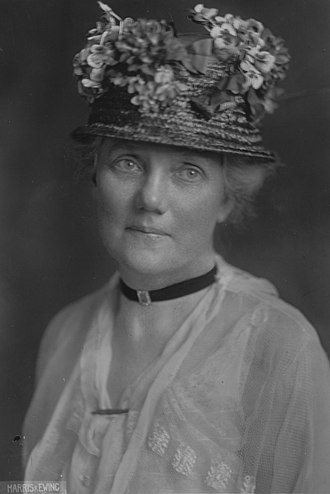 Dora Lewis was the member of prominent Philadelphia family. She was dedicated fighter for the right of women to vote.
Dora Lewis was the member of prominent Philadelphia family. She was dedicated fighter for the right of women to vote.
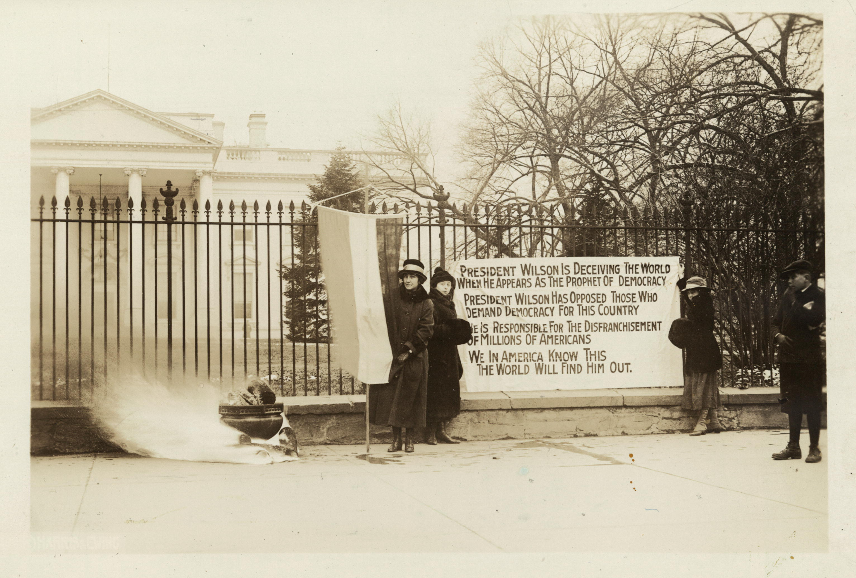 In 1919, Lewis participated in the Watchfires protests, in which suffragists burned the speeches of Woodrow Wilson to reject his hypocricy of speaking about democracy and justice without protecting them for women at home.
In 1919, Lewis participated in the Watchfires protests, in which suffragists burned the speeches of Woodrow Wilson to reject his hypocricy of speaking about democracy and justice without protecting them for women at home.
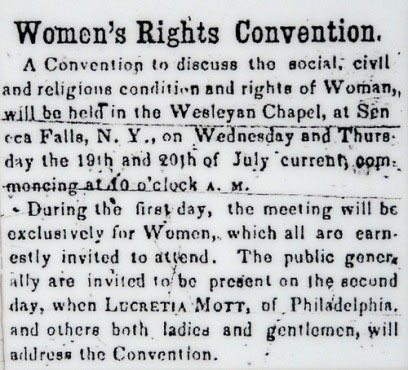 The woman suffrage movement in the United States is usually said to have begun at the Seneca Falls Convention in 1848. The Convention, organized by Elizabeth Cady Stanton and several friends and colleagues, produced a Declaration of Sentiments that called for women to "secure for themselves their right to the elective franchise."
The woman suffrage movement in the United States is usually said to have begun at the Seneca Falls Convention in 1848. The Convention, organized by Elizabeth Cady Stanton and several friends and colleagues, produced a Declaration of Sentiments that called for women to "secure for themselves their right to the elective franchise."
 Elizabeth Cady Stanton (left) and Susan B. Anthony (right) met in 1851 and become close friends and dedicated fighters for votes for women.
Elizabeth Cady Stanton (left) and Susan B. Anthony (right) met in 1851 and become close friends and dedicated fighters for votes for women.
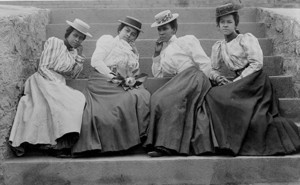 The "New Woman" of the turn of the 19th century was educated, independent, and career-minded. These women were more demanding than previous generations and less concerned about upsetting gender norms.
The "New Woman" of the turn of the 19th century was educated, independent, and career-minded. These women were more demanding than previous generations and less concerned about upsetting gender norms.
 I joked in this episode about New Women and their bicycles, but this was actually an enormous breakthrough for women. For the first time, women had freedom of movement that opened up a world that been narrowly restricted for previous generations.
I joked in this episode about New Women and their bicycles, but this was actually an enormous breakthrough for women. For the first time, women had freedom of movement that opened up a world that been narrowly restricted for previous generations.
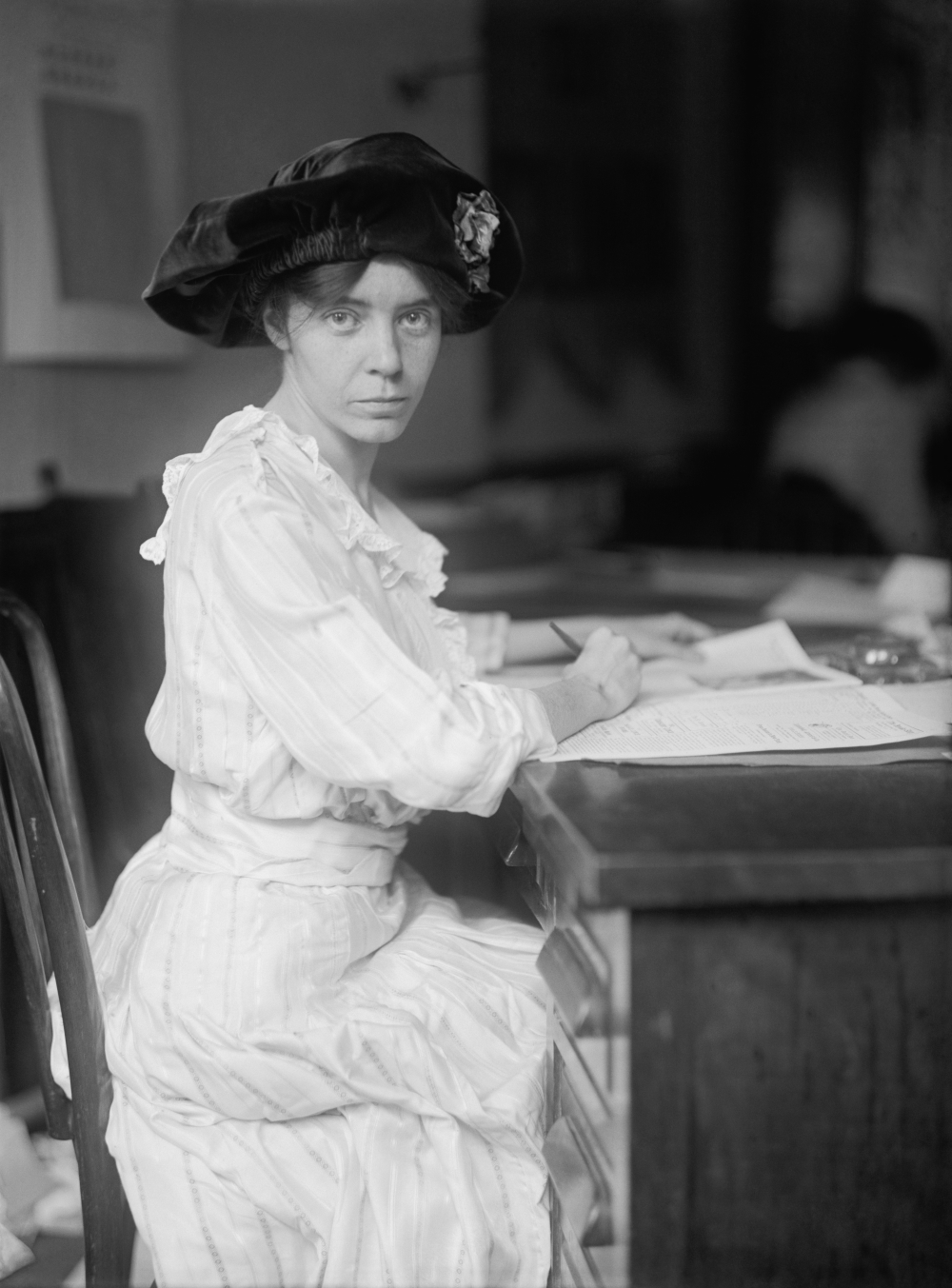 Alice Paul was charismatic, magnetic, and impossible to refuse. She was willing to work herself into the hospital and expected the same level of effort from her friends. (She is also, in this photo, wearing an awesome hat.)
Alice Paul was charismatic, magnetic, and impossible to refuse. She was willing to work herself into the hospital and expected the same level of effort from her friends. (She is also, in this photo, wearing an awesome hat.)
 Alice Paul spent the years between 1907 and 1909 in the United Kingdom, where she joined the radical suffragette movement. She learned the power of protest in England, as well as the power of her own will.
Alice Paul spent the years between 1907 and 1909 in the United Kingdom, where she joined the radical suffragette movement. She learned the power of protest in England, as well as the power of her own will.
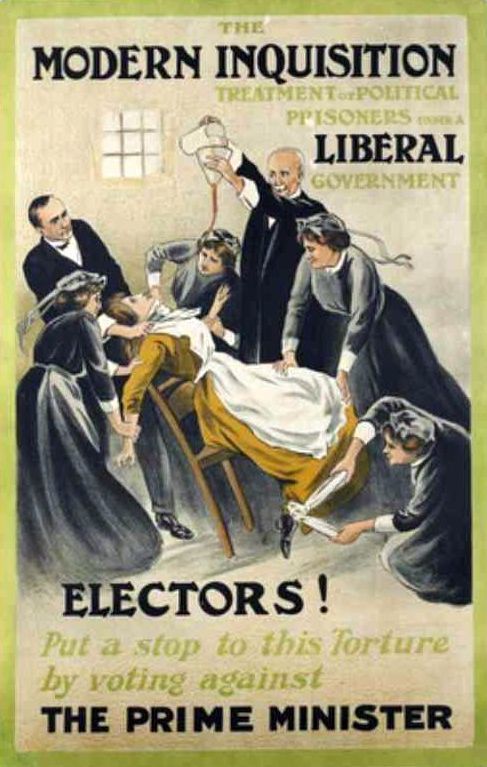 In 1909, Paul went on a hunger strike in prison and was force fed. This was a horrifying, traumatic experience--a fact that the suffragettes didn't hesitate to leverage in their promotional material.
In 1909, Paul went on a hunger strike in prison and was force fed. This was a horrifying, traumatic experience--a fact that the suffragettes didn't hesitate to leverage in their promotional material.
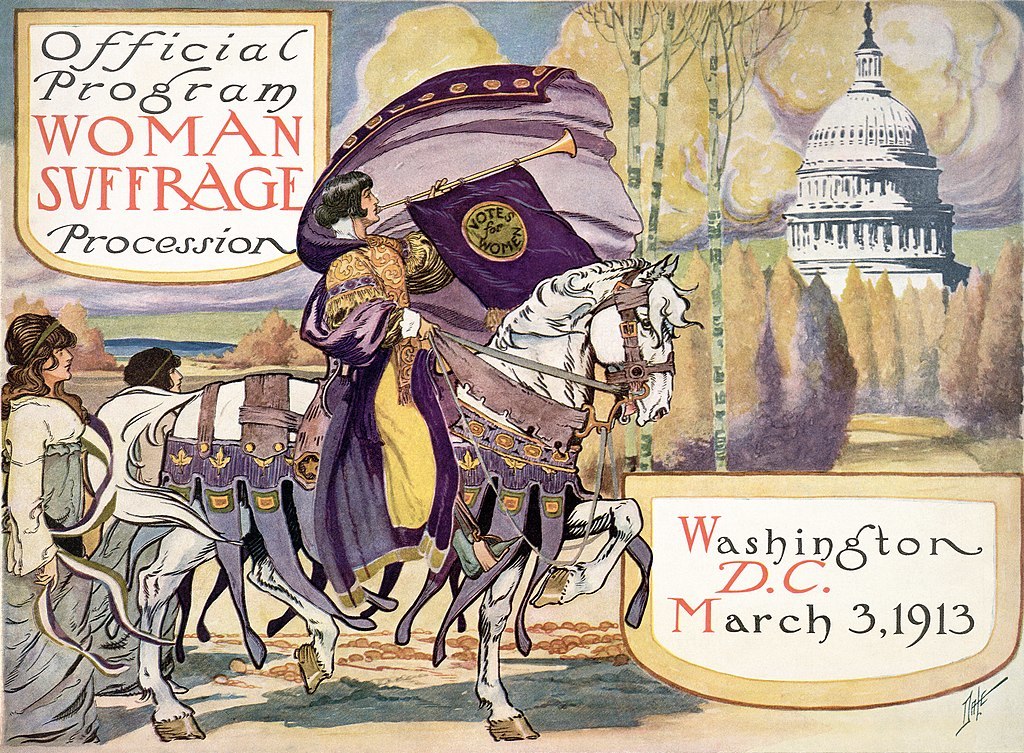 Paul's first major action back in the United States was the Woman Suffrage Procession of 1913. Scheduled the day before Woodrow Wilson's inauguration, it achieved maximum publicity for the cause. This image was used as the cover of the official procession program.
Paul's first major action back in the United States was the Woman Suffrage Procession of 1913. Scheduled the day before Woodrow Wilson's inauguration, it achieved maximum publicity for the cause. This image was used as the cover of the official procession program.
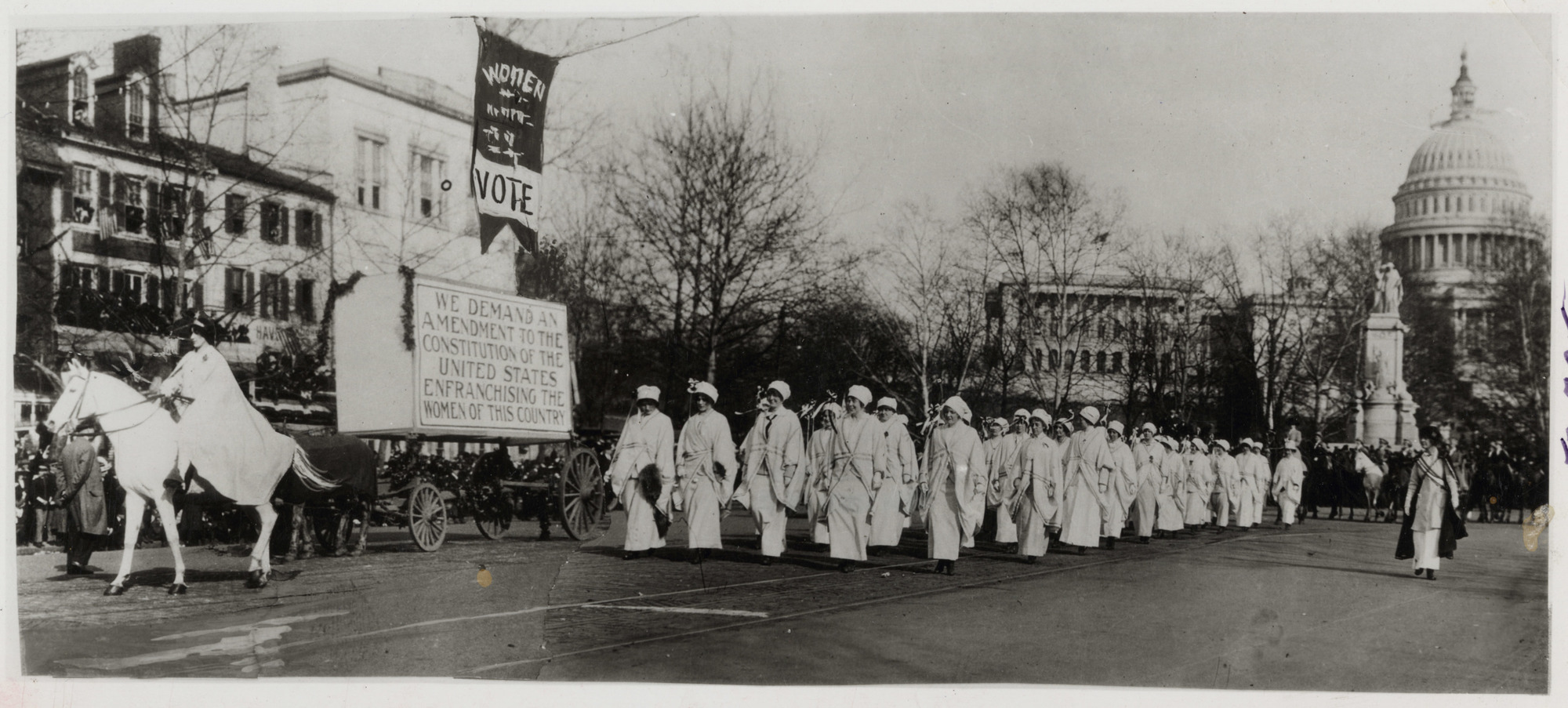 This photo shows the start of the procession, with attorney Inez Mulholland on horseback.
This photo shows the start of the procession, with attorney Inez Mulholland on horseback.
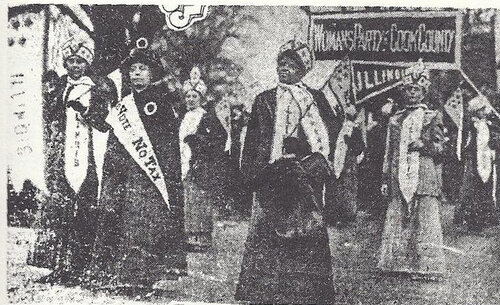 Paul and other organizers intended to segregate African-American marchers to the end of the parade, but Ida B. Wells-Barnett had no intention of being segregated. She joined the Illinois delegation halfway along the route.
Paul and other organizers intended to segregate African-American marchers to the end of the parade, but Ida B. Wells-Barnett had no intention of being segregated. She joined the Illinois delegation halfway along the route.
 Massive crowds viewed the parade. Without adequate police monitoring, the crowd got out of control, spilled into the street, and began harassing the marchers.
Massive crowds viewed the parade. Without adequate police monitoring, the crowd got out of control, spilled into the street, and began harassing the marchers.
 In 1917, the Silent Sentinels began protesting daily at the White House. They carried banners demanding the president take action on women's right to vote.
In 1917, the Silent Sentinels began protesting daily at the White House. They carried banners demanding the president take action on women's right to vote.
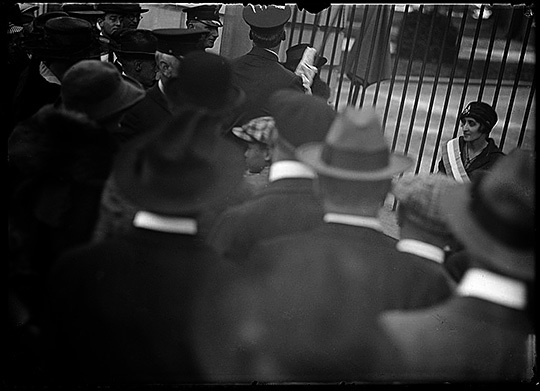 For several months, the protests were peaceful. But Paul began cranking up the tension in the summer, and D.C. police began arresting and detaining the protesters.
For several months, the protests were peaceful. But Paul began cranking up the tension in the summer, and D.C. police began arresting and detaining the protesters.
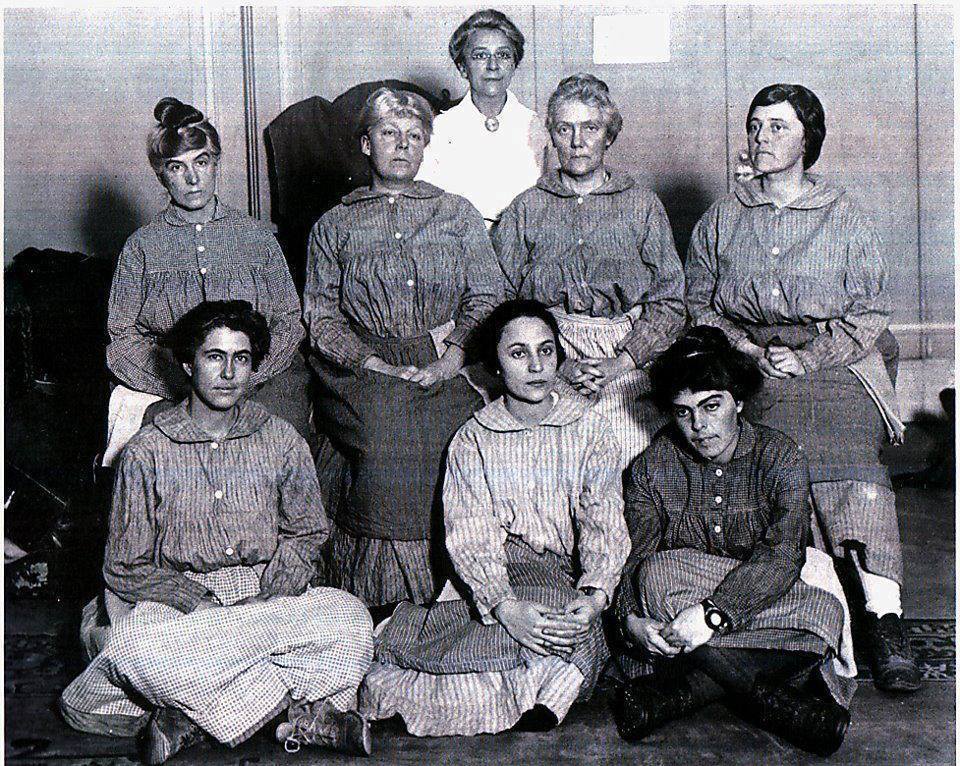 Eventually, suffragists were sentenced to time at Occoquan Workhouse a grim, remote facility. Here several suffragists, including Dora Lewis, pose in their prison uniforms.
Eventually, suffragists were sentenced to time at Occoquan Workhouse a grim, remote facility. Here several suffragists, including Dora Lewis, pose in their prison uniforms.
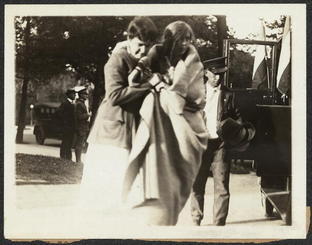 Suffragist prisoners began protests in prison, refusing to wear uniforms or do assigned work. Some, including Alice Paul, went on hunger strikes. Prison guards reacted with increasing violence. Here one of the suffragists has to be helped to a car after a harrowing stay at Occoquan.
Suffragist prisoners began protests in prison, refusing to wear uniforms or do assigned work. Some, including Alice Paul, went on hunger strikes. Prison guards reacted with increasing violence. Here one of the suffragists has to be helped to a car after a harrowing stay at Occoquan.
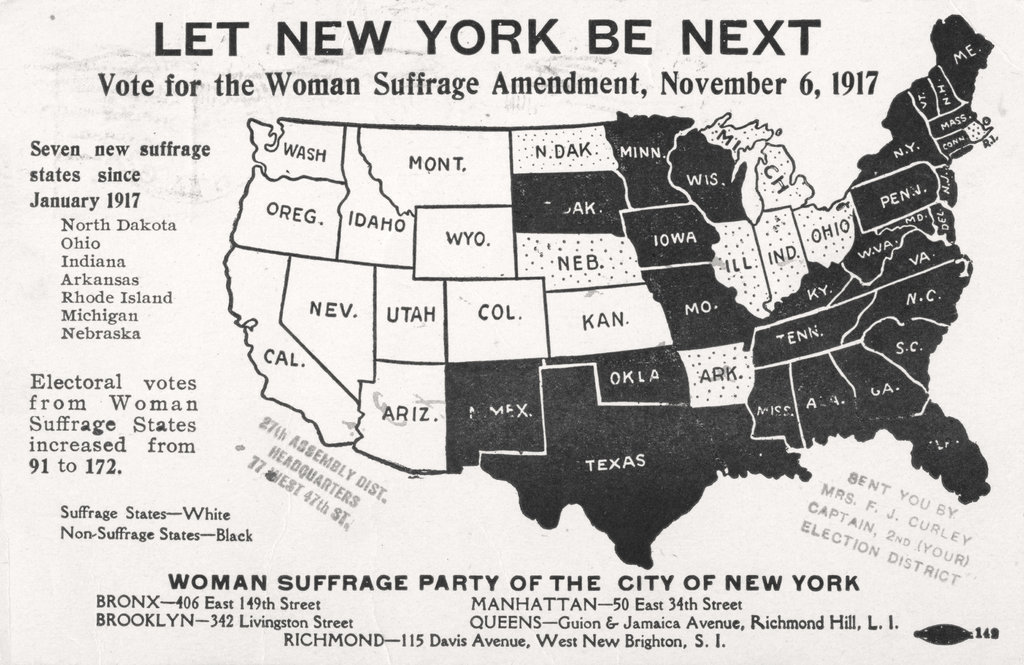 At the same time the members of the NWP were protesting daily at the White House, members of the rival organization NAWSA were conducting a massive campaign for suffrage in New York. They won the vote for 2 million women and reinforced the nationwide conviction that the time had come for a federal amendment.
At the same time the members of the NWP were protesting daily at the White House, members of the rival organization NAWSA were conducting a massive campaign for suffrage in New York. They won the vote for 2 million women and reinforced the nationwide conviction that the time had come for a federal amendment.
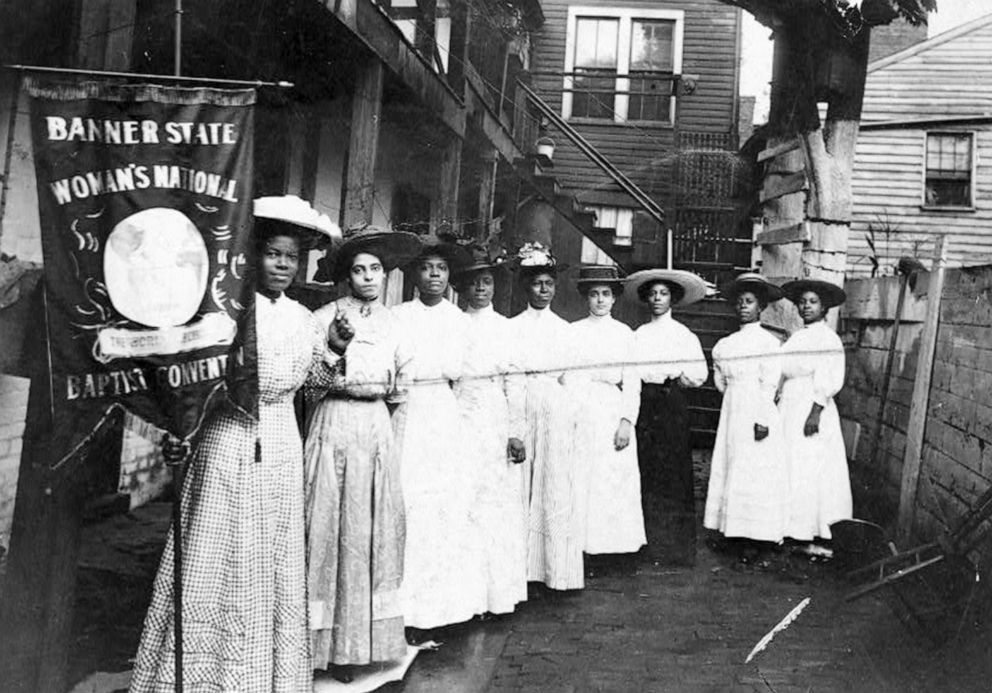 The New York campaign was one of the most inclusive in suffrage history. NAWSA partnered with both the Wage Earner's Suffrage League and the New York City Colored Woman Suffrage Club. African-American suffrage clubs were popular in northern states; this image is of such a group. (I was unable to figure out exactly where these women were from.)
The New York campaign was one of the most inclusive in suffrage history. NAWSA partnered with both the Wage Earner's Suffrage League and the New York City Colored Woman Suffrage Club. African-American suffrage clubs were popular in northern states; this image is of such a group. (I was unable to figure out exactly where these women were from.)
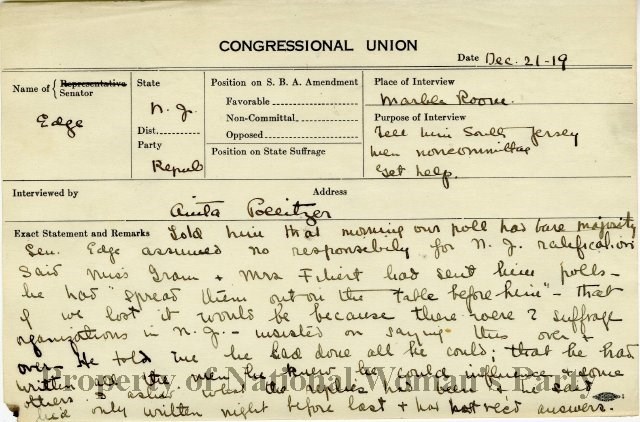 After the House of Representatives passed the federal woman suffrage amendment in 1918, the NWP and NAWSA set aside their differences and worked together to lobby Senators for votes for women. They developed an early form of a database in an index card system that tracked each Senator's friends, memberships, and donors. They also logged notes of each meeting with a Senator, as you can see in this card.
After the House of Representatives passed the federal woman suffrage amendment in 1918, the NWP and NAWSA set aside their differences and worked together to lobby Senators for votes for women. They developed an early form of a database in an index card system that tracked each Senator's friends, memberships, and donors. They also logged notes of each meeting with a Senator, as you can see in this card.
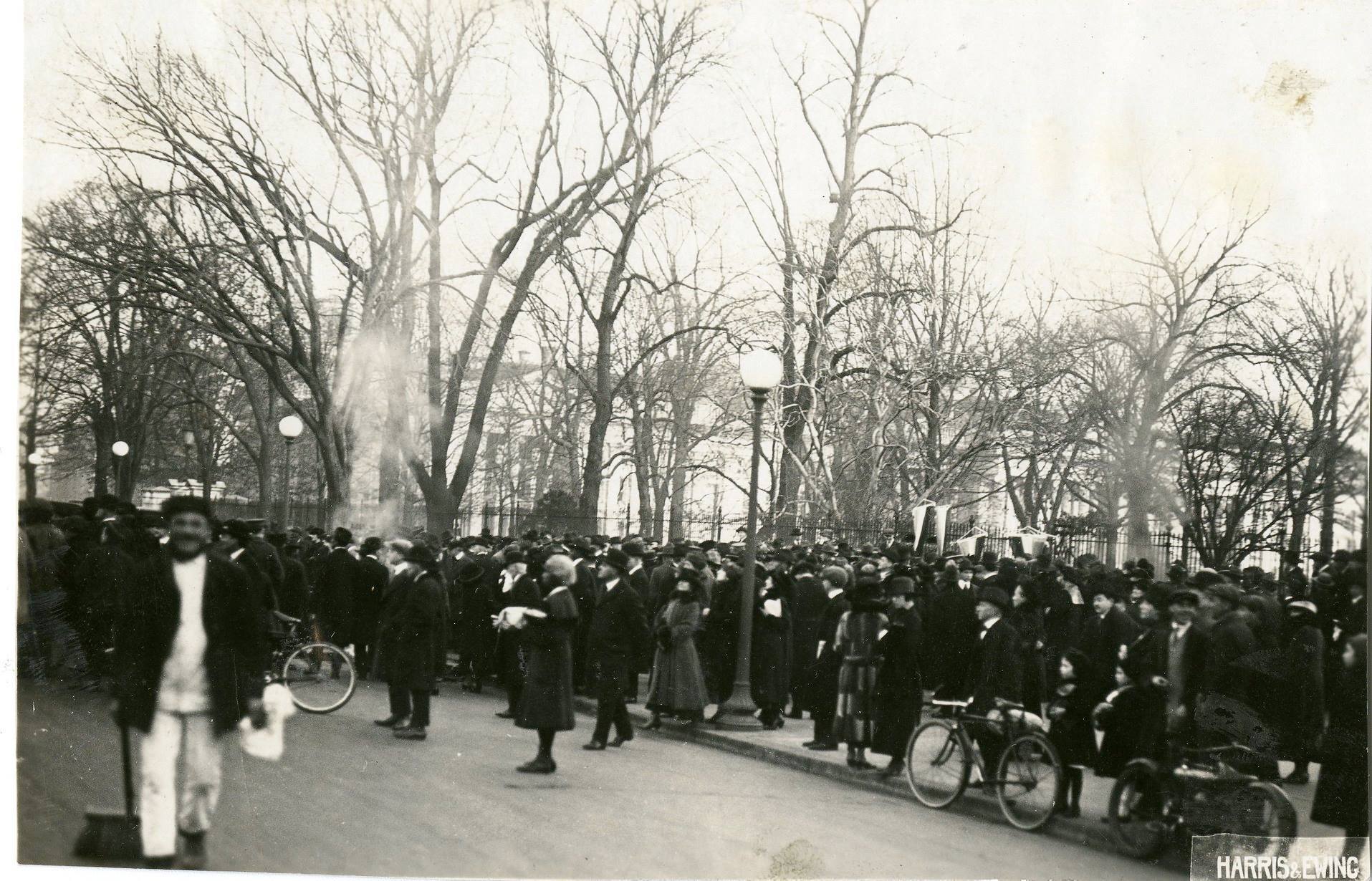 When the amendment failed to pass the Senate in 1918, the NWP began its Watchfires protests burning the president's speeches and even an effigy of the man himself. Crowds inevitably gathered, as seen in this photos, and often the women were arrested.
When the amendment failed to pass the Senate in 1918, the NWP began its Watchfires protests burning the president's speeches and even an effigy of the man himself. Crowds inevitably gathered, as seen in this photos, and often the women were arrested.
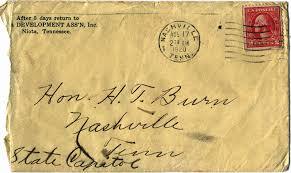 In the summer of 1919, Wilson finally took decisive action, and the House and Senate passed the woman suffrage amendment. The fight moved to the states for ratification. Eventually it all came down to Tennessee the vote of one man, Harry Burn. This is a photo of the letter from Burn's mother that was delivered to him the morning of the vote that made him decide to vote "aye" for suffrage, knowing his constituency would not approve.
In the summer of 1919, Wilson finally took decisive action, and the House and Senate passed the woman suffrage amendment. The fight moved to the states for ratification. Eventually it all came down to Tennessee the vote of one man, Harry Burn. This is a photo of the letter from Burn's mother that was delivered to him the morning of the vote that made him decide to vote "aye" for suffrage, knowing his constituency would not approve.
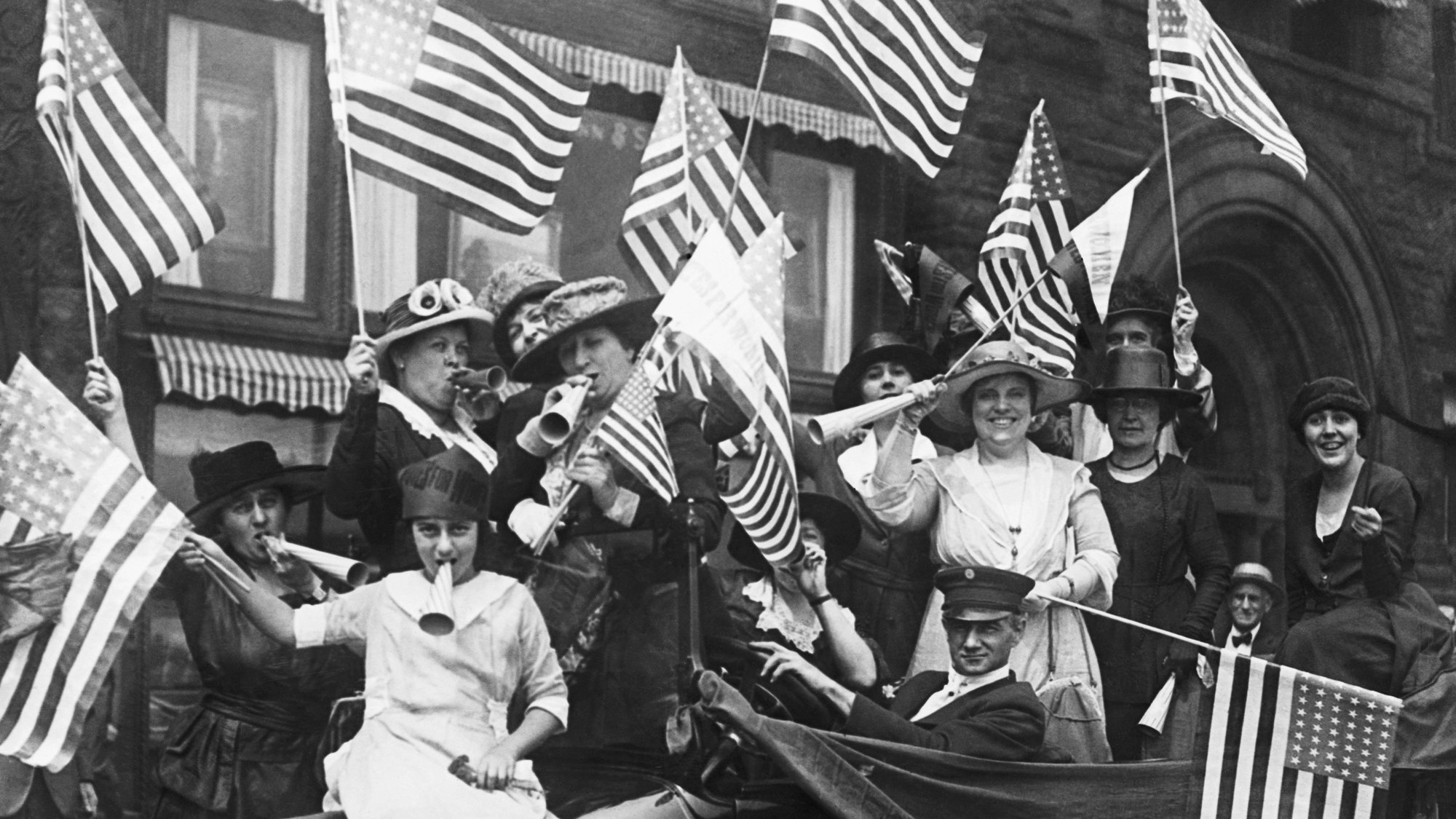 Women across the country celebrated the passage of the 19th Amendment.
Women across the country celebrated the passage of the 19th Amendment.
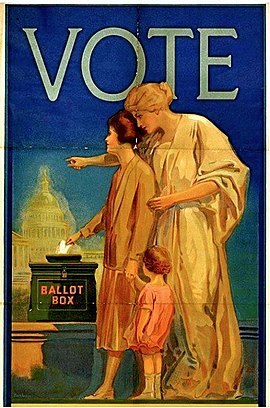 NAWSA evolved into the League of Women Voters and devoted itself to the education of new voters. It continues in this role today.
NAWSA evolved into the League of Women Voters and devoted itself to the education of new voters. It continues in this role today.
 Alice Paul kept the National Woman's Party in operation and began advocating for the Equal Rights Amendment to remove all legal descrimination against woman. Here she is seen in 1969 with one of the original banners from the suffrage fight.
Alice Paul kept the National Woman's Party in operation and began advocating for the Equal Rights Amendment to remove all legal descrimination against woman. Here she is seen in 1969 with one of the original banners from the suffrage fight.
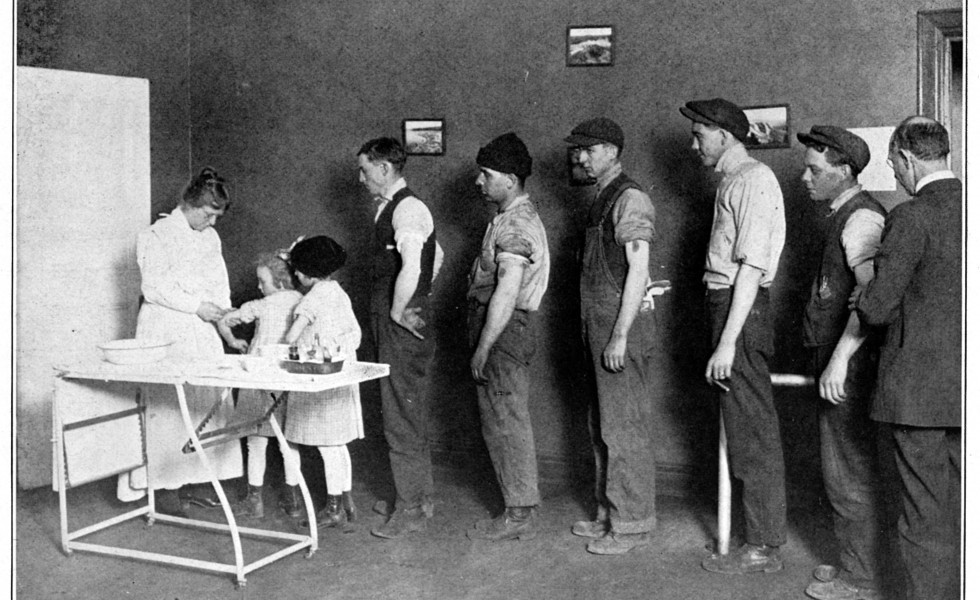 Heroic efforts went into creating a vaccine for Pfieffer's Bacillus, which was believed by many doctors to cause the Spanish Flu. These efforts were all in vain, since Pfeiffer's Bacillus is a fairly common bacteria and not the cause of the flu. The actual cause would not be understood until the existence of viruses was proven in the late 1930s.
Heroic efforts went into creating a vaccine for Pfieffer's Bacillus, which was believed by many doctors to cause the Spanish Flu. These efforts were all in vain, since Pfeiffer's Bacillus is a fairly common bacteria and not the cause of the flu. The actual cause would not be understood until the existence of viruses was proven in the late 1930s.
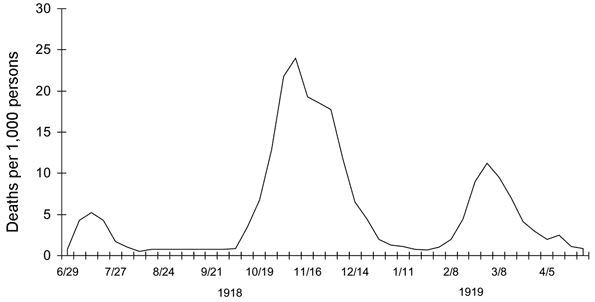 The Spanish Flu hit in three waves, in the the spring of 1918, the fall of 1918, and the spring of 1919. There is no evidence that the relaxing of social distancing and/or quarantines triggered the second wave. It is more likely that the virus mutated into a more easily transmitted and more deadly form over the summer. However, the third wave can be linked to relaxed social distancing.
The Spanish Flu hit in three waves, in the the spring of 1918, the fall of 1918, and the spring of 1919. There is no evidence that the relaxing of social distancing and/or quarantines triggered the second wave. It is more likely that the virus mutated into a more easily transmitted and more deadly form over the summer. However, the third wave can be linked to relaxed social distancing.
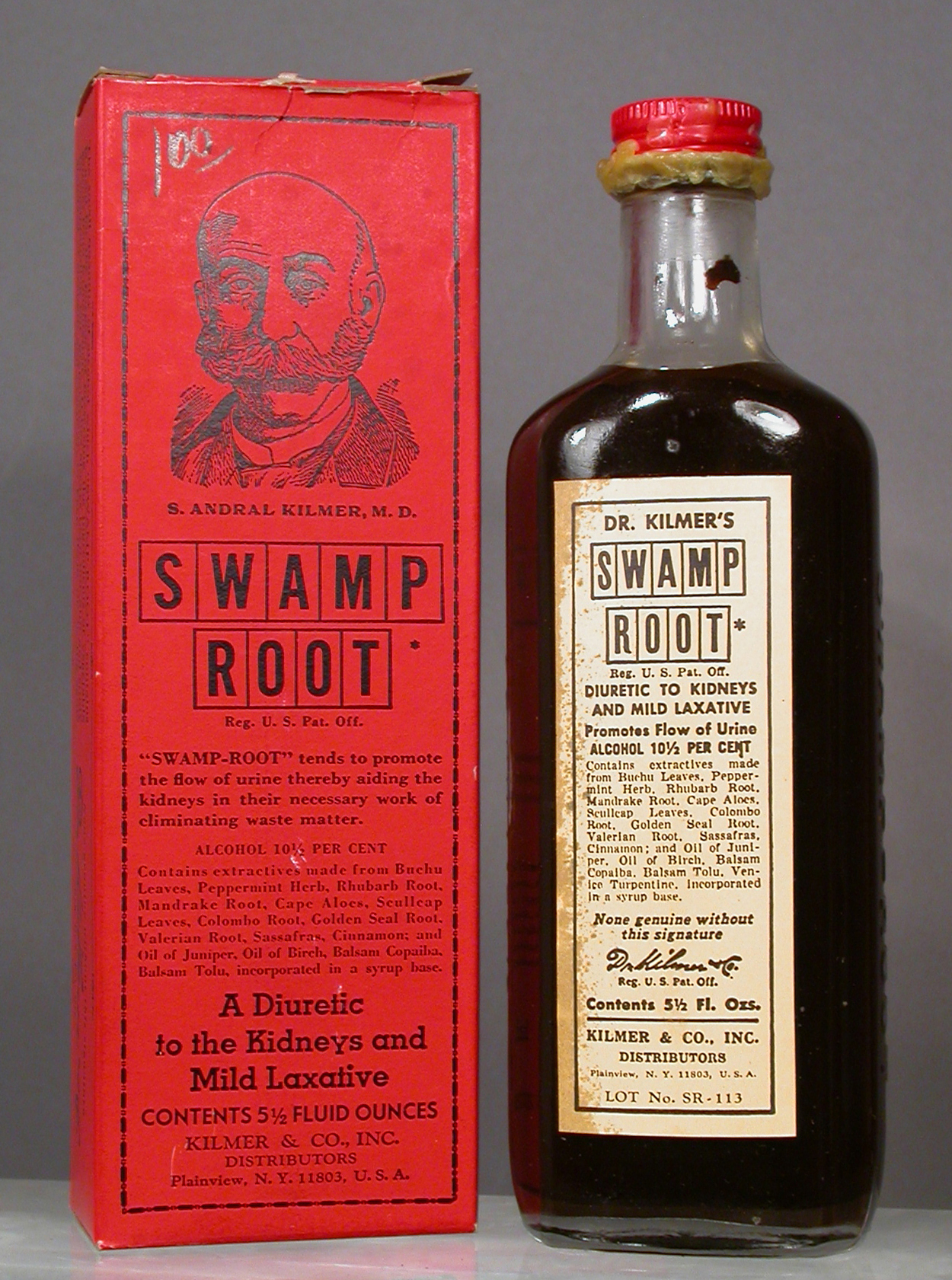

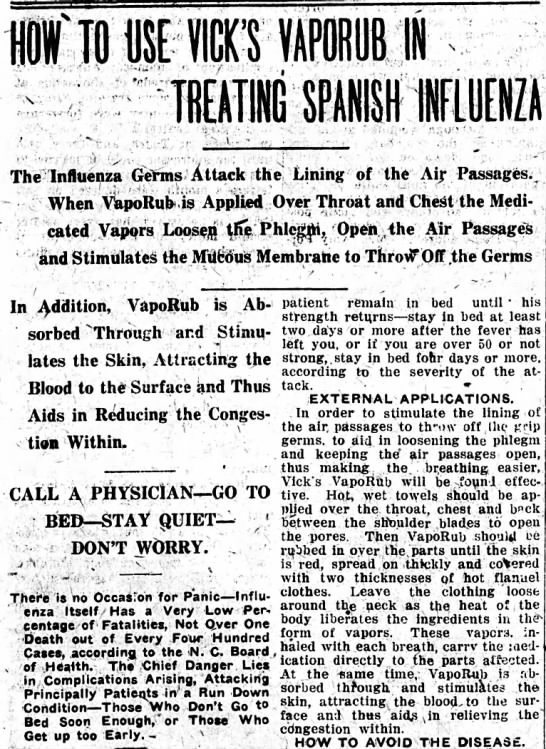 Dr. Kilmer's Swamp Root was a popular patent medicine used to treat the flu. So were onions and Vick's Vapo-Rub.
Dr. Kilmer's Swamp Root was a popular patent medicine used to treat the flu. So were onions and Vick's Vapo-Rub.
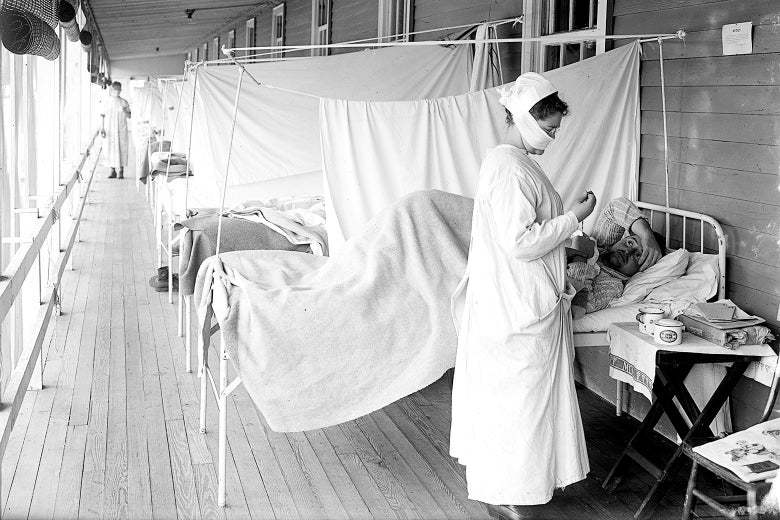 Nurses played an enormous role during the Spanish Flu, perhaps a greater role than doctors, since recovery was largely the matter of careful nursing. A severe shortage of nurses put a huge burden on those trying to treat patients.
Nurses played an enormous role during the Spanish Flu, perhaps a greater role than doctors, since recovery was largely the matter of careful nursing. A severe shortage of nurses put a huge burden on those trying to treat patients.
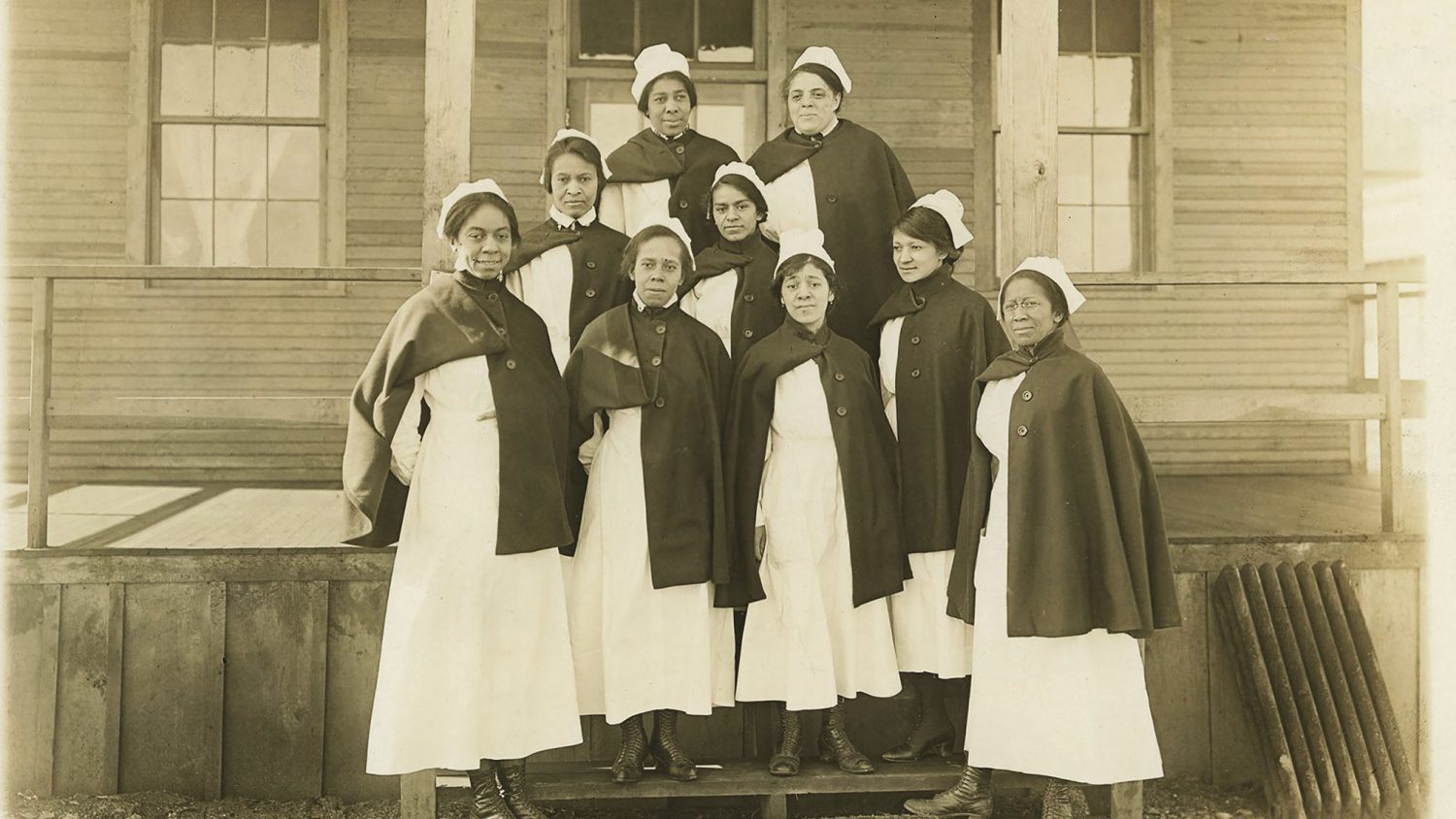 The American health system was strictly segregated in 1918-1919, and nurses of color struggled to treat the patients that overwhelmed the small and underfunded African-American hospitals.
The American health system was strictly segregated in 1918-1919, and nurses of color struggled to treat the patients that overwhelmed the small and underfunded African-American hospitals.
 There was no precedent in 1918 for the federal government to play anything other than a coordinating and research role during the Spanish Flu. But the situation was so dire that states and cities begged for help. Surgeon General Rupert Blue seemed unable to rise to the challenge.
There was no precedent in 1918 for the federal government to play anything other than a coordinating and research role during the Spanish Flu. But the situation was so dire that states and cities begged for help. Surgeon General Rupert Blue seemed unable to rise to the challenge.
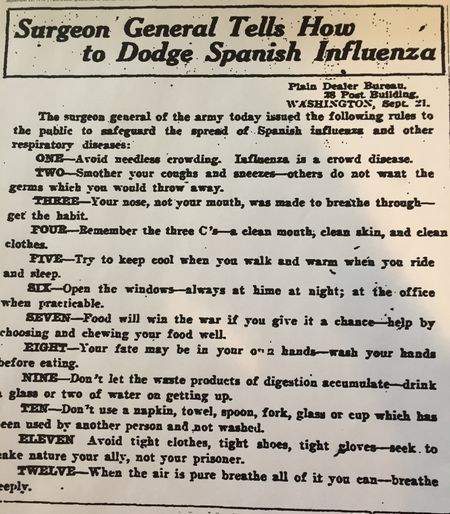 The Surgeon's General's advice on how to avoid the flu was distributed widely but offered little in real help and failed to acknowledge the severity of the situation.
The Surgeon's General's advice on how to avoid the flu was distributed widely but offered little in real help and failed to acknowledge the severity of the situation.
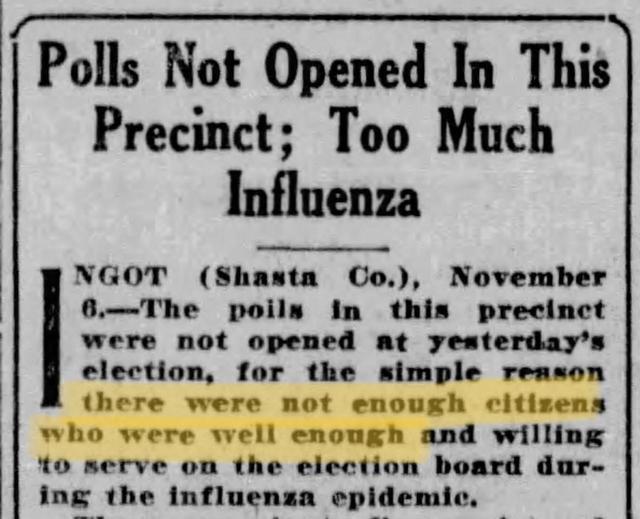 The 1918 mid-term election went ahead as planned, but in parts of the west, polling places were unable to open because too many workers were sick with the flu.
The 1918 mid-term election went ahead as planned, but in parts of the west, polling places were unable to open because too many workers were sick with the flu.
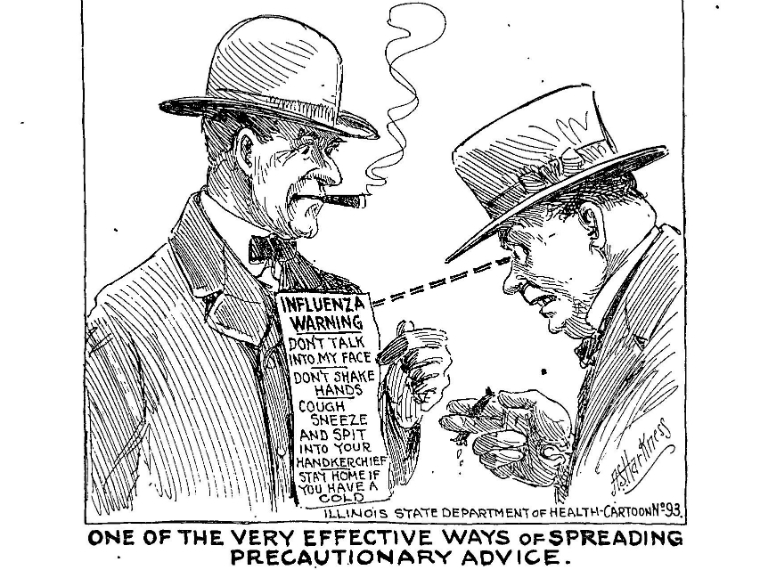 Public campaigns urged individuals to cover their faces when coughing or sneezing and to avoid shaking hands. If this cartoon is any indication, some people thought the efforts were extreme.
Public campaigns urged individuals to cover their faces when coughing or sneezing and to avoid shaking hands. If this cartoon is any indication, some people thought the efforts were extreme.
 Cities railed at residents to stop spitting on the street. This was an enormous problem, although this warning seems particularly stark.
Cities railed at residents to stop spitting on the street. This was an enormous problem, although this warning seems particularly stark.
 Masks were adopted across the country, and some cities mandated their use. The masks became a symbol of the disease. This cartoonist pokes fun at their ubiquity by proposing new styles soon to come out of the Paris fashion houses.
Masks were adopted across the country, and some cities mandated their use. The masks became a symbol of the disease. This cartoonist pokes fun at their ubiquity by proposing new styles soon to come out of the Paris fashion houses.
 San Francisco required residents and visitors to wear face masks, and initially compliance was high. Red Cross workers sold masks at ferry terminals and on the street.
San Francisco required residents and visitors to wear face masks, and initially compliance was high. Red Cross workers sold masks at ferry terminals and on the street.
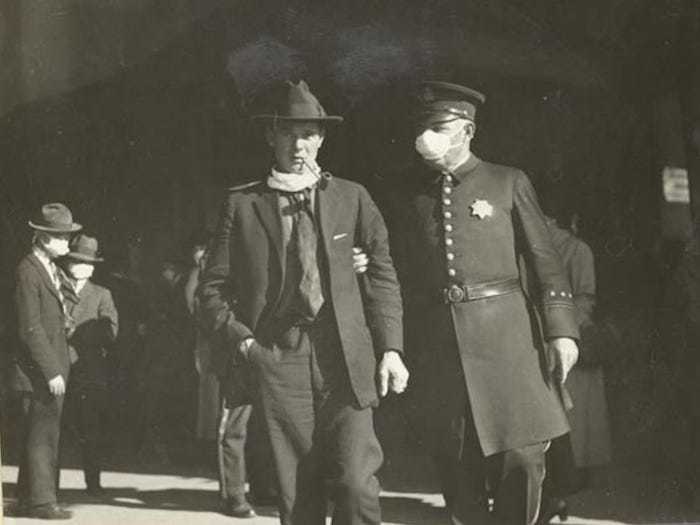 But people soon tired of wearing masks, or wore them slung around their necks. Soon police and public health officers were busy fining and arresting scofflaws.
But people soon tired of wearing masks, or wore them slung around their necks. Soon police and public health officers were busy fining and arresting scofflaws.
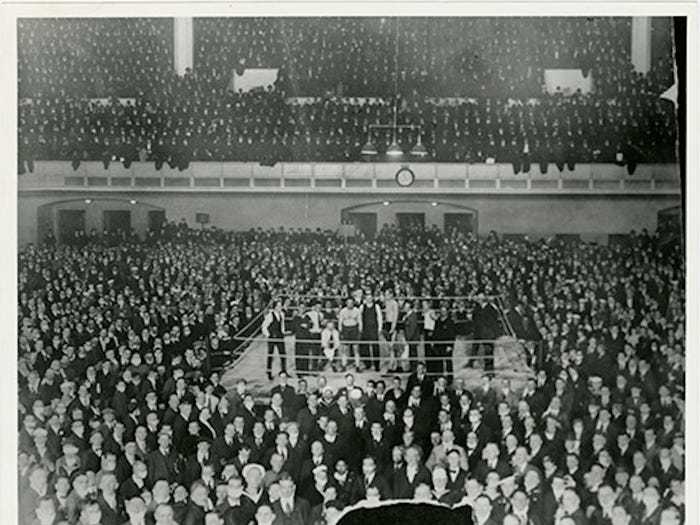 Crowds packed the Civic Auditorium for a boxing match in November 1918, and a photographer snapped this image of hundreds of San Franciscans without a mask in sight. Dozens of city leaders were fined for violated the mask ordinance. The ordinance was lifted a few days later.
Crowds packed the Civic Auditorium for a boxing match in November 1918, and a photographer snapped this image of hundreds of San Franciscans without a mask in sight. Dozens of city leaders were fined for violated the mask ordinance. The ordinance was lifted a few days later.
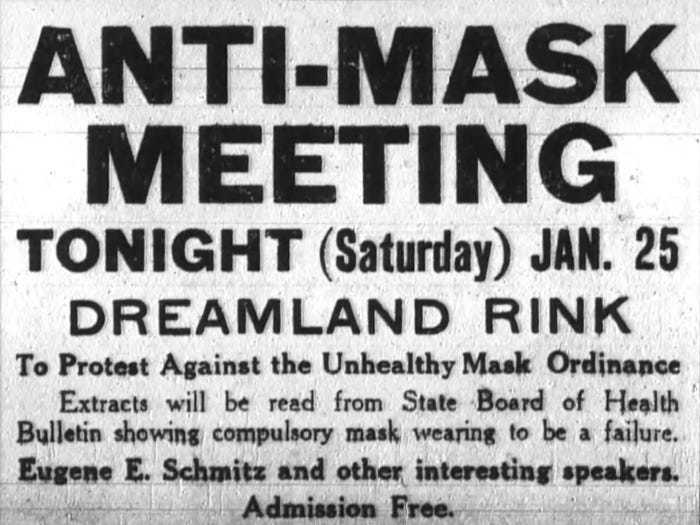 However, the ordinance was re-imposed in January when the flu returned to San Francisco. This time, opposition to masks was not just heated but organized. An anti-mask league held a meeting to which up to 5000 people attended.
However, the ordinance was re-imposed in January when the flu returned to San Francisco. This time, opposition to masks was not just heated but organized. An anti-mask league held a meeting to which up to 5000 people attended.
 Violet Harris was 15 years old and living in Seattle when the flu closed schools. She kept a diary that gives a sense of life during the shut down.
Violet Harris was 15 years old and living in Seattle when the flu closed schools. She kept a diary that gives a sense of life during the shut down.
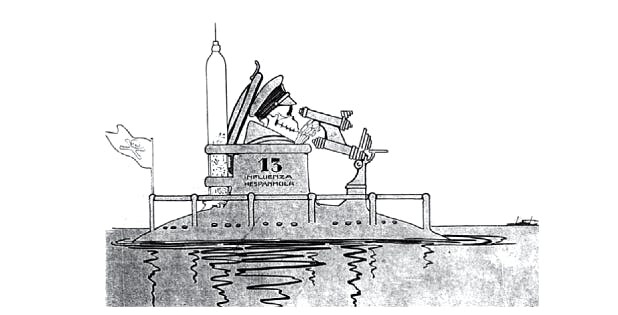 Some rumors traced the flu pandemic to German scientists and claimed the disease was spread by German submarines. This Brazilian cartoon conveys in this a rather grim way.
Some rumors traced the flu pandemic to German scientists and claimed the disease was spread by German submarines. This Brazilian cartoon conveys in this a rather grim way.
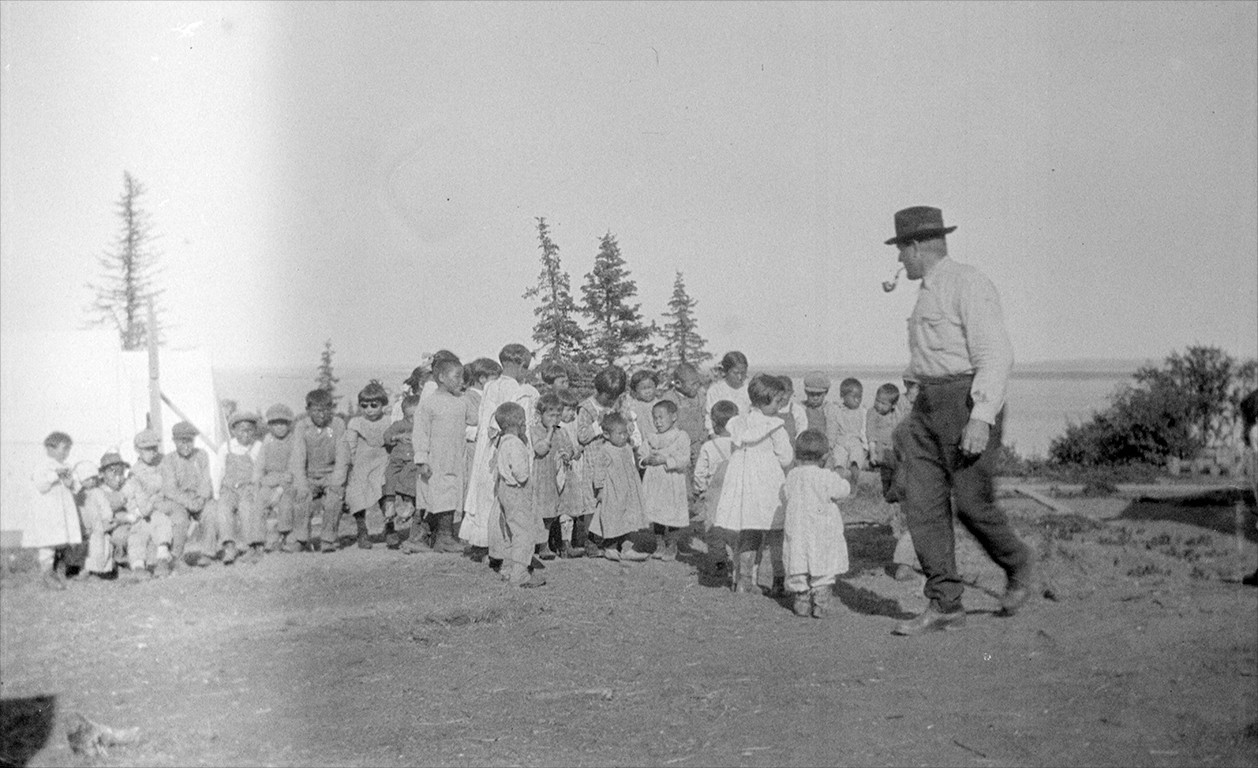 Hundreds of thousands of children were left orphaned by the Spanish Flu. This photo shows a group of children who lost their families when the flu raged through the Bristol Bay region of Alaska.
Hundreds of thousands of children were left orphaned by the Spanish Flu. This photo shows a group of children who lost their families when the flu raged through the Bristol Bay region of Alaska.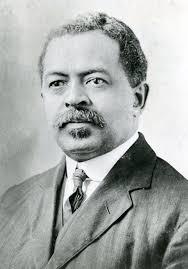 William Monroe Trotter was one of the most significant civil rights leaders in Amerian history, yet he is little remembered today.
William Monroe Trotter was one of the most significant civil rights leaders in Amerian history, yet he is little remembered today.
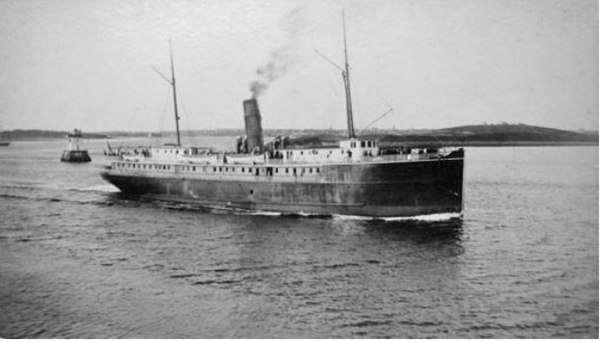 Trotter crossed the Atlantic on the SS Yarmouth as assistant cook--a strange position for a Harvard graduate with two degrees and a Phi Beta Kappa key.
Trotter crossed the Atlantic on the SS Yarmouth as assistant cook--a strange position for a Harvard graduate with two degrees and a Phi Beta Kappa key.
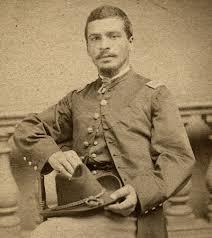 Trotter's father James Monroe Trotter fought in the 55th Massachusetts Infantry Regiment during the Civil War. Afterward, he served as the first Recorder of Deeds for the District of Columbia, a lucrative position where he earned a small fortune. James' only son William would inherit both wealth and influence, but James insisted that this privilege should be employed to fight for African-American rights.
Trotter's father James Monroe Trotter fought in the 55th Massachusetts Infantry Regiment during the Civil War. Afterward, he served as the first Recorder of Deeds for the District of Columbia, a lucrative position where he earned a small fortune. James' only son William would inherit both wealth and influence, but James insisted that this privilege should be employed to fight for African-American rights.
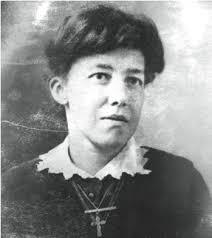 In 1899, William Monroe Trotter married Geraldine Pindell, known by friends and family as Deenie. She was passionate about civil rights as her husband.
In 1899, William Monroe Trotter married Geraldine Pindell, known by friends and family as Deenie. She was passionate about civil rights as her husband.
 A year after his marriage, Trotter decided to fulfill the mission laid upon him by his father by publishing a newspaper, The Guardian. The weekly was dedicated to exposing racial issues across the United States.
A year after his marriage, Trotter decided to fulfill the mission laid upon him by his father by publishing a newspaper, The Guardian. The weekly was dedicated to exposing racial issues across the United States.
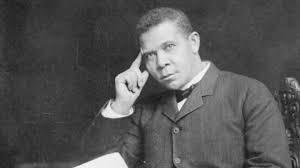 In 1905, Trotter, along with W.E.B. DuBois and several other black leaders, founded The Niagara Movement to advocate for civil rights and counter the message of the Tuskegee Machine. The organization collapsed within two years, largely because Trotter was so difficult to work with.
In 1905, Trotter, along with W.E.B. DuBois and several other black leaders, founded The Niagara Movement to advocate for civil rights and counter the message of the Tuskegee Machine. The organization collapsed within two years, largely because Trotter was so difficult to work with.
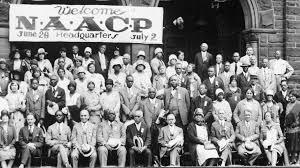 In 1909, DuBois joined other activists to establish the NAACP with much the same aims. Trotter rejected the group, which he saw as dominated by white donors and leaders and too timid to tackle real issues. In response, he founded his own organization, which in time would take the name the National Equal Rights League, or NERL.
In 1909, DuBois joined other activists to establish the NAACP with much the same aims. Trotter rejected the group, which he saw as dominated by white donors and leaders and too timid to tackle real issues. In response, he founded his own organization, which in time would take the name the National Equal Rights League, or NERL.
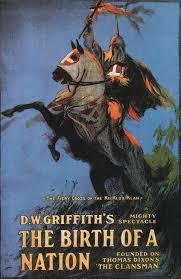 The 1915 film The Birth of a Nation prompted immediate reaction from both the NAACP and Trotter's NERL. But those reactions took different forms. The NAACP focused on legal challenges and attempts to disprove the historical accuracy of the movie. The NERL organized public protests intended to demonstrate the depth of African-American opposition to whites.
The 1915 film The Birth of a Nation prompted immediate reaction from both the NAACP and Trotter's NERL. But those reactions took different forms. The NAACP focused on legal challenges and attempts to disprove the historical accuracy of the movie. The NERL organized public protests intended to demonstrate the depth of African-American opposition to whites.
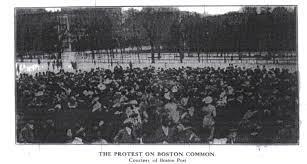 Among the protests Trotter organized was this one in Boston Common. The photo is extremely poor quality, but you can get a sense of the size of the crowd.
Among the protests Trotter organized was this one in Boston Common. The photo is extremely poor quality, but you can get a sense of the size of the crowd.
 At another Trotter-organized event, 11 protestors were arrested for disturbing the peace. Trotter was among them.
At another Trotter-organized event, 11 protestors were arrested for disturbing the peace. Trotter was among them.
 At the end of the Great War, a dozen or so other delegates were elected to present an appeal for equal rights and justice to the Peace Conference. Among them were Trotter and Madam C J Walker. Walker has an incredible story--she built her business selling cosmetics and hair care products to African-American women into one of wealthiest and most successful in the country.
At the end of the Great War, a dozen or so other delegates were elected to present an appeal for equal rights and justice to the Peace Conference. Among them were Trotter and Madam C J Walker. Walker has an incredible story--she built her business selling cosmetics and hair care products to African-American women into one of wealthiest and most successful in the country.
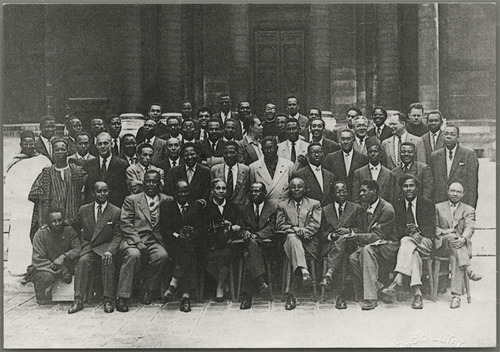 At the same time Trotter was trying to get to Paris to present his appeal, W.E.B. Du Bois was organization the Pan-African Congress, which included representatives from African nations and the African diaspora.
At the same time Trotter was trying to get to Paris to present his appeal, W.E.B. Du Bois was organization the Pan-African Congress, which included representatives from African nations and the African diaspora.
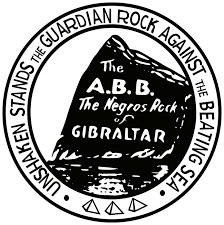 When Trotter returned home from Paris, Red Summer had begun. Trotter focused on creating a new organization that would help African-Americans defend themselves, using force against force.
When Trotter returned home from Paris, Red Summer had begun. Trotter focused on creating a new organization that would help African-Americans defend themselves, using force against force.
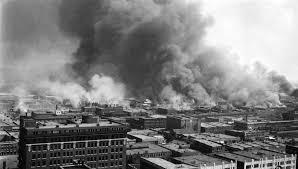 The ABB ceased to be a secret in 1921 when the armed response of African-Americans during the Tulsa Race Massacre horrified white Americans. The ABB was accused of conspiracy with all of the usual suspects of the era, including the Reds and the Wobblies. In this case, the Reds, were, in fact, a factor. Within a few years, the ABB had been absorbed by the American Communist Party.
The ABB ceased to be a secret in 1921 when the armed response of African-Americans during the Tulsa Race Massacre horrified white Americans. The ABB was accused of conspiracy with all of the usual suspects of the era, including the Reds and the Wobblies. In this case, the Reds, were, in fact, a factor. Within a few years, the ABB had been absorbed by the American Communist Party.
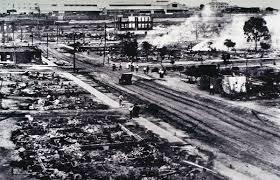 As these images show, whole blocks of Tulsa were burned to the ground, including the entire Greenwood Neighborhood, known as the "Negro Wall Street." It's unknown how many people died in Tulsa
As these images show, whole blocks of Tulsa were burned to the ground, including the entire Greenwood Neighborhood, known as the "Negro Wall Street." It's unknown how many people died in Tulsa
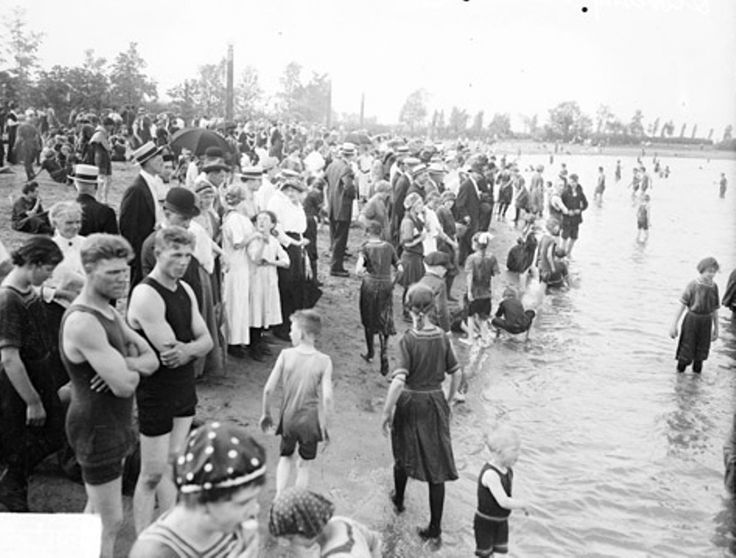 Chicago's beaches in 1919 were not segregated by law, but any attempt by African-Americans to stand up to convention could prompt harsh and sudden violence. This is the white beach on the South Side, which started around 29th street.
Chicago's beaches in 1919 were not segregated by law, but any attempt by African-Americans to stand up to convention could prompt harsh and sudden violence. This is the white beach on the South Side, which started around 29th street.
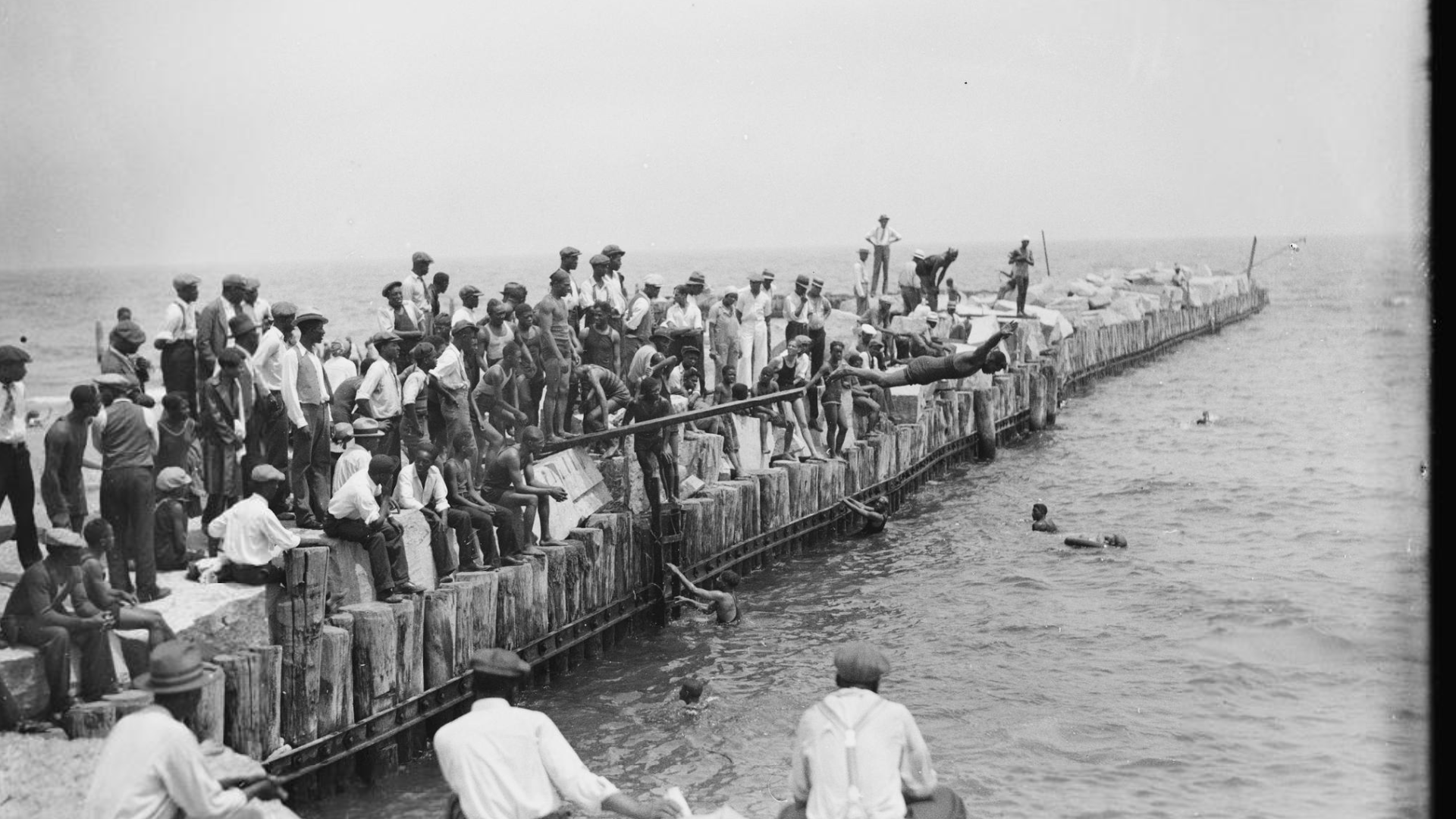 The beach used by African-Americans was a few blocks north, around 25th street. The two beaches were divided by a rocky inlet--and as five teenaged boys discovered that July, the line between them was all to easy to cross.
The beach used by African-Americans was a few blocks north, around 25th street. The two beaches were divided by a rocky inlet--and as five teenaged boys discovered that July, the line between them was all to easy to cross.
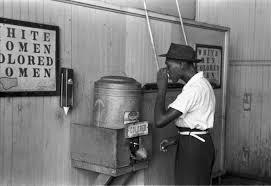 In the South, the Jim Crow system enforced the segregation of all public places. African-Americans couldn't eat in the same restaurants, sleep in the same hotels, sit in the same movie theaters, use the same restrooms, or even drink the same water as whites.
In the South, the Jim Crow system enforced the segregation of all public places. African-Americans couldn't eat in the same restaurants, sleep in the same hotels, sit in the same movie theaters, use the same restrooms, or even drink the same water as whites.
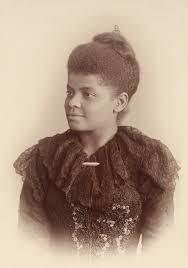 Ida B. Wells had not intended to take on the cause of lynching until her friend Thomas Moss was dragged out of jail and shot in a railyard. Her investigation into lynching was a bombshell that shattered the Southern narrative about racial violence.
You can read Wells' original report, titled "Southern Horrors: Lynch Law in All Its Phases," (https://www.gutenberg.org/files/14975/14975-h/14975-h.htm) online.
Ida B. Wells had not intended to take on the cause of lynching until her friend Thomas Moss was dragged out of jail and shot in a railyard. Her investigation into lynching was a bombshell that shattered the Southern narrative about racial violence.
You can read Wells' original report, titled "Southern Horrors: Lynch Law in All Its Phases," (https://www.gutenberg.org/files/14975/14975-h/14975-h.htm) online.
 General Pershing likely never intended the 369th Infantry Regiment, the Harlem Hellraisers, to fight on the front lines, but under pressure from the Allies he turned them over to French command. They served with courage and distinction and won the respect and admiration of the entire French nation.
General Pershing likely never intended the 369th Infantry Regiment, the Harlem Hellraisers, to fight on the front lines, but under pressure from the Allies he turned them over to French command. They served with courage and distinction and won the respect and admiration of the entire French nation.
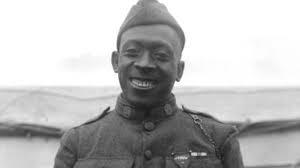 Private Henry Johnson fought off a 24-man German patrol alone while wounded. He was awarded the French Croix de Guerre--but received no medals from his own country.
Private Henry Johnson fought off a 24-man German patrol alone while wounded. He was awarded the French Croix de Guerre--but received no medals from his own country.
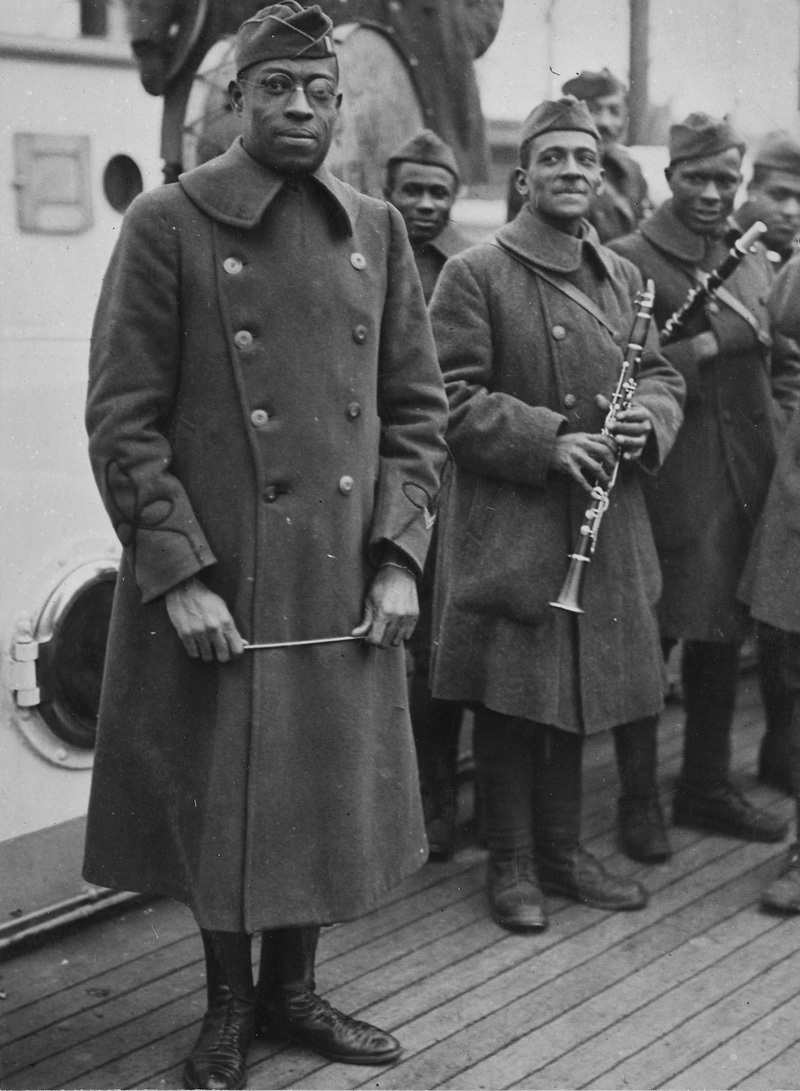 James Reese Europe served as the 369th's regimental band leader. A brilliant musician, conductor, composer, and arranger, he brought jazz to France.
James Reese Europe served as the 369th's regimental band leader. A brilliant musician, conductor, composer, and arranger, he brought jazz to France.
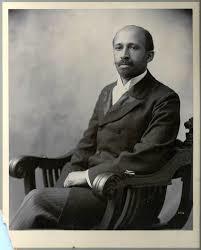 Author W.E.B. DuBois electrified readers of the NAACP magazine The Crisis with his essay "Returning Soldiers," which urged African-American veterans to fight racism at home. You can read the essay online (https://glc.yale.edu/returning-soldiers).
Author W.E.B. DuBois electrified readers of the NAACP magazine The Crisis with his essay "Returning Soldiers," which urged African-American veterans to fight racism at home. You can read the essay online (https://glc.yale.edu/returning-soldiers).
 Riots broke out in early summer in Charleston, South Carolina; Longview, Texas; and Washington, D.C. This sort of scene was happened frequently--black men were dragged out of trolley, as well as seized walking down the street or yanked out of businesses to be beaten by a white mob.
Riots broke out in early summer in Charleston, South Carolina; Longview, Texas; and Washington, D.C. This sort of scene was happened frequently--black men were dragged out of trolley, as well as seized walking down the street or yanked out of businesses to be beaten by a white mob.
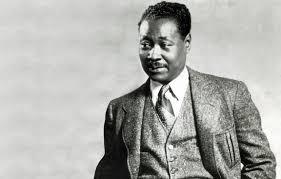 Poet Claude McKay wrote "If We Must Die" in 1919 in the same spirit as Du Bois' "Returning Soldiers." It was a call for African-Americans to stand up and defend themselves against white attacks. You can read the poem online (https://www.poetryfoundation.org/poems/44694/if-we-must-die) or listen to Ice-T read it. (https://www.youtube.com/watch?v=nqy7uUdNwK0)
Poet Claude McKay wrote "If We Must Die" in 1919 in the same spirit as Du Bois' "Returning Soldiers." It was a call for African-Americans to stand up and defend themselves against white attacks. You can read the poem online (https://www.poetryfoundation.org/poems/44694/if-we-must-die) or listen to Ice-T read it. (https://www.youtube.com/watch?v=nqy7uUdNwK0)
 During the Chicago riot, bands of white men prowled the city looking for African-Americans. Here a group of men are running through a black neighborhood.
During the Chicago riot, bands of white men prowled the city looking for African-Americans. Here a group of men are running through a black neighborhood.
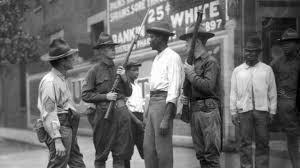 Order was finally restored when the state militia arrived. Generally, the soldiers were impartial and prevent further attacks on African-Americans, but encounters between white troops and black men were still fraught.
Order was finally restored when the state militia arrived. Generally, the soldiers were impartial and prevent further attacks on African-Americans, but encounters between white troops and black men were still fraught.
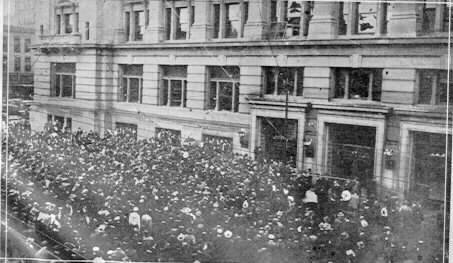 The riot in Omaha, Nebraska drew an enormous crowd, estimated at anything from 5000 to 15,000. Here you can see some of that mob surrounding the Omaha courthouse, which they eventually set alight.
The riot in Omaha, Nebraska drew an enormous crowd, estimated at anything from 5000 to 15,000. Here you can see some of that mob surrounding the Omaha courthouse, which they eventually set alight.


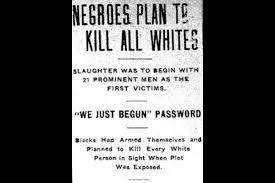 Newspapers across Arkansas ran headlines about the supposed uprising of African-Americans in Phillips County.
Newspapers across Arkansas ran headlines about the supposed uprising of African-Americans in Phillips County.
 Conductor and intelligence agent Water H. Loving submitted a report to the Department of War that explained that socialist, communist, and labor organizers had nothing to do with the violence in 1919; rather, African-Americans had decided enough was enough. His report was shelved and ignored.
Conductor and intelligence agent Water H. Loving submitted a report to the Department of War that explained that socialist, communist, and labor organizers had nothing to do with the violence in 1919; rather, African-Americans had decided enough was enough. His report was shelved and ignored.